K EENELAND
celebrating bluegrass traditions









celebrating bluegrass traditions










Comprehensive primary care close to home.
At CHI Saint Joseph Health, we are your partner for a lifetime of health and wellness. Together, we’ll develop a personalized care plan to keep you and your family healthy, including regular checkups, essential screenings, and lifestyle guidance.
Visit CHISaintJosephHealth.org or scan the QR code.









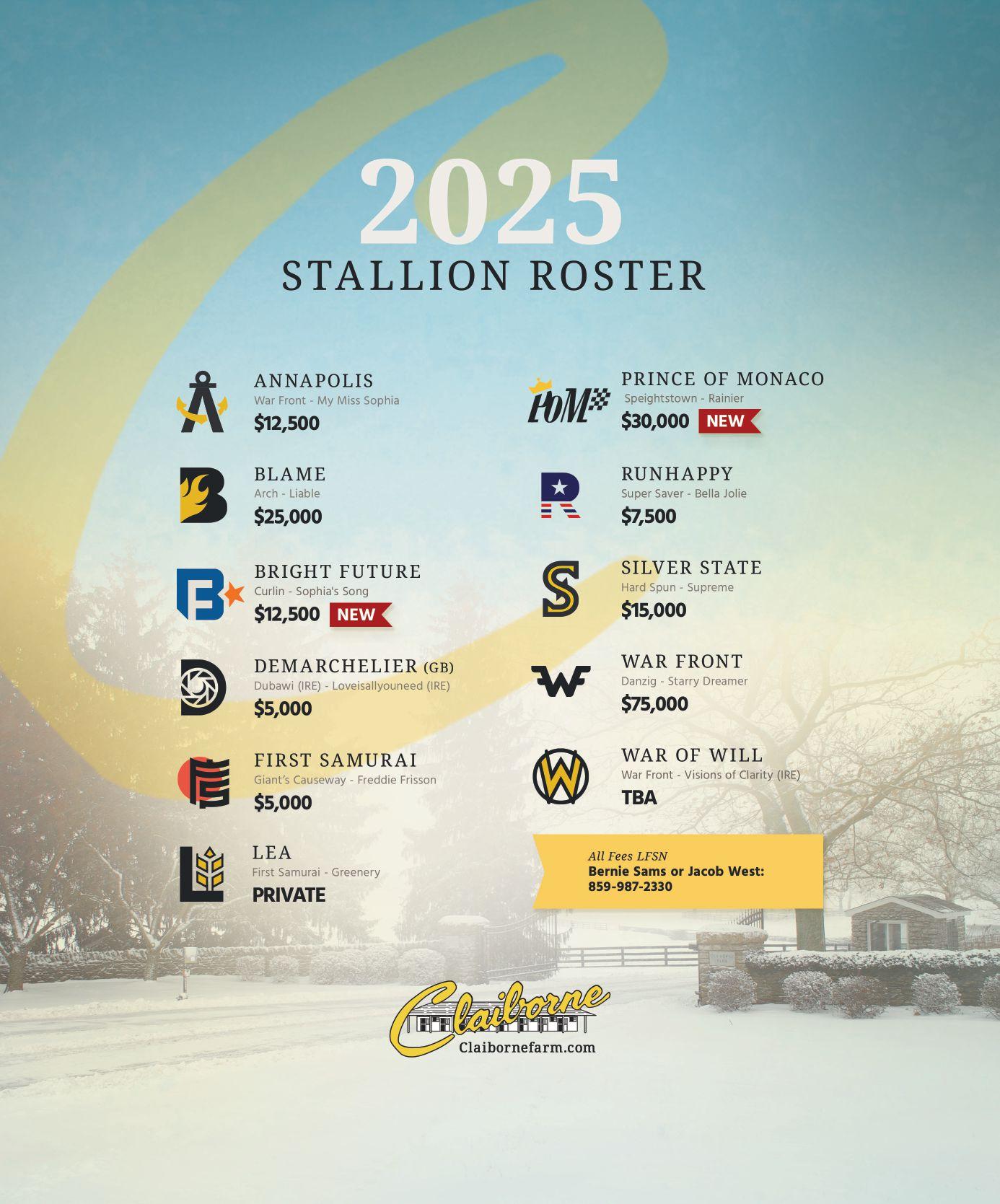

1st H Allen Jerkens Memorial Stakes [G1], 7f, Saratoga, (below) defeating G1 winners Prince of Monaco, Book’em Danno, and Timberlake
1st Dwyer Stakes [G3], 1m, Belmont At The Big A, by 7½ lengths
1st Tampa Bay Derby [G3], 11⁄16m, Tampa Bay Downs
1st MSW, 11⁄8m, Belmont At The Big A
2nd Holy Bull Stakes [G3], 11⁄16m, Gulfstream Park
Beyer Speed Figure of 106. No other horse in 2024 has recorded higher on the main track at up to one mile.
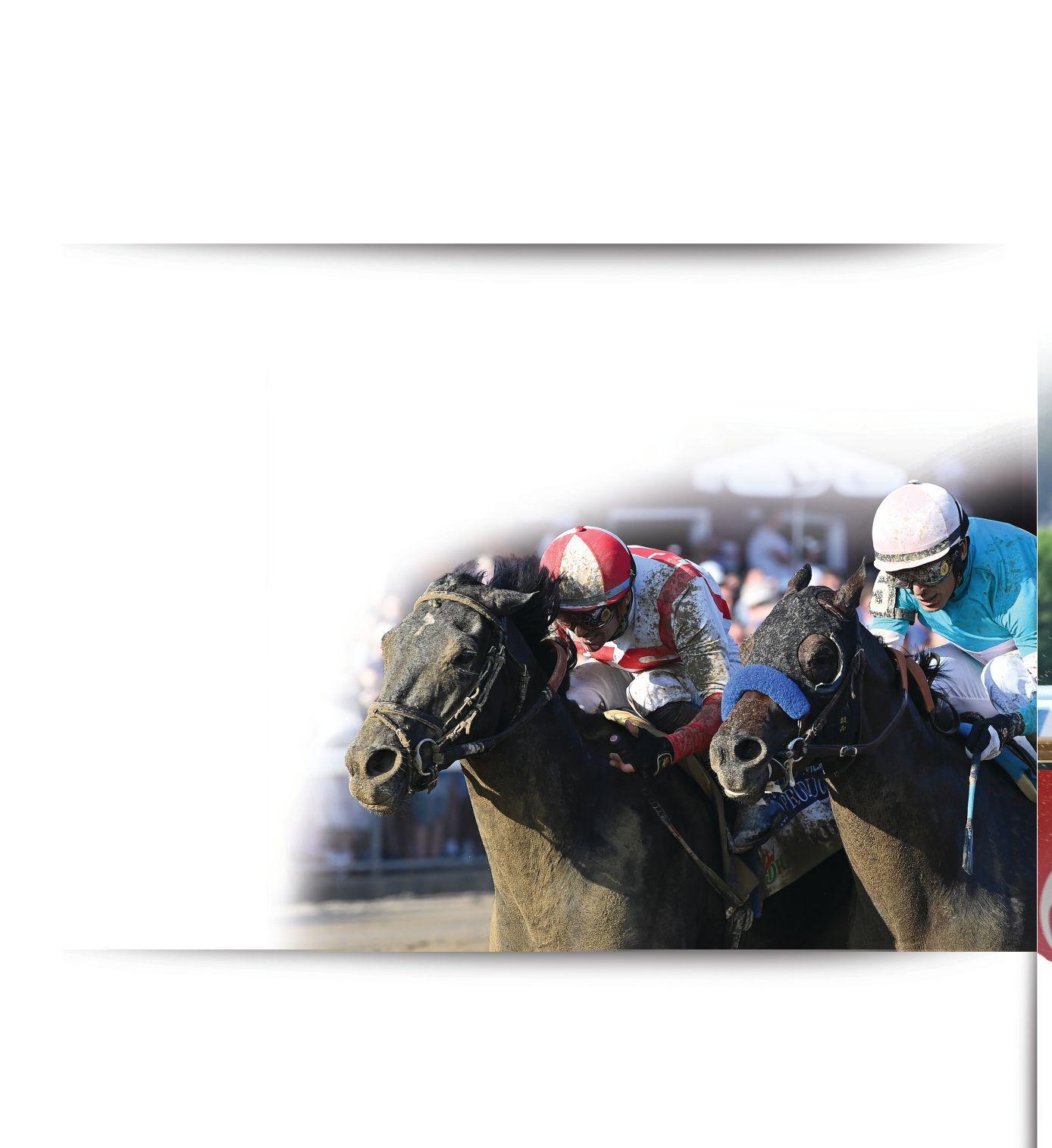
Domestic Product has always been an outstanding prospect who identified himself very early in his works…He’s an incredible physical; a really striking, almost black horse with excellent conformation.” Trainer Chad Brown

He launched while three deep entering the far turn, hit the front as they straightened for home and blasted off to score by 7½ lengths.” TDN after the Dwyer


OLD RICHMOND Country
living at its best! Lovely, completely renovated two story Bedford stone and vinyl home on 32.94 acres (additional 2 acres are available). Located within the Hunt County neighborhood and Jack’s Creek - 7 miles from Jacobson Park. Tis four large bedroom, three bath home is approximately 4,808 square feet, including a frst-foor primary suite or family room, a second-foor primary suite - both with custom new baths, and a fnished lowerlevel apartment. A completely-renovated 12 stall converted tobacco barn exquisitely tops of this must-see property!


277 SWIGERT Literally minutes from Te Kentucky Horse Park and downtown Lexington, this 34.18 acre horse property showcases a 2,180 SF 2 bedroom, 2 bath owner’s suite with a 2 car garage with builtin storage, a half bath, utility room, and dog wash. With frontage on Swigert and Faulkner, this wonderful farm features a 4 stallbarnthatcouldbeconvertedinto6stalls. Additional improvements include a 400 sq f guest studio, new fencing throughout, 3 run-in sheds, round pen, outdoor kitchen, hardscape gardens, and pond.


A SLICE OF HEAVEN Located in historic Harrodsburg and convenient to Lexington. Custom French chateau on 9.62 acres. 6,043 SF of living space on 3 levels, theater room, exercise room, wine cellar, bonus room, butler's pantry, top of the line appliances & home generator. Inground pool, pool house in a 40' x 80' garage/storage building with two 14' garage doors. Tis beautiful property includes a 4 stall barn, wash stall, hay storage, 1/2 bath, & ofce/ tack room. Plank fencing, 3 paddocks (2 with automatic waterers) & stocked pond. Meticulously cared for!!!


PEGASUS LANE
Located just 3.2 miles from Iron Works and only 5 miles to the entrance of the Kentucky Horse Park, this 15.8 acre horse farm is suitable for any discipline. Te show horse world will truly appreciate its quality improvements and great location in the immediate area of Kessler Show Stables, Six Winters, and the newly developed Lagado Farm at Mt. Horeb. It would also be an excellent thoroughbred sales prep facility with its 26–stall horse barn with jog around and six horse Swedish Walker. Improvements include an ofce/groom’s quarters with full bath in the barn; and currently under construction– a two bedroom, two bathroom Morton Building.
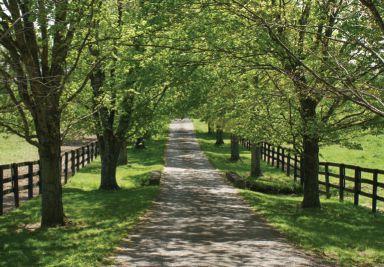

CORNER WOODS First time on the marketinover40+years!Tis198±acrefarm farm is as beautiful as it is known for producing superior racehorses. Improvements include the inviting 5200 SF historic main residence (with elevator); 3000 SF Manager’s home; two employee houses, fve barns with 50 stalls. Located on the corner of Ferguson and Greenwich Pikes with excellent soils. A long tree-lined drive gradually reveals the 1866 primary residence Positioned at the highest point on the property, this wonderful home provides great views of its paddocks and felds interspersed with woods and 5 creek beds.
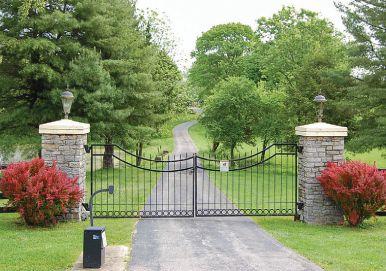

Located just minutes fromdowntownLexington,theinterstate,and Hamburg, this 10 acre horse farm features a ranch style home with 3 bed, 2 ½ baths, family room, ofce, and hardwood foors on the frst level; a lower level apartment with an exterior entrance. A 6 stall barn featuring a wash stall, feed & tack rooms, bath, and lof. Additional improvements include an outdoor ring, 2 car detached garage and a metal storage building. Te home overlooks a lovely pond and mature trees.
Synonymous with the best thoroughbred racing and breeding in the world and combined with generations of entrepreneurial wealth and philanthropy, the Marylou Whitney Farm is a special place with a unique history. For 76 years the farm has been an elegant gathering placeforfamily,Hollywoodstars,worldleaders,andhorseracingelite.
Te 72-acre estate, with the Elkhorn Creek meandering through it, is bordered by the historic Gainesway Farm. Originally acquired in 1782 by the Rodgers family, the brick residence was built by their son John in 1794 and is the crowning jewel of Maple Hill. Marylou’s imagination transformed a dilapidated red brick farm house into a pristine 8,400 SF white Federal-style mansion. Straight out of a storybook the Whitney House unveils itself elegantly, surrounded by bucolic maples, lavish rose gardens and winding brick paths. Making extensive changes inside and out, geothermal heating and air have been installed, and all windows, less one, have been recently replaced. Adjacent to the main residence is a four-car detached garage and former staf quarters—now ofces consisting of three rooms, an eat-in kitchen, and three baths. In addition to the improvements already mentioned, the farm includes an art studio with full bath constructed on the site of the former smoke house overlooking the Elkhorn Creek and a 1,950 SF manager’s home with a two-car detached garage. Marylou renovated the two-story brick guest house and installed the formal rose gardens. Adding to the farm’s charm, she bought and rebuilt Daniel Boone’s wife Rebecca’s log cabin which is now the farm’s chapel




Sonny and Marylou hosted their annual Derby Eve parties in its Romanesque atrium housing the Olympic-size swimming pool. Celebrities, movie stars, millionaires, and politicians the likes of Ginger Rogers, Gregory Peck, Ronald and Nancy Reagan, Henry Kissinger, Walter Cronkite, and Princess Margaret attended the themed soirees where a bridge covered in tables with white linens spanned the pool for VIP seating. Te pool, with a center depth of 12’, is surrounded by its terrazzo foor, a vaulted ceiling, and glasstiled roof. Te entertaining space is complete with six sets of French doors, palms and other tropical plants, a kitchen, lounge, and his and her changing rooms with showers.
Fully-fenced for horses, the farm contains a 10-stall horse barn with a shop, ofce, and feed room plus a 6-stall horse barn and two equipment sheds.


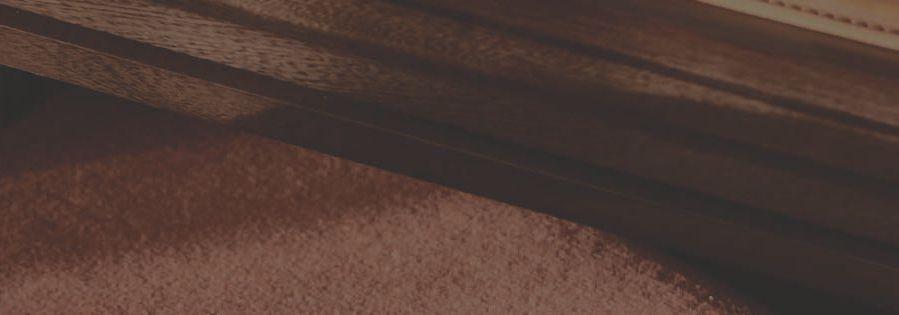

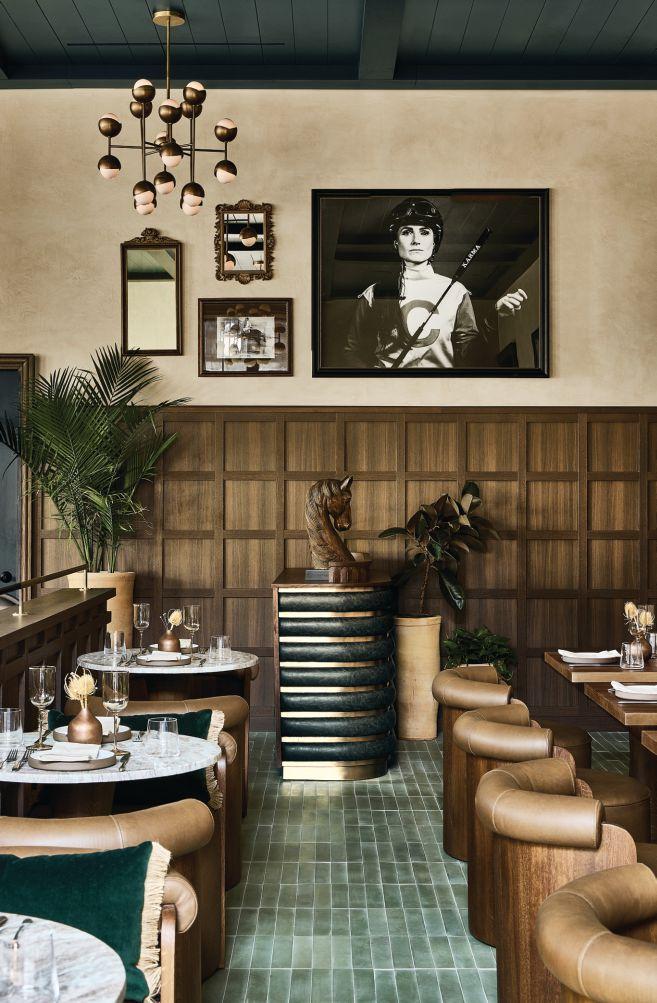




by Lenny Shulman
Brazilian-owned and Kentucky-based Bonne Chance Farm is having an impact at the Keeneland sales and on the international racing scene.

by Liane Crossley
Hall of FamerWise Dan relishes life of leisure at trainer’s Lexington farm.
by Kim Kobersmith
The Kentucky BourbonTrail, celebrating 25 years, has developed into a major tourist attraction that has helped put the state and its signature beverage on the world map.

by Jacalyn Carfagno
The Pinnacles of the Berea College Forest offer hiking and tremendous views.
by Patti Nickell
The Bluegrass Hospitality Group has gone from a single steakhouse to a conceptdriven restaurant empire that includes everything from high-end dining to sushi and burgers.



Keeneland’s Barn
Oil on board, 27 x 29, by Quang Ho Quang Ho came to America with his family at age 12 in 1975. His interest in art was apparent as early as age 3, and he graduated from the Colorado Institute of Art in 1985 with the Best Portfolio Award. He continues his interest in art and education as a teacher at the Denver Art Students League. After graduation, Ho was promoted by art dealer Mikkel Saks, and the artist’s clients have included Adolph Coors Company, Upjohn, Safeway, the Colorado Symphony, and the Chicago Symphony.
(Keeneland’s Barn is lot 131 in the Sporting Art Auction Nov. 18 in the Keeneland Sales Pavilion.)
McLean
The McLean family has owned and operated their full service, 1,000 acre Crestwood Farm since 1970.
Since then, Crestwood has bred and/or raised multiple Hall-of-Fame inductees, Champions and 305+ stakes horses.

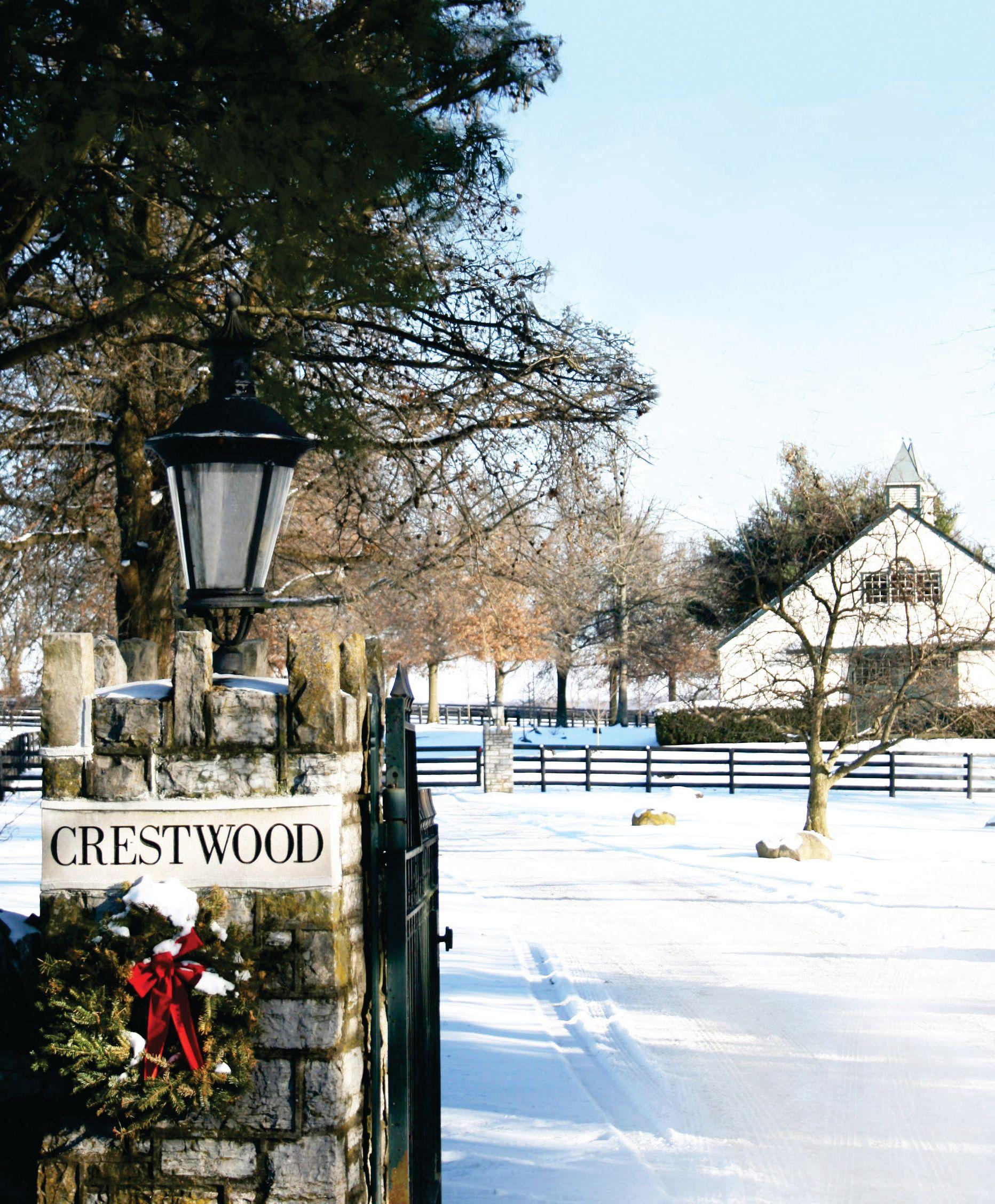



























Tom Hammond, a one-time Keeneland sales announcer who found renown as a sportscaster, recounts his storied career in a new book. by Rich Copley
The Art Center of the Bluegrass brings people together to explore and appreciate art, culture, and creativity. by William Bowden


Castleton lyons offers a unique opportunity for serious breeders to board their thoroughbreds. Here you’ll find a highly skilled staff in a state-of-the-art facility with old world charm. Over one thousand acres of lightly grazed lush pasture supported by the best quality soil, so famous for producing great race horses, await your thoroughbred investments. Individual, detail-oriented attention for horse and client in a top class environment can be found within minutes of Bluegrass Airport, Keeneland, Fasig-Tipton, and the world’s best equine hospitals.
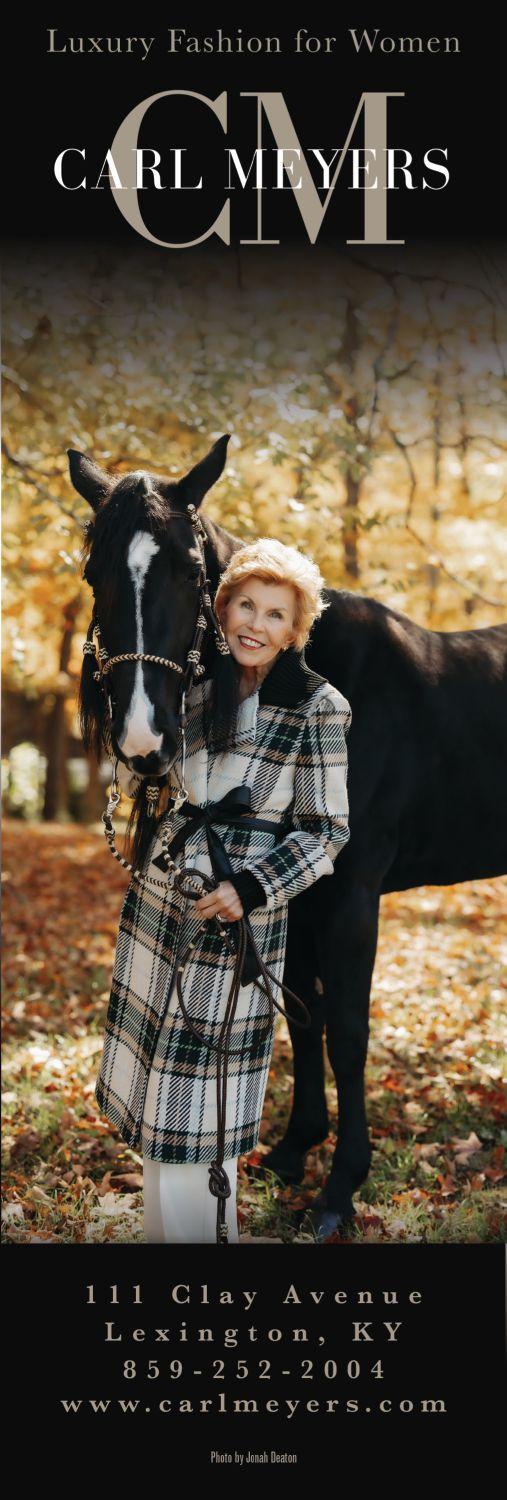
celebrating bluegrass traditions
The offcial magazine of Keeneland Association, Inc. published by Blood-Horse LLC 821 Corporate Dr., Lexington, KY 40503 (859) 278-2361/FAX (859) 276-4450 KeenelandMagazine.com BloodHorse.com
Editor: Jacqueline Duke
Artists: Catherine Nichols (Art Director), PhilipTruman
Copy Editor: Judy Marchman
Visuals Director: Anne M. Eberhardt
Creative Services: Jennifer Singleton (Director), Forrest Begley
Account Executive: Amanda Ramey Masters
Sales Support: Catherine Johnston
CORPORATE OPERATIONS
Circulation Accounting Manager: Lauren Glover
General Manager: Scott Carling
PUBLISHED BY Blood-Horse LLC
BOARD OF DIRECTORS
James L. Gagliano, Carl Hamilton, Ian D. Highet, Stuart S. Janney III, Brant Laue, Dan Metzger, David O’Farrell
254-3412 456-3412
40588-1690
Road P.O. Box 1690 Lexington, Kentucky, U.S.A. 40588-1690 Tel: (859) 254-3412 (800) 456-3412 Keeneland.com








Ilive by the impossible … I fnd it a good discipline and practice believing as many as seven impossible things every morning before breakfast. How dull would the world be if we limited ourselves to the possible.” — Madeleine L’Engle, from “Te Rock Tat Is Higher: Story as Truth”
During the recent fall meet, it felt at times like we were living by the impossible. Not a cloud in the sky could be found during the season’s 17 glorious race days in October. Talented Toroughbreds from all over the globe graced our track during morning works and competed in the afernoons. Fans flled the stands every day, and children came out by the thousands each Saturday morning for breakfast to watch the horses exercise, have their faces painted, and nuzzle ponies in the paddock.
We hosted Make-A-Wish Day, and with the support of Kentucky farms, the wishes of 10 children facing unimaginable challenges were granted and funds were raised for the good work of the Make-A-Wish Foundation. We also recognized our jockeys, our military and civic heroes, our teachers, our students, Big Blue Nation, and other deserving members of the Toroughbred and Central Kentucky communities.
I am happy to report that several records were broken this fall. Keeneland posted record gross sales for the September yearling sale (nearly $412
million) and during the fall meet a month later had the highest ever all-sources wagering ($210 million). None of that is possible without the horse breeders, owners, trainers, grooms, horseplayers, patrons, and the entire ecosystem behind our sport bringing their very best to Keeneland, both during the sales and the races. None of that is possible without the support of our community as well. It is an honor to welcome the mayor, local ofcials, state legislators, Congressional representatives from around the country, and our incredible community to Keeneland. We set the stage for the show, and we value the trust placed in Keeneland and our team.

As we head into winter, we are grateful for the tremendous season that just passed, but we don’t count on the impossible. We believe in hard work, innovative ideas, creativity, honoring the best of our traditions, and knowing that whatever comes to pass, we will have the solace of knowing we have done our very best for our community and this incredible sport.
Te impossible isn’t always rosy, and we know that even though we had sunshine this fall, the spring of 2025 could bring rain, snow, and graupel. We’ll keep the impossible in our mind’s eye, and we will be ready for the next challenge.
Cheers to blue skies ahead. KM



ARCANGELO by Arrogate
Champion Three-Year-Old Male

UP TO THE MARK by Not This Time Champion Turf Male










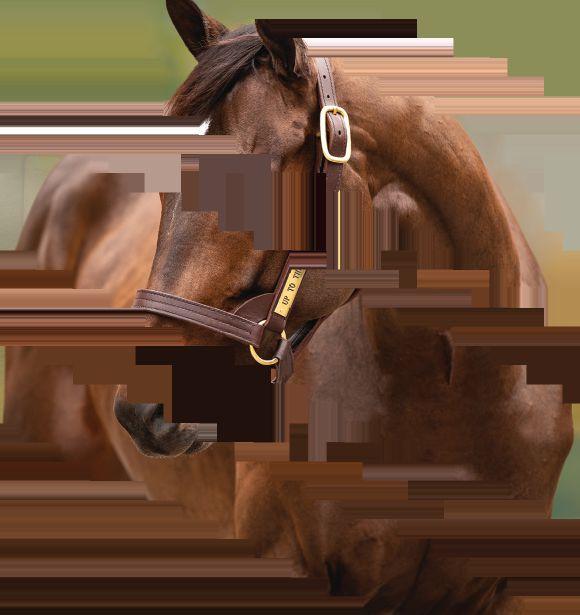



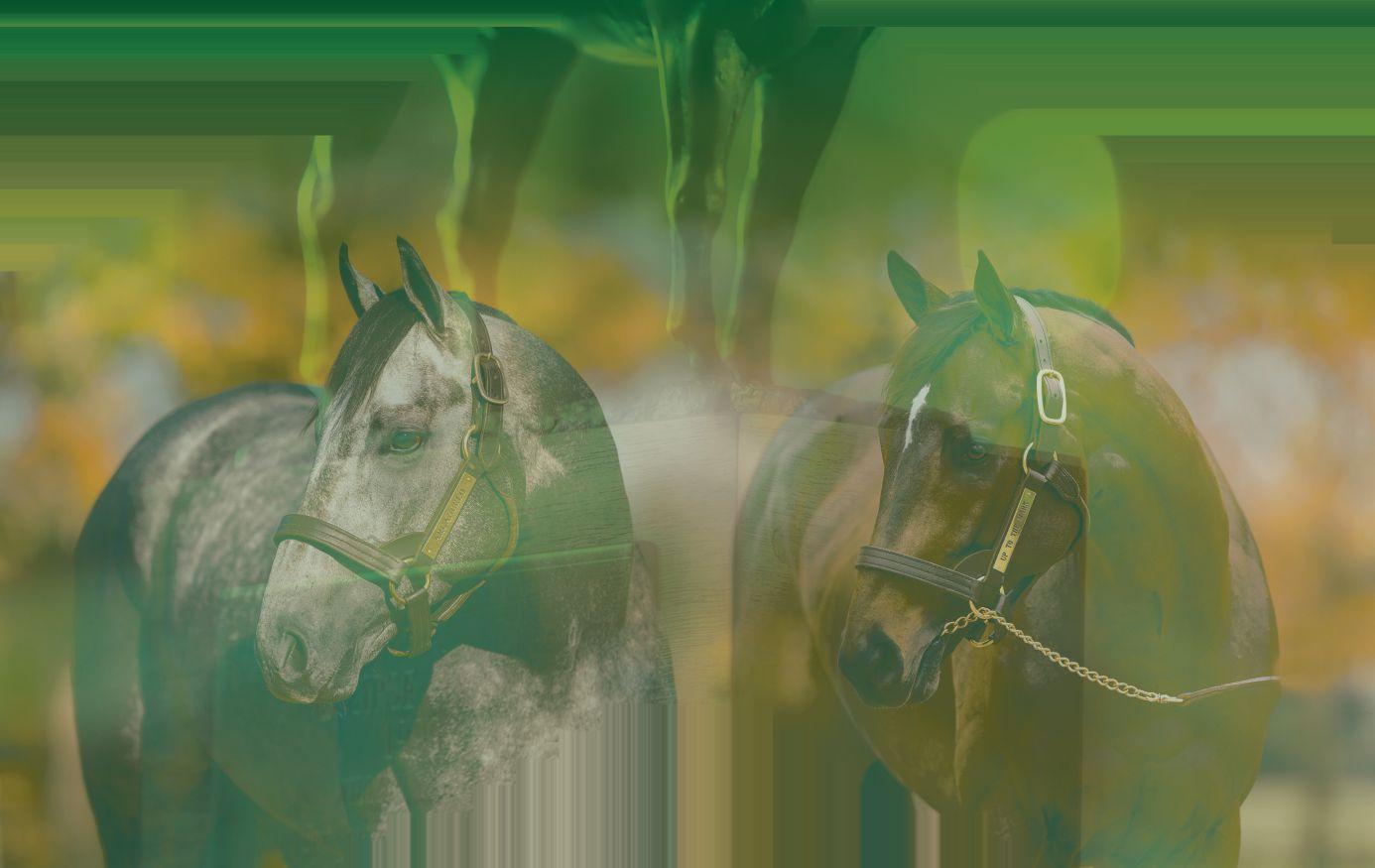

WILLIAM BOWDEN
(Artistic Connections)
most recently worked as publications editor at Transylvania University. He was formerly a writer and editor at the Somerset (Kentucky) Commonwealth Journal, the Lexington Herald Leader, and the NationalTour Association.
JACALYN CARFAGNO
(SummitWorth Scaling) is a professional writer and an editor based in Lexington. She has covered the equine industry and written restaurant reviews and commentary for the Lexington Herald Leader in addition to working for a wide range of clients.
RICH COPLEY
(Hometown Boy Makes Good) spent 20 years as an arts and entertainment journalist for the Lexington Herald Leader. He is now a multimedia producer for the Presbyterian Church (U.S.A.) and a freelance writer and photographer based in Lexington.
LIANE CROSSLEY
(No Place Like Home) has spent her career in Thoroughbred racing-related jobs in barns, press boxes, and offces. A seasonal member of Keeneland’s media team, she has had her work appear in BloodHorse, Daily Racing Form,Thoroughbred Daily News,Thoroughbred Times, and other publications.
KIM KOBERSMITH
(Path to Success) writes about culture and the outdoors from Berea, a creative small town where the Appalachian Mountains meet the Bluegrass. Her work has appeared in the DailyYonder, Bitter Southerner, and Kentucky Monthly.
PATTI NICKELL
(Beyond Steak) is a freelance travel writer whose work has appeared in major newspapers and national magazines. She currently writes travel articles for the Lexington Herald Leader.
AMY OWENS
(Keeneland News/ Connections) is Keeneland Communications Associate.
LENNY SHULMAN
(MoreThan Luck) is a senior correspondent for BloodHorse and the author of “Head to Head: Conversations with a Generation of Horse Racing Legends,” “Justify: 111 Days toTriple Crown Glory,” and “Ride of Their Lives:The Triumphs andTurmoil of Today’sTop Jockeys.”



ARABIAN KNIGHT
$30,000 LFSN new for 2025

Curlin
$125,000 LFSN GOOD MAGIC
MACLEAN’S MUSIC
$40,000 LFSN
$20,000 LFSN ARMY
$12,500 LFSN KANTHAROS
$10,000 LFSN
$225,000 LFSN CURLIN
$50,000 LFSN
$7,500 LFSN LOGGINS
LFSN
www.hillndalefarms.com

By any number of measures, Keeneland’s 17-day fall meet from Oct. 4-26 was the most successful fall season in track history.
All-sources wagering reached a record $210 million, besting the previous record of nearly $209 million set during the 2022 fall meet and marking an increase of 4% over the nearly $202 million wagered during fall 2023.
Te season featured 22 stakes worth a record $9.85 million, led by the richest race in track history, the $1.25 million Coolmore Turf Mile, won by Irish-bred Carl Spackler.
Average daily purses were a Keeneland record $1,250,834 and attracted full felds that averaged 9.6 starters per race.
Fall Stars Weekend on the season’s opening three days ofered 11 stakes, including eight races that were Breeders’ Cup Challenge Series events that secured for the winners automatic entry into the Nov. 1-2 Breeders’ Cup World Championships at Del Mar.
Ten horses who captured Fall Stars stakes were preentered in the Breeders’ Cup
“Te fall meet was exceptional,” Keeneland President and CEO Shannon Arvin said. “Te class and quality of the horses and riders competing here are truly special, and we appreciate the tremendous support from our owners and trainers who make the choice to race with us. We thank
our horsemen and our fans for their loyal support and are excited to share the new Paddock Building with everyone this time next year.”
Among other racing highlights:
• Two jockeys — Paco Lopez and Irad Ortiz Jr. — each scored their 4,000th career wins during the season.
• Brad Cox led trainers with 14 victories for his ffh consecutive fall meet title and sixth Keeneland title overall. He won a Keeneland meet record six stakes.
• Tyler Gafalione had 24 wins for his ffh fall meet and eighth overall Keeneland leading rider title.
• Sheikh Mohammed Al Maktoum’s Godolphin won four races to lead owners. Te title is Godolphin’s third fall meet honor in the past four years and sixth overall.
• Longtime Keeneland-based trainer Rusty Arnold earned his 300th victory at the track, ranking second behind Bill Mott on the list of leading trainers by wins.
During the season, Keeneland teamed with corporate and horse industry partners to ofer special events that further the track’s mission to support the Central Kentucky community and the sport.
Events included an autograph session on Oct. 5 that raised $5,623 for the Permanently Disabled Jockeys Fund, the 17th Make-A-Wish Day that granted wishes for 10 children, and College Scholarship Day Presented by Lane’s End.
An economic impact study conducted by the University of Louisville’s Departments of Equine Administration and Economics and released in October reveals that Keeneland’s racing operations, annual Toroughbred auctions, supporting business lines, and investment in new construction generate an estimated $1.6 billion for the Lexington metropolitan area.
Te study also noted that around 64% of racing patrons come from outside Kentucky, while around 67% of those attending and participating in the annual horse auctions come from outside the state. Of those attending the auctions from out of state, approximately 24% come from outside the U.S.
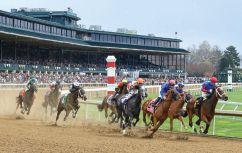
“Keeneland’s location in the heart of horse country allows us to serve as a global hub for the Toroughbred industry,” Keeneland President and CEO Shannon Arvin said. “Our Toroughbred auctions and spring and fall race meets attract participants from 50 countries and fans from every state. Te impact is felt far beyond the gates of Keeneland as Fayette and surrounding counties play host to these visitors, benefting local businesses, hotels, restaurants, and the entire region.”
Te comprehensive study evaluated Keeneland’s various operations, including its horse auctions, race meets, special events program, retail operations, guided tour program, and Keeneland Library. Te study also enumerated the impact of Keeneland’s ongoing investment in new facilities, including the construction of the new Paddock Building scheduled to open in fall 2025.
“Keeneland is a world-class destination that every Kentuckian, visitor, and horse enthusiast loves to visit, and it’s no surprise this Kentucky treasure is also a huge economic engine, generating $1.6 billion in economic impact each year for Lexington and our entire commonwealth,” Gov. Andy Beshear said.
For more information, visit Keeneland.com/ economic impact.

Keeneland’s 81st September yearling sale held Sept. 9-21 posted total sales through the ring of $411,749,500 to be the highest-grossing Toroughbred auction in the world. Te average of $150,548 is a September sale record, while the median of $70,000 equals the record for a September sale.
Competitive trade among the world’s most prominent buyers fueled the dynamic results, driving the sale of 36 seven-fgure horses (including one sold privately) for the most since 2005. Among them was a son of Curlin purchased for $5 million — the highest price for a colt at the auction since 2006 and the most expensive horse sold at public auction this year in North America.
Te record gross for the 12-day auction bested the previous record of $405,495,700 set during the 2022 September sale. A total of 2,735 horses sold this year.
On Day 2 of the 2024 sale, the average of $611,038 established a September sale session record, besting the previous mark of $589,814 from the same session in 2006.
“Te September sale truly is the world’s marketplace,” Keeneland President and CEO Shannon
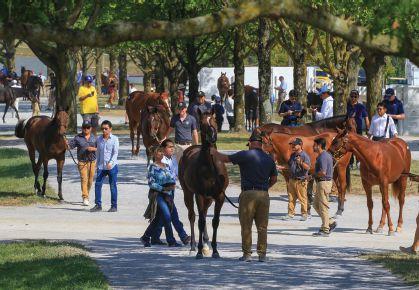
Arvin said. “We thank everyone who participated, especially the breeders and sellers who presented an exceptional group of yearlings and the buyers who responded enthusiastically to the quality.
“Keeneland shares their confdence in the sport, and that’s why we adhere so strongly to our mission to reinvest in racing and sales, which go hand in hand,” she

continued. “Te construction of the Paddock Building and the improvements to the Sales Pavilion, along with the enhanced hospitality and amenities, are all done with the goal to provide our customers, both now and in future generations, with the best environment possible for success.”
Contributing to the renewed confdence in the U.S. racing industry are rich purse levels across the country driving demand for racehorses, the success of American-bred horses racing around the world, and stronger medication regulations at tracks and auctions.
“Te energy here was at times reminiscent of another era,” Keeneland Vice President of Sales Tony Lacy said. “When we were on inspections earlier this year, we saw quality and consistency among the crop, and it gave us a lot of excitement. And when the horses showed up at the sale it verifed our expectations. Te market was very broad based. We saw new faces and welcomed back people we haven’t seen in years from all over the world who returned because of their confdence in the U.S. industry and Keeneland being a global marketplace.”
Taylor Made Sales Agency was the sale’s leading consignor for the 25th year since 1988, selling 333 yearlings for $53,133,200 (including private sales). Te gross is the highest for a September sale consignor since Taylor Made grossed $57 million in 2007.
Keeneland has appointed Florida horseman David O’Farrell to its advisory board of directors.
O’Farrell is general manager of his family’s Ocala Stud, the oldest active Toroughbred farm in Florida and one of the leading stallion, breeding, and training operations in the country. He is a steward of Te Jockey Club, member of
Breeders’ Cup Limited, and a director of Ocala Breeders’ Sales Company. O’Farrell also is chairman of the Toroughbred Owners and Breeders Association, where he is a member of the American Graded Stakes Committee and currently TOBA’s representative to the National Toroughbred Racing Association.
“David brings a wealth of expertise and a
deep-rooted commitment to the Toroughbred industry,” Keeneland President and CEO Shannon Arvin said. “His leadership at Ocala Stud, coupled with his involvement in numerous industry organizations, makes him a valuable addition to the board and to Keeneland’s continued success. We are grateful for David’s service in advancing the sport we all love.”

GUN RUNNER
CANDY RIDE (ARG) - QUIET GIANT
$250,000 LFSN
NEWGATE
INTO MISCHIEF - MAJESTIC PRESENCE NEW FOR 2025 - TBD
SKY MESA
PULPIT - CARESS
$10,000 LFSN
GUN PILOT
GUN RUNNER - BUSH PILOT NEW FOR 2025 - TBD
VOLATILE
VIOLENCE - MELODY LADY
$12,500 LFSN
FUNTASTIC
MORE THAN READY - QUIET DANCE
$5,000 LFSN
Two jockeys — Paco Lopez and Irad Ortiz Jr. — each scored their 4,000th career wins during the fall meet. Lopez’s milestone came Oct. 6 when he rode Governor Sam to win the Indian Summer Presented by Keeneland Select. A week later, Ortiz reached the mark when he won the frst race aboard Good Temper.
Keeneland on Oct. 16 recognized the winners of the ninth Thoroughbred Industry Employee Awards, sponsored by Godolphin and designed to recognize the hard work and contributions of people who work behind the scenes at tracks and farms. From left, Milver Martinez (Brendan Walsh Racing), Christine Jones (Pleasant Acres Stallions), Lauren Marks (Ocala Breeders’ Sales Co.), Nancy LaSala (Permanently Disabled Jockeys Fund), Julianne Stowell (Niall Brennan Stables), Cass Dewey (Desert Oasis Rescue), and Steve Vargas (Bridlewood Farm).
Frankie Dettori treated Keeneland fans to his famous fying dismount after he rode May Day Ready to win the grade 2 Jessamine Presented by Keeneland Sales on Oct. 4.


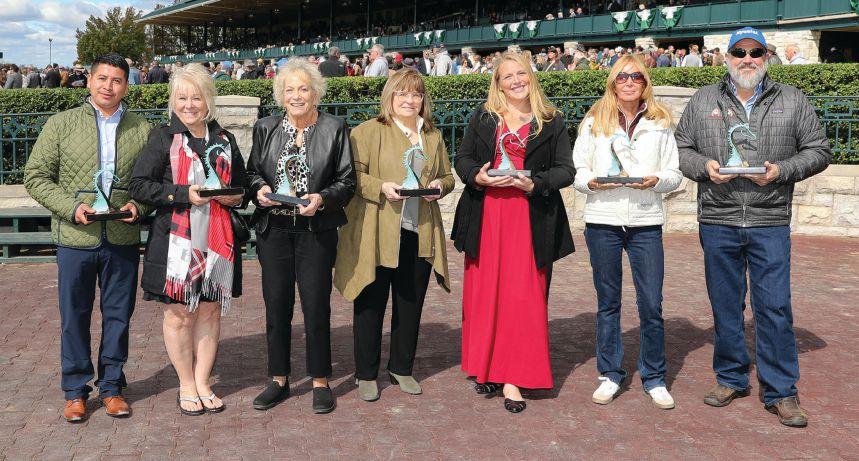


The Headley-Whitney Museum in Lexington is showcasing artist Jamie Wyeth’s dog works as part of “Dogs & Cats: An Exhibition." Many of the works are from the private collection of the artist and his late wife, horsewoman Phyllis Wyeth. The exhibition, which runs through Nov. 24, includes dog and cat works by more than 30 Kentucky artists.
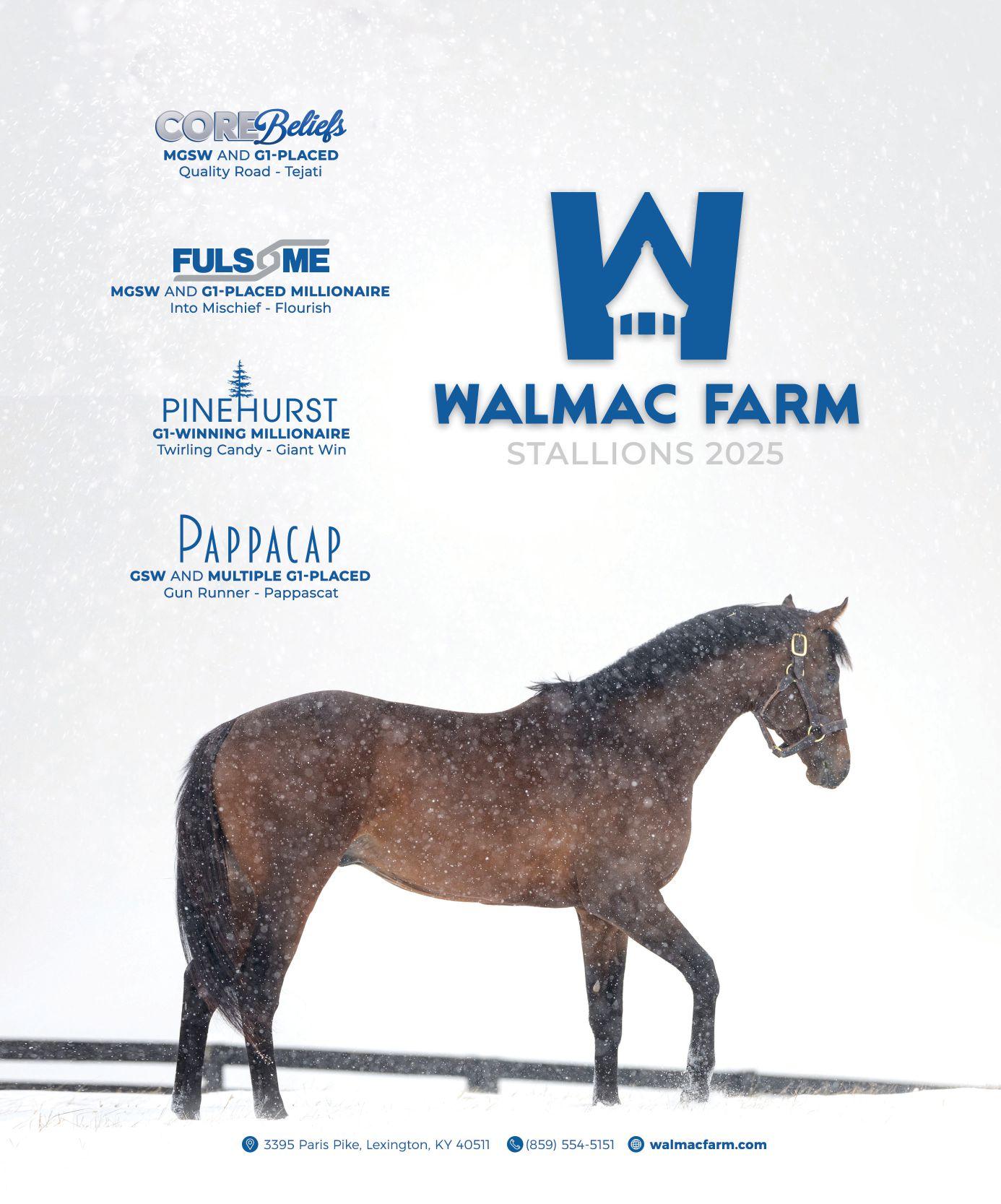
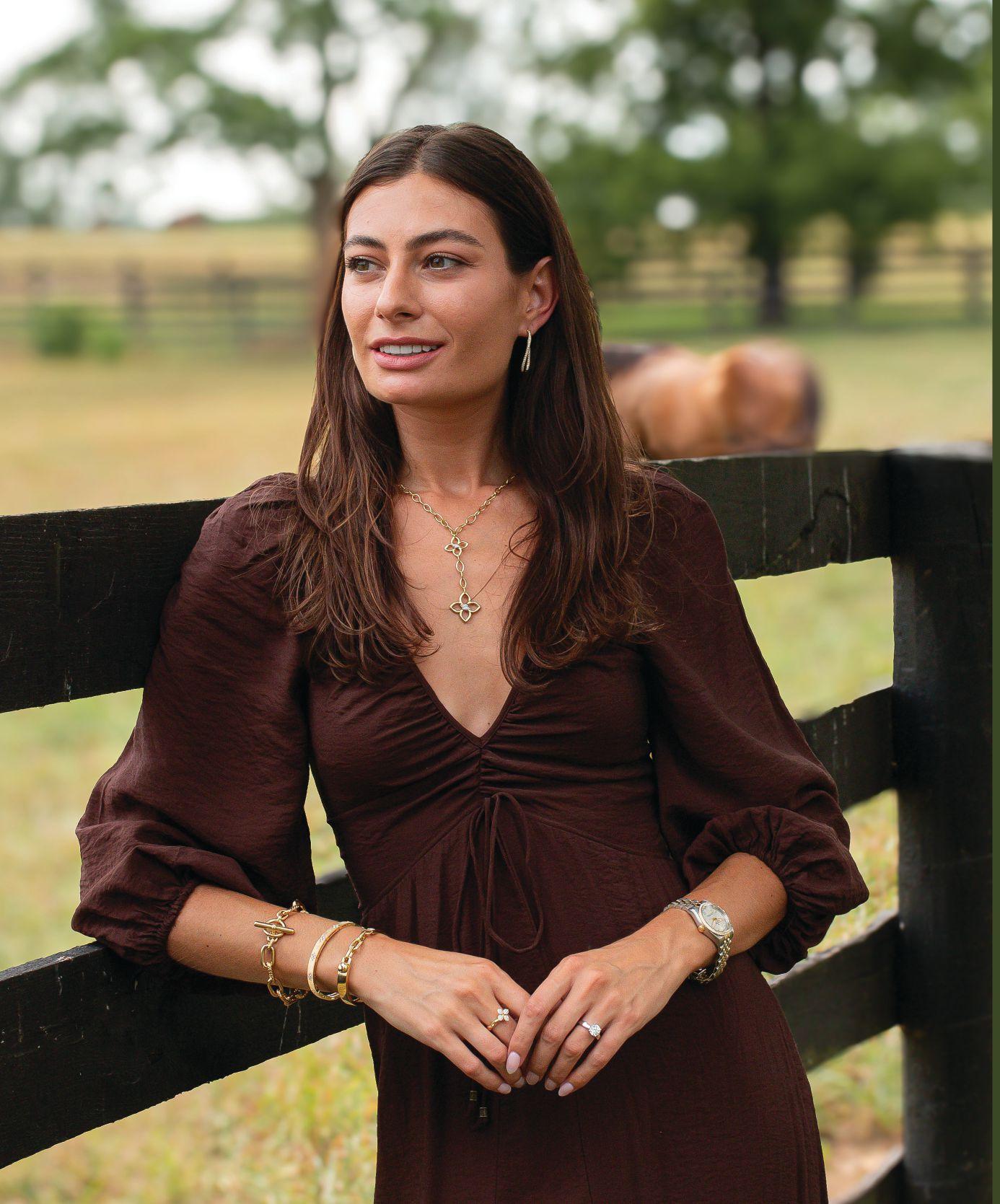

EXTRAORDINARY JEWELRY AND TIMEPIECES
TOM HAMMOND, A ONE-TIME KEENELAND SALES ANNOUNCER WHO FOUND RENOWN AS A SPORTSCASTER, RECOUNTS HIS STORIED CAREER IN A NEW BOOK
A KEENELAND WHO FOUND RENOWN AS A RECOUNTS IN A NEW Rich Photos
By Rich Copley | Photos by Bill Straus

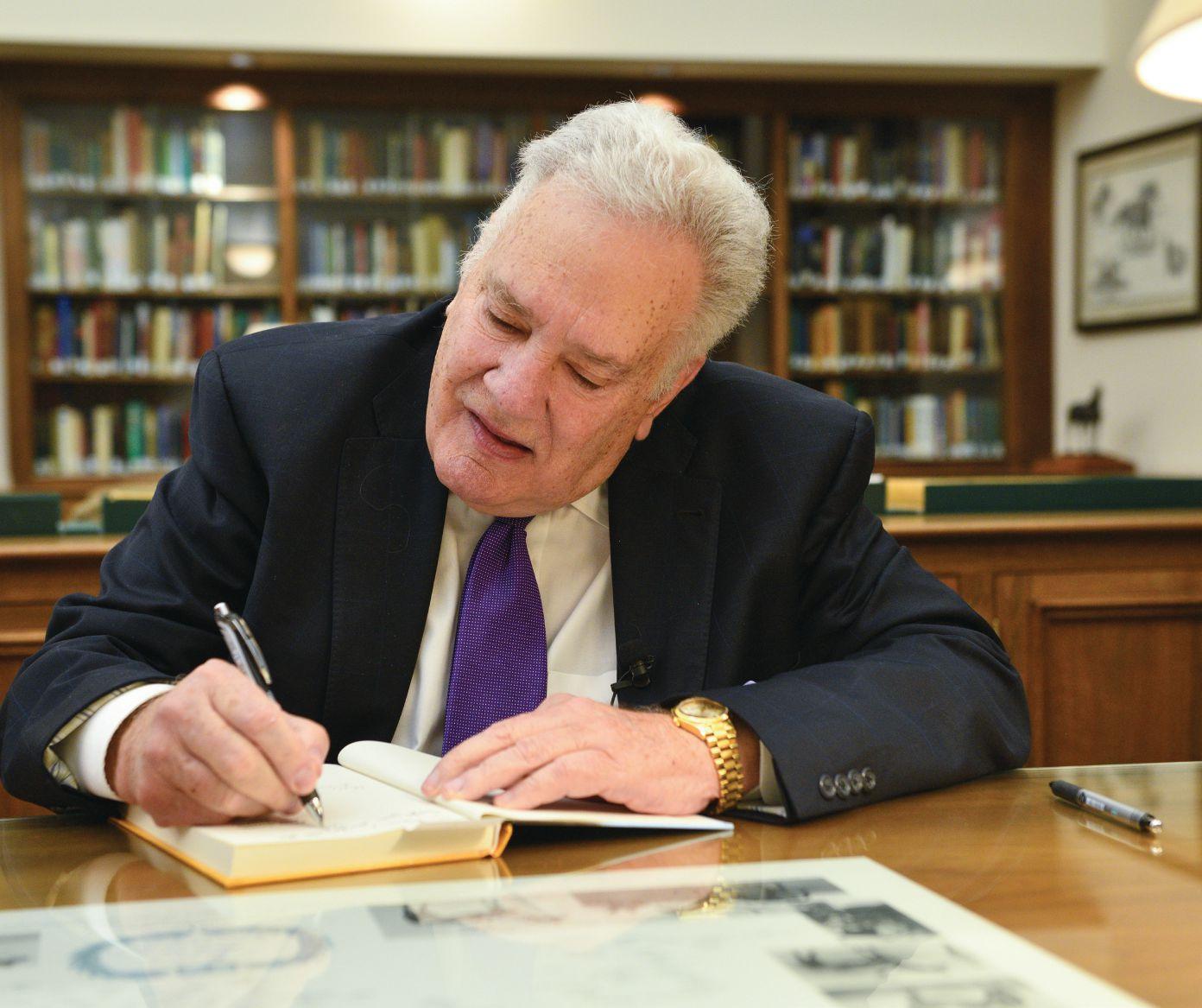
TOM HAMMOND

IT WAS THE TYPICAL conversation of teenage boys making plans.
“What do you wanna do?”
“I dunno, what do you wanna do?”
On this Saturday, 15-year-old Tom Hammond and his Lafayette High School football buddies decided to take in a day at Keeneland. Te decision was a fortuitous one.
“It was my frst exposure to the races, and that’s where I sort of started to chart my course for my career,” Hammond, now 80, said. “I just fell in love with the excitement, the color, the drama, the races, and just liked everything about it. So that became my focus. What I wanted to do, I think, was to be involved somehow in the

Toroughbred industry, probably as a farm manager or breeder of some kind.”
As sports fans across the country know, that wasn’t quite the path Hammond’s career took. He wound up blazing a unique trail to become one of NBC’s top sportscasters calling playby-play for the NFL, NBA, Notre Dame University football, Triple Crown races, and other events including 13 Olympic Games where, at the height of his career, more than 45 million people heard him broadcast an Olympic fgure skating fnal.
Wherever Hammond roamed, Keeneland and Lexington were always part of the story. Te track played vital roles in Hammond’s career in myriad ways, including helping him maintain a Lexington address as his star in sports broadcasting rose.
Hammond took a low-profle approach to his work, believing the events he was covering were the story, not him. His signature move in the broadcast booth was throwing up his hands during big moments to tell colleagues not to talk. Let the pictures tell the story.
Now, six years since retiring from broadcasting following the 2018 Winter Olympic Games, Hammond is telling his story in “Races, Games, and Olympic Dreams: A Sportscaster’s Life,” a new memoir co-authored by veteran Lexington Herald Leader sports columnist Mark Story and published by University Press of Kentucky.
Tere isn’t an audio version of the book, but if you sit with Hammond long enough, he might recite it to you.
At a Keeneland Library event in late September, Story moderated a conversation with Hammond and tried somewhat successfully to keep him from giving away all the key stories in the book.
Hammond’s wealth of stories and
penchant for telling them were the catalysts for the memoir.
“Anytime I would start telling these stories at dinner or speaking to a group or whatever, invariably at the end of that, someone would say, ‘You ought to write a book,’ ” Hammond said.
Ten Terry Birdwhistell, former dean of libraries at the University of Kentucky and a preeminent oral historian, approached Hammond about telling his story for UK’s Louie B. Nunn Center for Oral History. Hammond thought that could be the basis for a book.
He just needed a writer.
Like many decisions in his life, Hammond stayed close to home.
“I just thought Mark would be the perfect guy to do it, because he would know all about the things that I’m speaking of, not just racing … but he would know about the Olympics and all the far-fung things that I ended up broadcasting,” Hammond said. “He would be familiar with them because he writes about a variety of things, not just one sport, and he also seems to enjoy getting the ofeat stories behind the scenes.”
Story said, “I had written about Tom a good bit for the Herald Leader, so we had some comfort level, and he just called me out of the blue one day and asked whether I’d be interested, and I said yes.
“I’ll never forget, Tom’s like, ‘I’ve got some good stories.’ So, I went to his house, and we talked, and he did have some good stories.”
A regular Tuesday afernoon routine began with Story going to Hammond’s south Lexington home where they would sit at his dining room table, surrounded by equine art and memorabilia, including an Emmy Award, and




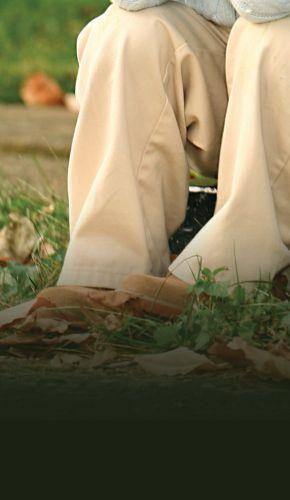

TOM HAMMOND
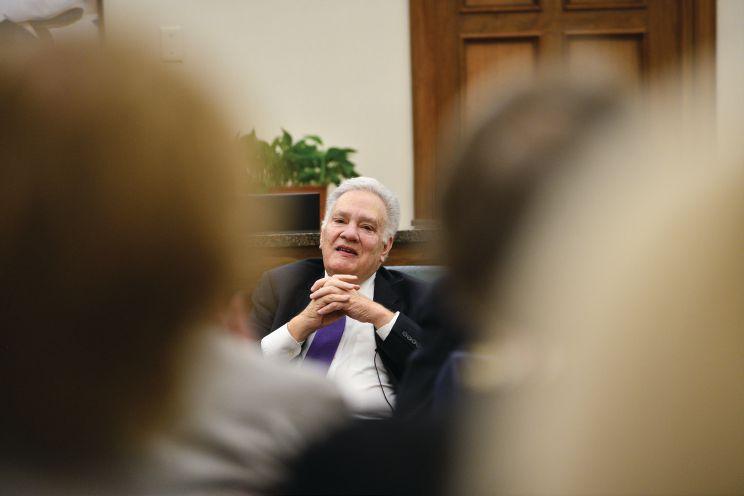
Hammond would tell his stories.
Story also drew from additional interviews, media stories about Hammond, and other material to fll out the fast-paced account.
“I ofen wonder, had he not used a Kentucky writer, would the story have been told diferently?” Story asked .
“Tom’s story is really a play in two parts. His frst 40 years is a Kentucky story, growing up and going to college and meeting [wife] Sheilagh and training to work in the horse industry, and then getting out of school and taking a completely diferent path and establishing himself in the Lexington media, and then leaving the Lexington media and starting his own company. He was 40 years old when he worked that frst Breeders’ Cup for NBC, which was the turning point in his professional life.
“So, the frst part of his story is a Kentucky story, and that’s how we told it.”
Hammond’s family came to Lexington in 1918 when his maternal grandfather, Tomas Poe Cooper, was hired as dean of agriculture at the University of Kentucky. As
a boy, Hammond spent a lot of time in the Greek Revival-style home — now known as Cooper House — at the south end of UK’s campus near the Nicholasville Road and Cooper Drive intersection. Hammond’s parents, Claude and Catherine Hammond, met as students at UK.
Hammond played football and basketball in junior high and high school, and went to Louisiana State University to play football. But, as he describes it, his college football career — as a player — ended before it started due to an injury.
Returning to Lexington and UK, Hammond renewed his focus on the Toroughbred industry, following his high school summer jobs at Lexington’s Spendthrif Farm with racetrack experiences in Delaware, Canada, and fnally New York. Tere, he spent two summers at Belmont Park and Saratoga Race Course working for Hall of Fame trainer Sherrill Ward as a hot walker and groom. According to Hammond, at the end of the second summer, Ward ofered to help him get started as a trainer, but Hammond declined. He didn’t want the nomadic life of a trainer and saw his future working on a horse farm.
Afer graduating from UK in 1967, Hammond worked part time for Toroughbred breeder Tom Gentry, evaluating horse pedigrees. At one of Gentry’s parties, Hammond met Daily Racing Form writer Dave Hooper, who hosted a daily race results show on WVLK radio. Hooper was being transferred to Florida and needed someone to take over


TOM HAMMOND
the show. Hammond thought he could do it.
“I’m sure I was terrible, but I started reading the race results for $35 a week,” Hammond recalled. “I sort of found that I liked it and was interested in it.”
Hammond walked through any door that opened, picking up a sports show, becoming a news reporter for WVLK. Wife Sheilagh, whom he met when they were sophomores at UK, recalled how he would drive around in a little red van for the station, “reporting the news from all over town.”
“Something else would happen, and he’d get a more important job, and it just kind of went from there,” she said. “I was always pleased for him when he would come home and tell me, ‘Guess what? So and so called me and wants me to do some sort of broadcast.’ ”
He went from radio to TV at WLEX. Keeneland was a constant.
“J.B. Faulconer, the director of publicity, sort of took me under his wing and became my mentor and taught me how to broadcast races, how to work, how to learn, and just everything about covering Toroughbred racing,” Hammond said of Keeneland’s frst full-time publicity director who started the Eclipse Awards.
Hammond was an innovator, organizing some of the frst broadcasts of races such as the Blue Grass and Spinster stakes. His most consequential role was when he was hired to be the announcer for the Keeneland sales.
“It was so important to me because it enabled me to supplement my income from Channel 18 [WLEX], so I didn’t have to hopscotch to a diferent market all the time to try to get ahead in the business, which is normally what you do,” Hammond said. “I was able to stay in Lexington, which I wanted to do, and be able to supplement my income. And that job led to being the announcer at horse auctions, Toroughbred auctions all over the country.”
In addition to Keeneland, Hammond


to give potential buyers a better sense of horses up for auction.
“He’s a very meticulous person,” said Rogers Beasley, who retired as vice president of racing in 2016 afer more than three decades at Keeneland that included a stint as director of sales. “His attention to detail when he announced a horse, he’d really done his homework … and he was very meticulous with all the updates. He had a timely manner of announcing a horse and a great voice, enthusiastic voice, encouraging people to look at this horse in the ring. He was a great announcer for Keeneland.”
Beasley said no one expected Hammond to make the leap to a national stage because those weren’t terms people thought in. But once he did, “the light bulb went of in our head. He was a great pedigree announcer and a great sports announcer for basketball and everything else. Why not?”
Whenever NBC came to Lexington to broadcast a UK men’s basketball game, Hammond went to talk to the broadcasters about the team to give them some insight for their broadcast. Doing that, he got to know legendary sportscaster Dick Enberg, whom Hammond took to meet Secretariat afer a game.
While visiting Claiborne Farm in Paris, Enberg asked how to tell if a horse would be a winner. Hammond gave a complex answer about pedigree, conformation, and such, and then farm president Seth Hancock said, “Sometimes you can just see it in their eye.”
“When he said that, Secretariat jerked his head around and looked Dick Enberg right in the eye,” Hammond said.
became one of the play-by-play announcers for regional SEC basketball broadcasts, which he continued to do for decades. He eventually lef WLEX to launch Hammond Communications, which specialized in what was then an innovative practice of creating videos of Toroughbreds on the farm and at the track
NBC made its inaugural foray into Toroughbred racing in 1984, broadcasting a brand-new event, the Breeders’ Cup. Enberg recommended Hammond for part of the team. Luck and preparation were on Hammond’s side, including a memorable moment showing champion John Henry snacking on a bouquet of roses Hammond was holding and jockey Pat Day assuming he should go talk












TOM HAMMOND


to of-duty Hammond afer riding longshot Wild Again to victory in the Classic.
Afer that, Hammond was ofered more opportunities to work for NBC.
“One of the things that I think is fascinating is the frst time Tom did play-by-play of a football game on television; it was the NFL,” Story said.
As his career took of, broadcasting the NFL, NBA, Olympic sports, and many others, one thing remained constant: Hammond lived in Lexington, in the same house since 1984, where he and Sheilagh raised three children. Most of his colleagues lived in larger cities from which air travel was easier. But Sheilagh said moving was never even discussed.
“To make a connection in Atlanta or wherever, that’s a small price to pay so I’ll be able to remain in Lexington,” Hammond said.
Te payof was a front-row seat for sports history, including the 2000 Summer Games in Sydney, where Cathy Freeman became the frst Australian to win the women’s 400-meter race since the inaugural event in 1964 and the
frst Aboriginal woman ever to win the event. Hammond’s call as she settled into the starting blocks was, “Cathy Freeman has waited for this moment since ’96, Australia has waited since ’64, and the Aboriginal people have waited forever.”
Hammond was also on the call in Salt Lake City in 2002 when American Sarah Hughes won gold in the women’s fgure skating fnal that was expected to be a showdown between the USA’s Michelle Kwan and Russia’s Irina Slutskaya. He also called all eight of Usain
Bolt’s gold medal victories.
“I enjoyed watching the Olympics because of Tom,” Beasley said. But, he added, Hammond brought something extra to Toroughbred events because “he understood everything that goes into getting a horse to the race.”
Trough the early days of his NBC career, Hammond said he lobbied the network to get the rights to the Triple Crown races. Tey fnally did, beginning in 2001, paving the way for Hammond to be part of the broadcast team when American Pharoah fnally broke the 37-year Triple Crown drought in 2015. Hammond said the sound of the crowd as American Pharoah made the fnal turn in the Belmont Stakes — and it was clear he was going to win — was the loudest he ever heard, including all the Olympics, Notre Dame football games, and other historic events when he was in the press box.
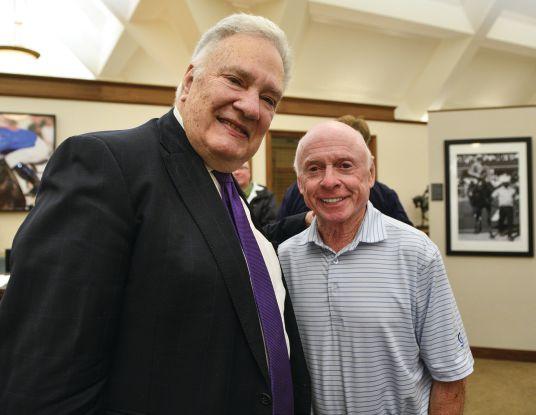
But American Pharoah had one more victory that was part of a full-circle moment for Hammond.
In late October 2015, the Breeders’ Cup came to Keeneland

for the frst time, and Hammond was leading the broadcast. Tat gray Halloween afernoon, American Pharoah capped his Triple Crown win with a victory in the Breeders’ Cup Classic, and Hammond was sharing it with the rest of the country from the track that had introduced him to racing and in the event that was his NBC debut. Would horse racing have captivated him had he grown up in another town?
“Maybe I would have fallen in love with the sport anyway, but certainly at Keeneland, where you’re just immersed in the color and excitement of it, and can see the horses up close …


that was just something that enabled it to catch my attention and to say that this is something I want to do.”
Keeneland so captivated Hammond during his senior year of high school that he skipped a day of school and walked fve miles each way to spend the day taking in the races.
He doesn’t have to go to those lengths to get to the track anymore. And now, afer years of reporting to work at Keeneland — be it for the track or WVLK radio or NBC Sports — he can now just go settle into a seat in the press box and enjoy the color, the excitement, and a lifetime of memories. KM


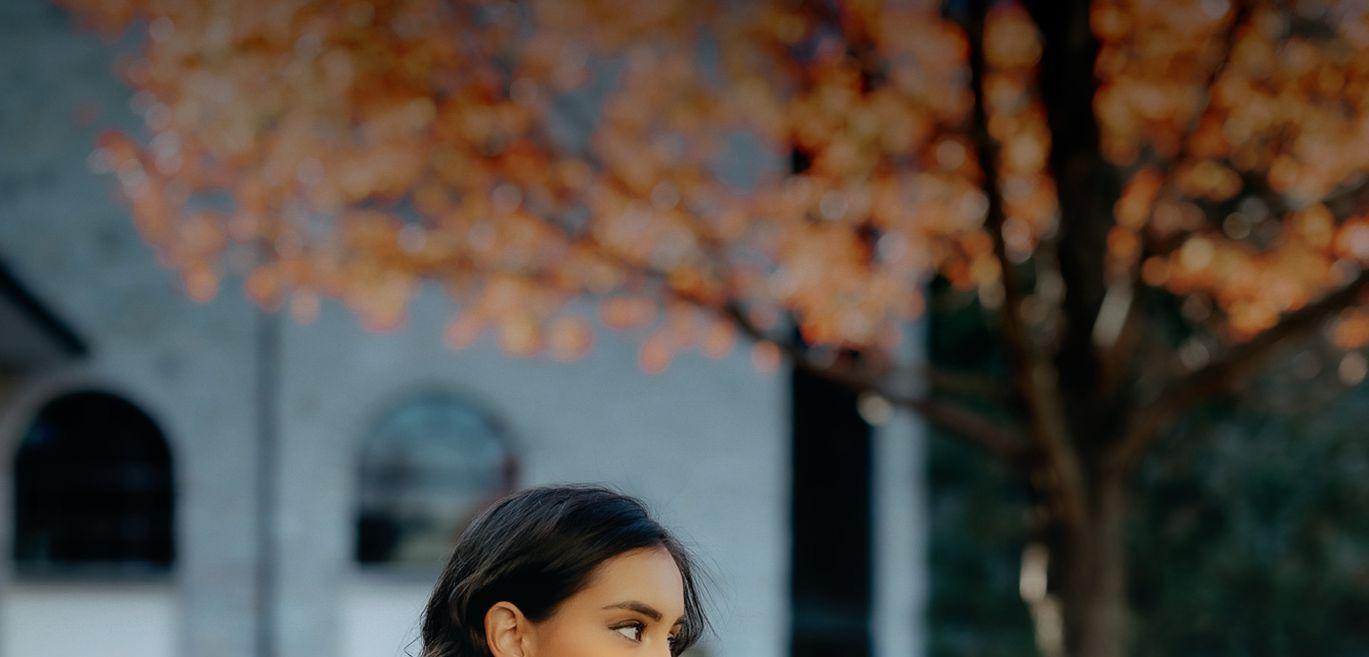

OPEN YEAR- ROUND
Monday - Saturday | 9am - 5pm





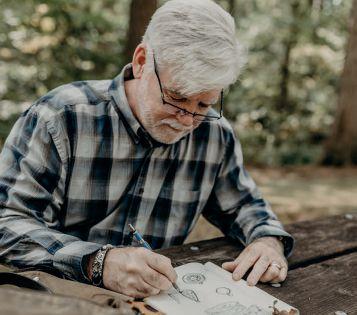
Brazilian-owned and Kentucky-based BONNE CHANCE FARM is having an impact at the Keeneland sales and on the international racing scene

By Lenny Shulman | Photos by David Coyle


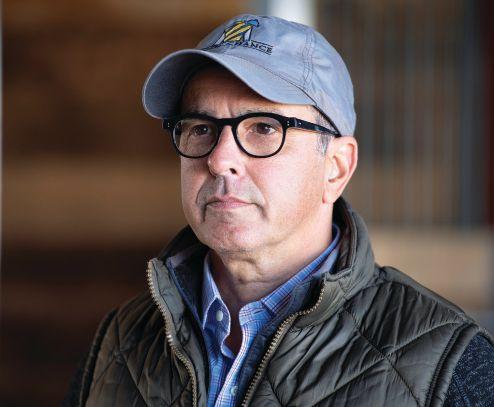
of an eye in the life of a Toroughbred breeding farm. Yet since its inception in 2015 on historic land in Woodford County, Bonne Chance Farm has already established outstanding yearling, broodmare, and racing divisions. Refecting its name, which is French for “good luck,” the farm has not only produced grade 1 winners and expensive yearlings, but has achieved a unique honor in an additional equestrian endeavor.
At the Paris Olympics this past summer, Ilex, a Dutch warmblood co-owned by Bonne Chance, won a silver medal for the United States in the team show jumping competition, a huge feather in the cap of Bonne Chance owner Gilberto Sayao da Silva, himself a rider of show horses. (See sidebar.)
On the Toroughbred side, Bonne Chance has furthered an important trend in the industry by integrating stock from South America, Europe, and North America to breed a sturdier, stamina-laden, and more substantial horse without sacrifcing
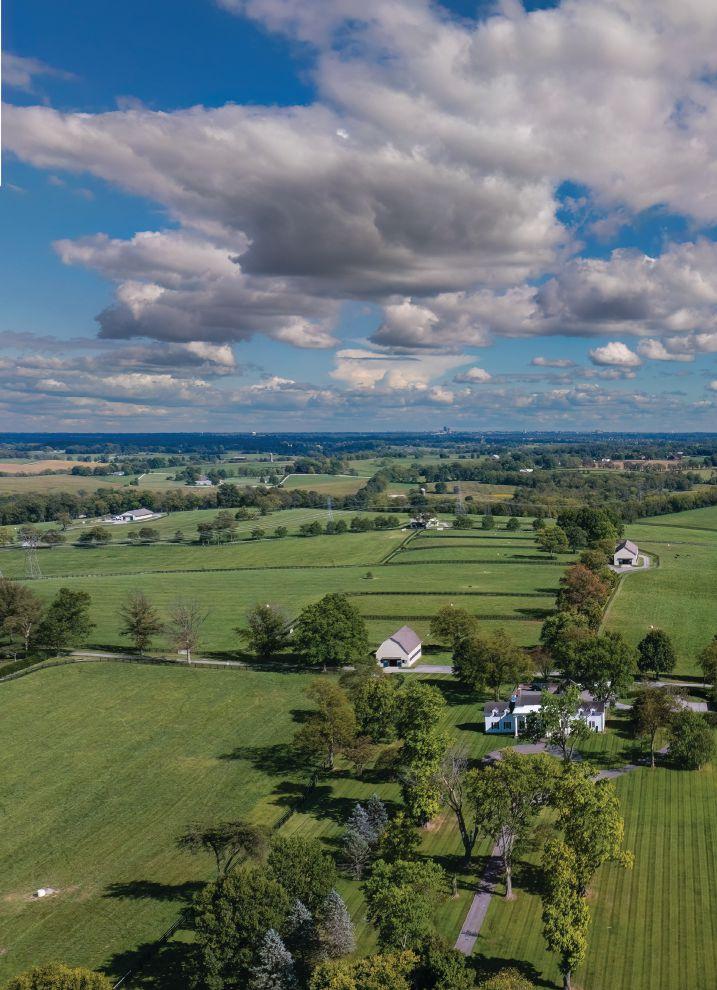




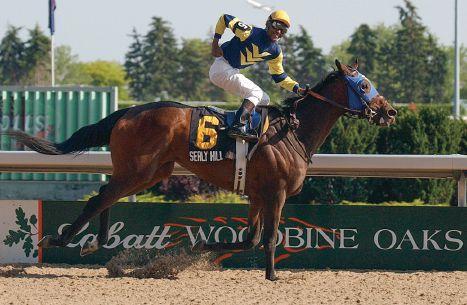
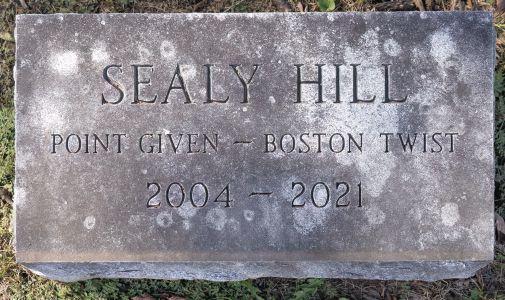


Bonne Chance-bred King of Steel won the 2023 QIPCO Champions Stakes and King Edward VII Stakes in England.
the type of speed that is sought afer by American horsemen. Sayao and global Bonne Chance manager Alberto Figueiredo have, for instance, bred South American mares to the legendary European stud Galileo and brought three of the resultant fllies into Bonne Chance’s Kentucky broodmare band.
Tis blurring of international pedigrees shadows the practice of North American stallion owners who have for decades shuttled top sires to foreign markets. Today, for instance, Justify, the 2018 U.S. Triple Crown winner, has runners such as City of Troy and Opera Singer dominating grade 1 events throughout Europe, as well as getting stakes performers in Australia.
South American racehorses established a beachhead in the U.S. — particularly in California — in the 1990s. Ten, a steady parade of grade 1 winners such as Gentlemen, Sandpit, Paseana, and Lido Palace flled winner’s circles for trainers such as Charlie Whittingham,
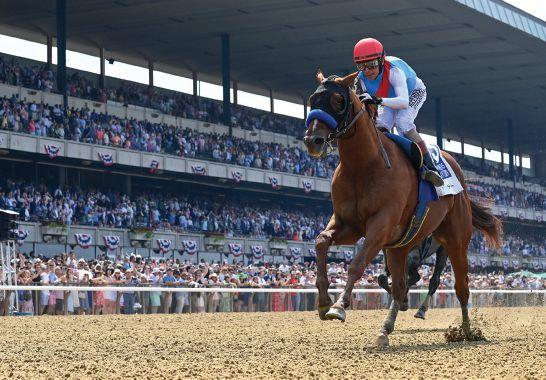
Richard Mandella, Ron McAnally, and Bobby Frankel. Figueiredo, as manager of Brazil’s Rio Claro Toroughbreds, was involved in the importation of eventual grade 1 winners Siphon and Virginie and grade 2 winner Romarin to the States.

Tat pipeline has gone relatively fallow in the ensuing years as connections have died and a new breed of trainers has emerged. But the past decade has seen a trail ever more well worn by South American operations coming to Kentucky to lay down the roots of domestic breeding operations. And that is leading to new bloodlines that could invigorate a Toroughbred industry in need of outcrosses.
With economic pressures weighing on South American racing, the journey north has made sense for wealthy horsemen such as Brazilian Goncalo Borges Torrealba, who took over majority control of stalwart Tree Chimneys Farm in 2013. Not long afer, Carlos Heller Solari and his mother, Liliana Solari, bought the former Vinery north of Leestown Road just outside Lexington to expand their Chilean operation known as Don Alberto. When neighbor John Sikura decided to move his Hill ‘n’ Dale outft to the former Xalapa Farm outside Paris, Kentucky, Don Alberto expanded to take over the former Hill ‘n’ Dale property, and has become a major player in U.S. breeding and racing.
Bonne Chance is continuing the trend. Sayao originally hung up the Bonne Chance shingle outside Deauville, France, in the middle of that nation’s premier horse country. A year later, however, he moved Bonne Chance to Woodford County, beginning with just three mares and their foals. Figueiredo selected the stock he felt would best translate from Europe to America, and added some key domestic purchases to augment the broodmare band, including Canadian Horse of the Year Sealy Hill.
Excavation work performed by University of Kentucky personnel following World War II, as well as a later dissertation by UK archaeologist Eric Schlarb, indicates that Native American tribes migrated from Ohio into Central Kentucky and inhabited the area between 1500 B.C. and 500 A.D. Artifacts including arrowheads, pottery, and copper found on the current Bonne Chance property point toward Native Americans having hunted and fshed along the banks of Elkhorn Creek, which winds through the back of the farm.
Toroughbred breeder Richard Trontz, who owned the land from 1997-2013, said that Hopewell burial mounds were present on the property, which he fenced of so the area wouldn’t be disturbed. Tat portion of the farm was subsequently sold and is now adjacent to the Bonne Chance property.
Europeans settled the area afer the Revolutionary War, and the grave of a Revolutionary War soldier is present in the Bonne Chance Farm cemetery. Te land was used for agriculture throughout the 19th century and a stately mansion was built of the Pisgah Pike entrance. Afer being purchased by the Wiglesworth family, the property was christened Faywood and was known by that until Trontz renamed it Hopewell. Ironically, he did not learn that the Hopewell tribe had occupied the area until afer he named the farm.
Trontz turned the property’s tobacco barns into stallion, mare, and yearling barns, and stood the great racehorse Skip Away at stud. Te property was purchased in 2013 by Canadian Nat Rea, who renamed the land Regis Farms. Rea retained the land for just two years before selling the property to Sayao.
Sayao didn’t just buy land from Rea, however. He made a savvy purchase during the dispersal of Rea’s bloodstock at the 2015 Keeneland November breeding stock sale. Tere, Sayao gave $750,000 for Sealy Hill, a daughter of dual classic-winner Point Given. Sealy Hill was in foal to Medaglia d’Oro at the time of her purchase. Tus, Bonne Chance became the breeder of the subsequent flly, whom it sold for $1.25 million at the 2017 Keeneland September yearling auction. Named Cambier Parc, she won the 2019 Queen Elizabeth II Challenge Cup at Keeneland, as well as that year’s Del Mar Oaks.

Farm manager John Durr, with the mare Casting Director, has a long association with the farm.
Bonne Chance has made Sealy Hill’s family a cornerstone of its breeding operation. At the Keeneland January sale in 2021, Bonne Chance spent $140,000 for Sealy Hill’s daughter Paradise Alley, and the farm has subsequently bred her to top stallions such as Into Mischief and Justify. Te operation intends on keeping these bloodlines in-house, including the yearling flly by Justify.
Although willing to fll a perceived pedigree need at the claim box or via auction purchases, Bonne Chance primarily employs its racing stable as a pipeline for its 20-strong broodmare band. Like many breeding operations, it tends to sell its colts at auction while considering case-by-case whether to keep or sell fllies. Figueiredo stressed that it
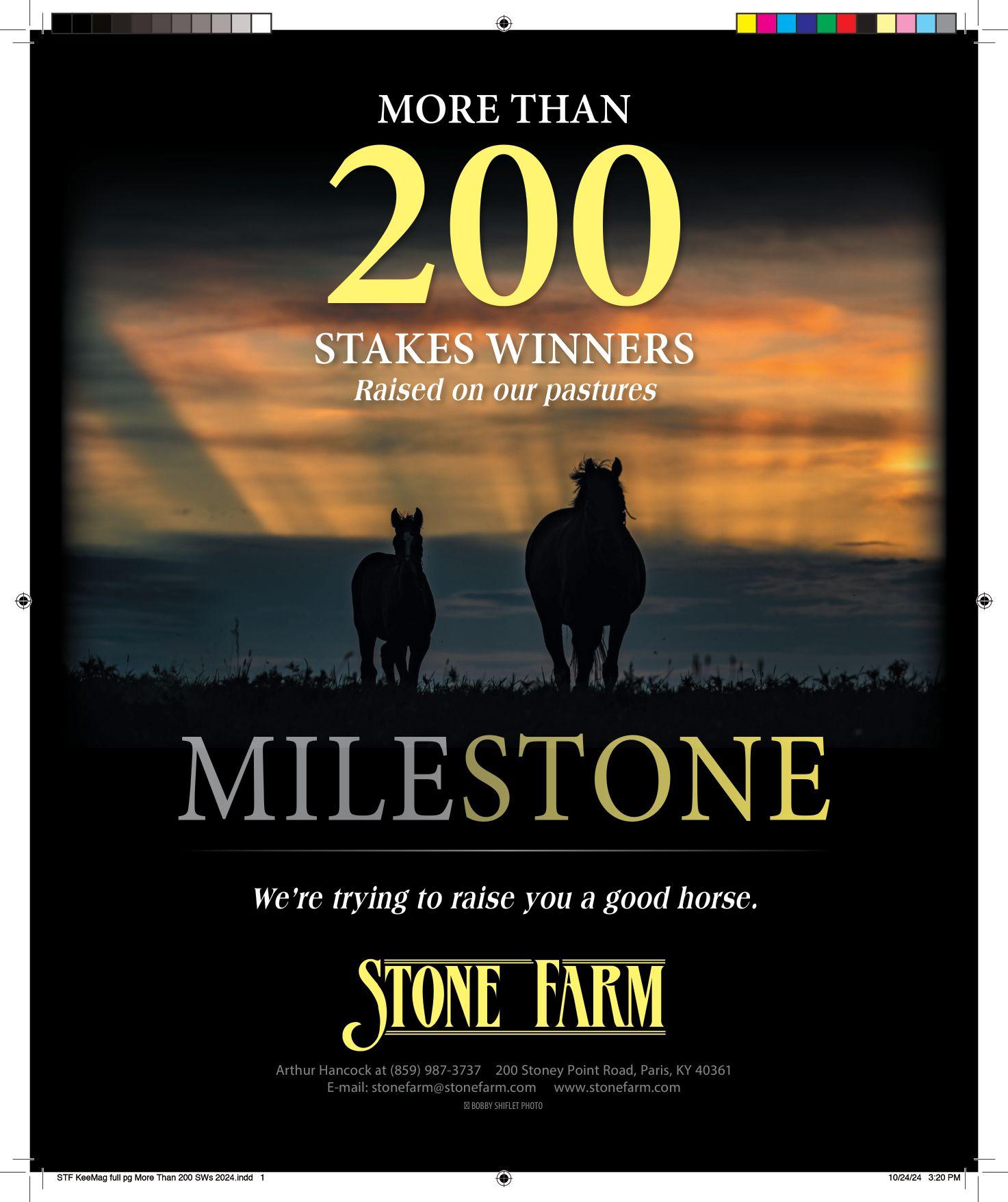

is an advantage to populate the broodmare ranks with fllies that have been born and raised at the farm.
“Our belief is it’s crucially important to have all the information you can about the flly you are bringing into your broodmare band,” he said. “Tat is the key to help you. From having raised the flly and raced her, you save a lot of time by knowing her. For instance, the [racetrack] trainer will tell you a flly has talent, but she is light. So, you know you have to eventually breed her to a stallion that will complement her in that way. Tat is the key to breeding: to improve what you have.”
Leah Alessandroni, the ofce and bloodstock manager at Bonne Chance, expanded on Figueiredo’s point. “Our goal is to produce our future broodmares, because as Alberto said, you get to know them so much better when you plan and raise them. You know what they looked like as a foal; you know their conformation. We don’t do a lot of corrective [surgery], so you know the produce you’re getting. And you get feedback from the trainer, which is so important. Maybe a flly had talent, but because of bad luck never gained black type because of that. Tat information is so valuable, and it’s harder to get if you’re buying a mare at auction.”
Bonne Chance in 2024 ofered eight yearlings at the Keeneland September sale, which is an average number for the outft. In book one, a Curlin colt out of Goiaba bred by the farm brought $725,000.
In a bid to, as Figueiredo puts it, “oxygenize” Bonne Chance’s bloodstock, a variety of bloodlines have been brought aboard via sales purchase as well. At the 2019 Keeneland November auction, Bonne Chance acquired the War Front mare Black Canary for $675,000. Sent to Medaglia d’Oro, she produced the Bonne Chance-bred stakes
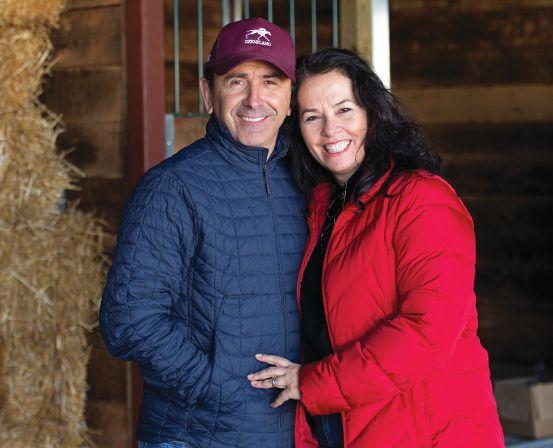
winner Golden Canary. Bonne Chance has kept for its racing stable a Quality Road flly out of Black Canary.
At that same auction, Bonne Chance brought home grade 2 winner Uzziel in foal to Candy Ride. Uzziel is by Harlington, who is a son of Kentucky Derby winner Unbridled out of the superstar runner and champion Serena’s Song. Bonne Chance has retained the Candy Ride son Uzziel was carrying at the sale. Tat homebred gelding, Noises Of, recently fnished second at Kentucky Downs and is a hard-knocking multiple winner of more than $400,000 for the farm.
In addition to Cambier Parc, Bonne Chance has reached the pinnacle of breeding a grade 1 winner on two other occasions. Following its purchase of Unbound, a Distorted Humor mare, at the 2015 Keeneland November sale for $310,000, Bonne Chance sent her to the













court of Justify. Along came Arabian Lion, who triumphed in the 2023 Woody Stephens Stakes, earned just under a half-million dollars, and now stands at stud at Spendthrif Farm. Also, Bonne Chance bred the Wootton Bassett colt King of Steel and sold him at the 2021 Keeneland September sale for $200,000. King of Steel became a winner of $1.8 million with triumphs in the 2023 QIPCO Champions Stakes and King Edward VII Stakes in England.
It is only ftting that Bonne Chance has enjoyed international success. Figueiredo is regularly traversing continents as a global operations whirlwind, and the staf is encouraged to adopt an international mindset as well.
“We all have a knowledge of North American bloodstock and racing,” said Alessandroni, “but we’ve also gotten to go to Newmarket, to South America to get an education and familiarize ourselves with international bloodstock.” She added that the South American horses that have come to Kentucky are known for having good minds and a stout, solid body type. Because they have thrived by being raised as naturally as possible in South America, Bonne Chance has imported some of those principles to Kentucky.
“We have started turning out yearlings at three or four in the afernoon — if the weather is nice — instead of keeping them up [in the barn] until seven,” Alessandroni said. “We are realizing that letting them be horses and building them is more important than if they get a little sunburned. Tey need to move around. It’s good for their brains.
Tat’s something we’ve instituted from the South American infuence.” Tis year, for the frst time, Bonne Chance sent a couple of yearlings from Kentucky to South America, reversing the normal pattern in a bid to share genes in both directions. Te operation stands two stallions, Ivar (a champion in Argentina who won the 2020 Shadwell Turf Mile at Keeneland) and Imperador (multiple Argentine grade 1 winner), in Argentina and hopes to support them by introducing mares with genetic variety. Tis blending of stock has created more of an international Toroughbred than has been the case in the past.
“At this point, I can’t look at a horse and say, ‘Tis is a typical Europeanhorse’or‘TisisatypicalAmericanhorse,’”statedFigueiredo. “Blood now travels around the globe. Te Northern Dancers, the Danzigs, the Danehills. You have Scat Daddy’s infuence here and in Argentina and Brazil. So, I guess we are building the same type everywhere. Go to Europe, and you will fnd good sprinters, good middle-distance horses, and the same here. I think we have more of the same kind of physical [appearance] because of the genetics.
“We are mixing some European lines with South American and North American pedigrees in our operation. It’s a potpourri. We have three Galileo mares. You must have Curlin blood, Into Mischief, Gun Runner if you want to succeed in this business. Yet, if you study the very good operations, they go for the correct mating for the mare. Tat’s not always thinking about the superstar stallions. It’s about what fts best for the mare and benefts her in the long term.”
Sergio de Sousa, the managing partner of Hidden Brook Farm outside Paris, Kentucky, grew up with Figueiredo in Brazil and rode horses there with his cousin throughout childhood.
“We rode anything we could put our legs over,” said de Sousa.


Nestled in the heart of Saratoga Springs, The Adelphi Hotel features 65 beautifully appointed rooms that provide a serene retreat. Enjoy our newly added on-site amenities, including a state-of-the-art ftness center, private spa treatment rooms, a luxurious conference center & more. Indulge your senses at our exquisite restaurants, Morrissey’s Lounge & Bistro and Salt & Char, both showcasing an array of seasonal dishes crafted from the fnest local ingredients. Whether you’re celebrating a special occasion, or simply seeking a getaway, The Adelphi Hotel promises an unforgettable experience.











“Alberto has such a solid background in breeding, racing, and training. He was involved with Rio Claro Toroughbreds and all those good horses for Mandella. Tey were top breeders, and that refects how well Bonne Chance has done.
“It’s no surprise,” de Sousa continued. “Alberto knows how to select quality. He is a global guy and has picked up great ideas from Australia, Japan, everywhere. He is a very progressive thinker, and that has a big infuence on the results.”
Te leadership team of Bonne Chance fosters a family-like atmosphere throughout the farm and the racing stable. Alessandroni works next to Carol Lobo in a small ofce just of the mansion. Lobo, the chief fnancial ofcer of Bonne Chance, is the wife of Paulo Lobo, who trains the farm’s racing stable and is known for his victories in the 2002 Kentucky Oaks and Alabama Stakes with champion Farda Amiga. Carol Lobo is overseeing a complete renovation of the mansion, which she can watch from her ofce window, and insists the construction will be fnished on schedule by Tanksgiving.
Tat the trains seem to run on time is a tribute to the farm’s staf, a small group of 10 that sees to the farm’s stock. Morale is boosted by barbecue/volleyball picnics. Te modest horse population helps ensure maximum care for the animals and responsible stewardship of the land. Alessandroni proudly gives a tour of the 360-acre spread. Te barns are more functional than fancy, with robust ventilation for the health of the horses. A gorgeous pond sits in a basin among the paddocks. Cows help to fertilize the felds, which are also rotated to preserve the mineral
Working boldly on a tight timetable, Bonne Chance teamed a worldrenowned rider with a rookie horse and was rewarded with a silver medal in team show jumping at the 2024 Paris Olympics. Rider McLainWard, 48, is a superstar in the discipline of show jumping, the epitome of a classic Olympic performer.The Paris Games marked his sixth Olympics and the ffth time he has stood on the medals stand. His equine partner, Ilex, was competing in his frst Olympics, but stood up to the test on the world stage, earningWard his third silver medal to go along with a pair of gold medals the rider scored in the 2004 and 2008 Games.
The Dutch-bred Ilex was purchased at
riches. Te horses thrive here.
Elkhorn Creek ribbons through the back of the property shaded by woods. On a rise between barns a simple stone marks the resting place of Sealy Hill. It all feels tight-knit, a product of key players such as farm manager John Durr and his son and assistant Dalton Durr, both kept on from the previous ownership.
Breeding decisions are made only afer input from the managers, who bring mating suggestions for each mare to the table for discussion. “Everyone has the opportunity to pitch,” noted Alessandroni. “At this point, we know most of the mares and what they need, what they’re producing. Many times, we’ll propose the same one or two stallions for the mare, and it’s a case of picking out a top choice from there. We’re pretty much on the same wavelength.”
Gilberto Sayao is immersed in horsemanship. Besides his Toroughbred racing and breeding operations in South and North America, he has stables of jumpers and polo horses. In 2017, he established a headquarters for show horses in Wellington, Florida, and put together a staf so he could personally participate in jumping. He also opened a breeding section in Belgium, where the market for jumping horses is strong.
Although the Bonne Chance staf are immersed in Toroughbreds, they nevertheless adjusted their schedules to tune into the Olympic coverage to root for Ilex.
auction in Belgium by Bonne Chance owner Gilberto Sayao, a horseman involved inThoroughbred racing and breeding in South and North America, as well as in polo and show horses. When Ilex showed promise in Europe, he was sent to Sayao’s facility inWellington, Florida, for further development.

Last January,Ward agreed to begin working with Ilex, less than eight months before the pair would have to qualify to represent the U.S. at the Olympics.
“To get to know the horse well enough to qualify, and then for us to be able to put
together a medal performance, that is a quick timeframe,” allowedWard. “But the Bonne Chance team and their rider Fabio Leivas had done a fabulous job producing the horse up to that level. Luckily, the horse was in a good position and I have some experience, all of which helped.”

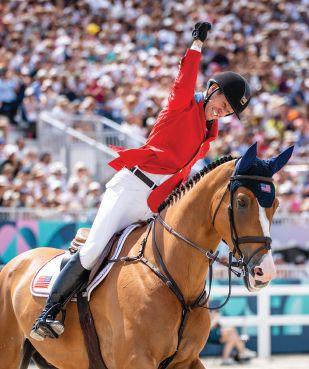
Ward, who was teaming with Bonne Chance for the frst time, added that it is far more common to work with a horse for a year or two to learn about it before engaging in such competition.
At 11, Ilex is entering the prime of his career, and after grabbing the silver medal in the team show jumping event in Paris, Bonne Chance hopes he can compete four years hence at the Los Angeles Olympics in 2028.
While all the horses competing in Olympic show jumping are warmbloods,Ward said that the lineage of the breed is blurring as breeders try different combinations.
“In general terms, the gap between the warmbloods andThoroughbreds is not what it once was,” he said. “Most of the breeding for the top show jumpers today is a hot-blooded, light horse. If you look through most of the breeding lineages of the Olympic horses, you see a lot of American, French, and EnglishThoroughbred. And there are trotters [Standardbred] as well. You see more of these crossovers over the last 50-75 years, so the modern warmblood is often a relatively light horse.
“We woke up early to watch it, and we were screaming and jumping with excitement,” said Carol Lobo. “When the commentator mentioned Versailles, it was special.”
Figueiredo was at the farm for the silver medal performance as well. “We are not really part of the team that developed Ilex, but it was still so nice for everyone involved with Bonne Chance,” he said. “Te work done by the people in fnding the horse, developing it, and him becoming a silver medalist — that is exciting for everyone. For Gilberto, it is even more emotional because he developed the program. He is the guy who puts a lot of energy into developing these horses, bringing the best team together. And he’s been successful.”
Te same can be said for Bonne Chance in its frst 10 years in Kentucky. Its quality-over-quantity approach is working, as is its investment in doing right by its horses and people.
“Would I have predicted 10 years ago that we would be doing this, already with grade 1 winners? Not really,” Figueiredo noted. “We have a very nice team that works together, and the results have been fantastic for a brand-new farm. You can feel a positive vibe. Everyone is happy in what they are doing, and everyone is proud. And that is a victory.” KM
“Ilex is a big, strong horse. Powerful. He might be a bit large for the ideal show jumper, but he has a lot of blood and energy and carries himself well. No matter which equestrian sport you’re in, the characteristic we all talk about is what you can’t see: the horse’s intelligence and desire to perform. Some horses understand the questions being asked of them better, and have an instinct that aligns with being successful at their sport.”
Despite their relatively short time together,Ward expected big things heading into Paris.
“We are a powerhouse country in show jumping, and we expect to medal at the Olympic Games,” he stated. “I wouldn’t go with a horse, or go with myself, if I didn’t believe I could contribute to a medal-winning performance. But there are always challenges, one of which was the quick time period to come together. I thought Ilex performed spectacularly. It was a great reward for our work and my team’s work, and for everyone associated with Ilex going back to his breeder and owner. All took great steps to bring us together and make this happen.” — LS
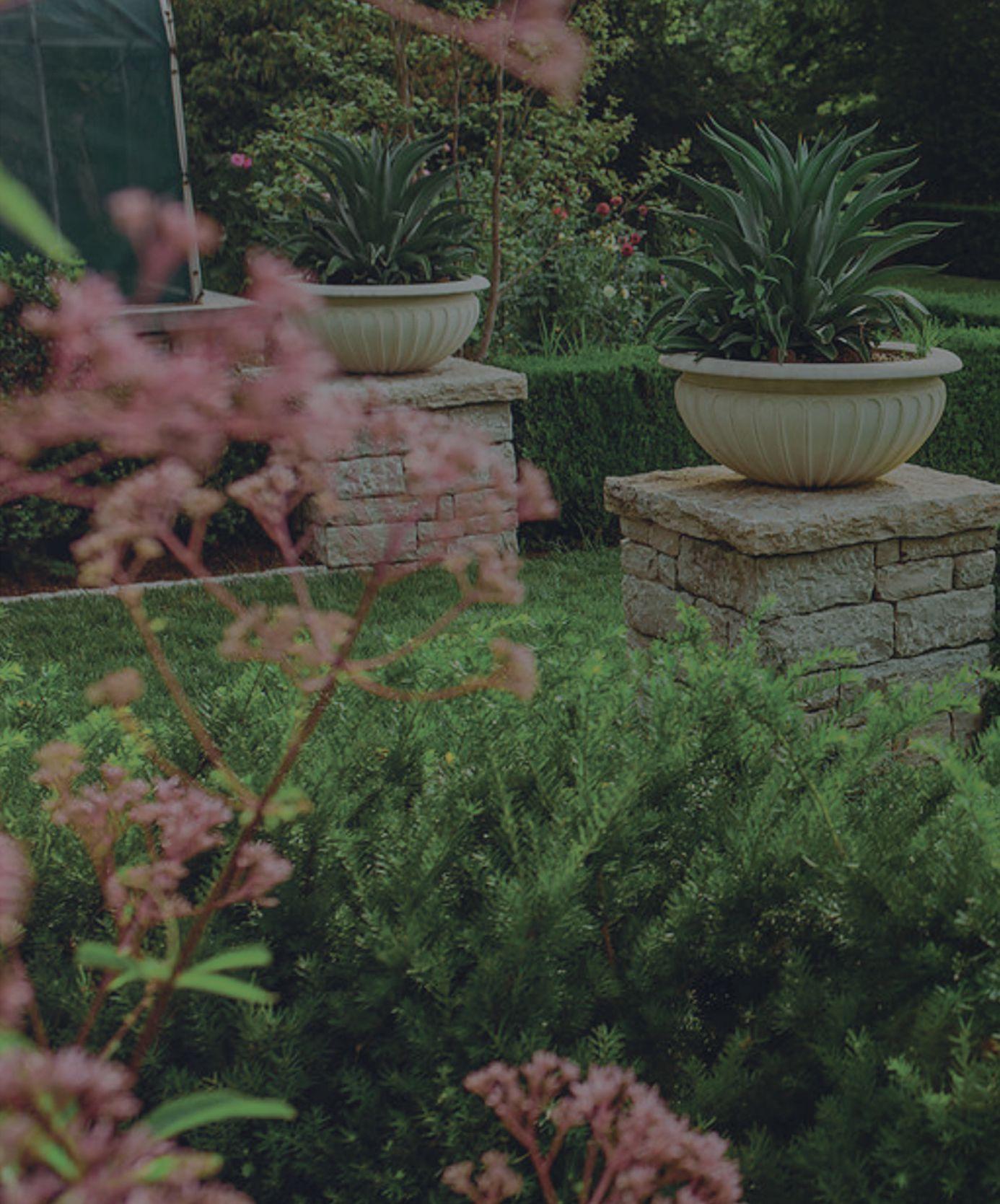







JOSEPH HILLENMEYER GARDEN DESIGN
"THE COLOR OF SPRINGTIME IS IN THE FLOWERS; THE COLOR OF WINTER IS IN THE IMAGINATION.” - Terri Guillemets
Winter is an optimal time to plan a future landscape. During the cold months of winter, many plants are dormant, but creative garden design still thrives. At JHGD we take advantage of the quieter days of winter to formulate concepts, plan out a vision, and design beauty for the warmer seasons to come.

v

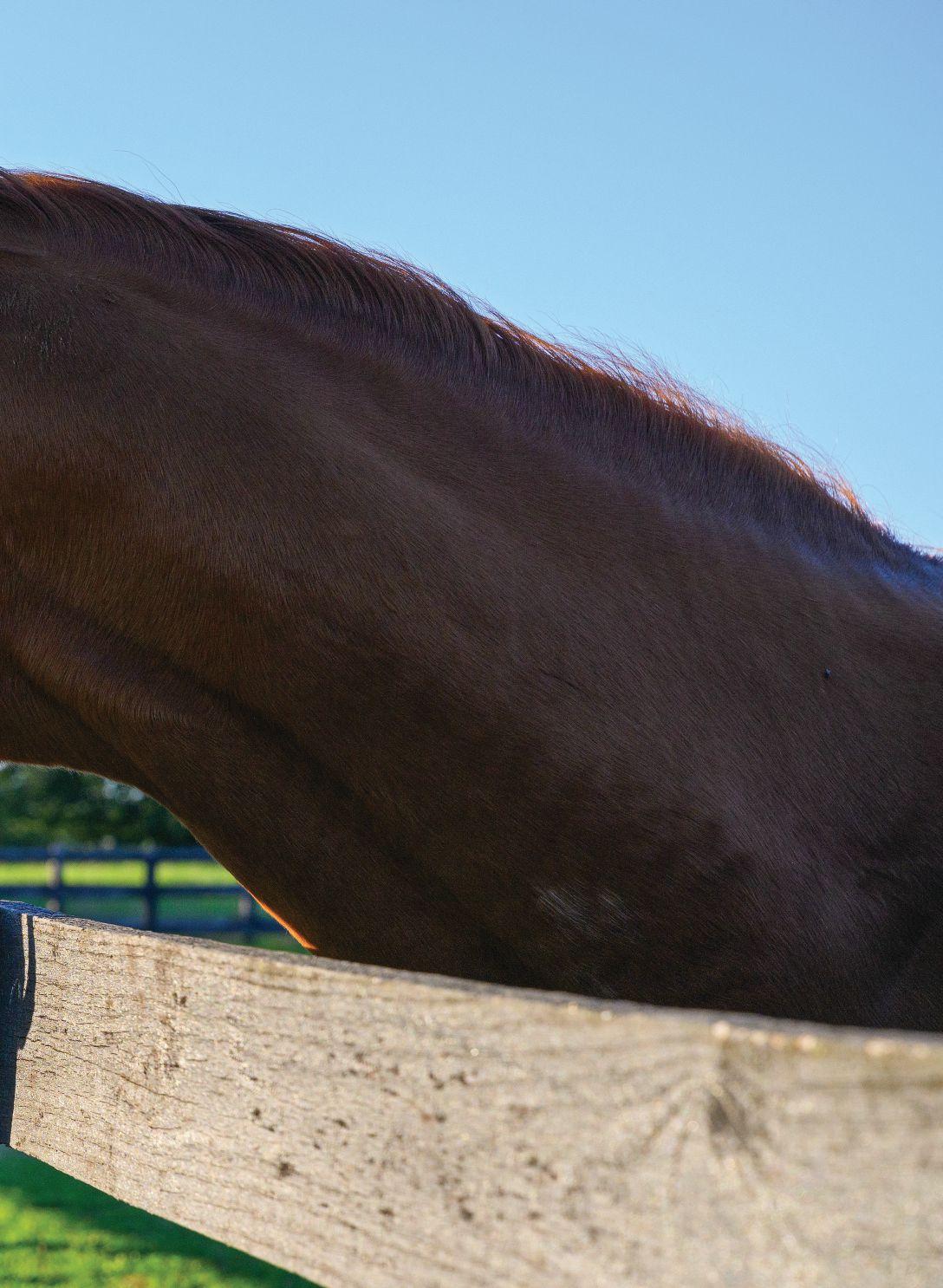
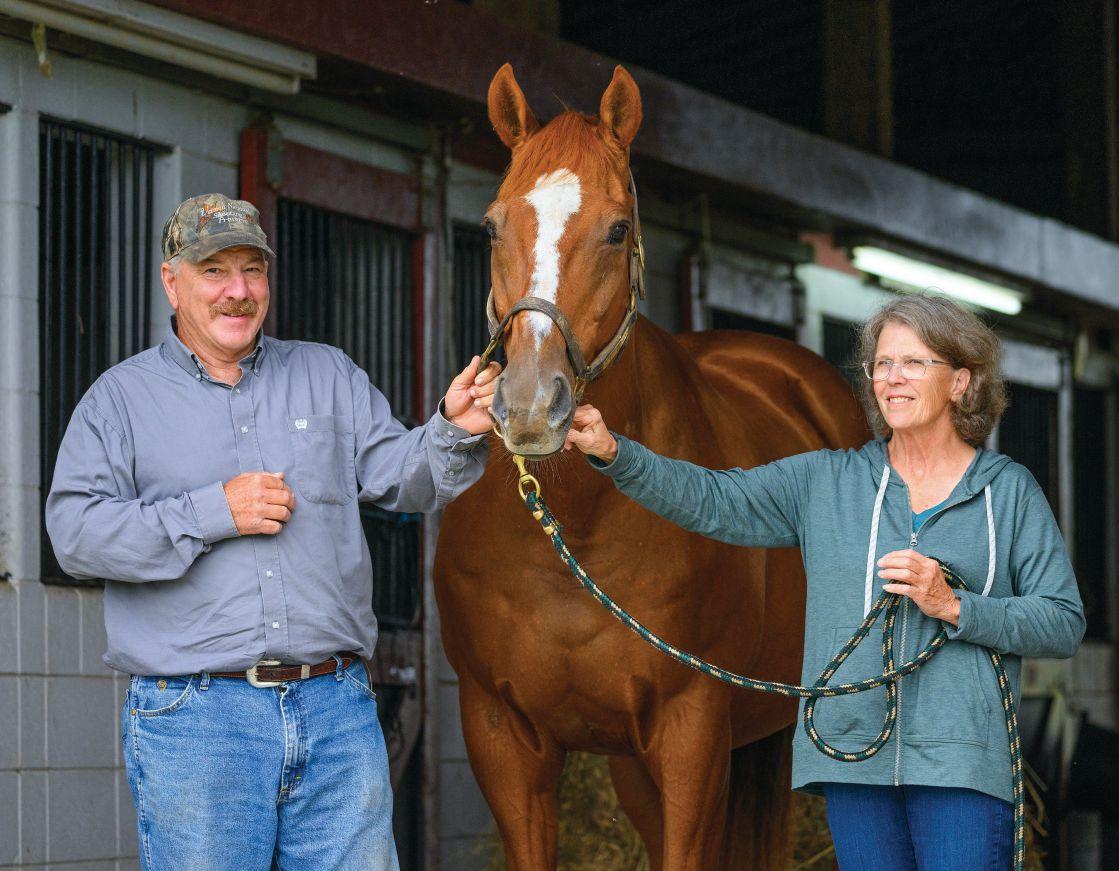
WISE DAN HAS ALWAYS been a homebody. During his storied racing career, his home was Keeneland where Charlie LoPresti based his training operation in the year-round Rice Road barn area. But he also had a second home only a short distance away at LoPresti’s Forest Lane Farm for needed rest and relaxation. So it was only natural that when Wise Dan retired, that’s where he headed.
From 2010 to 2014, Wise Dan generated 23 victories, including 11 grade 1 stakes, and banked more than $7.5 million in 31 starts. A winner of six Eclipse Awards, he is the only horse to capture the same three honors — champion on turf and dirt and Horse of the Year — in consecutive years. He closed his career with his second
victory in Keeneland’s grade 1 Shadwell Turf Mile Stakes on opening weekend of the 2014 fall meet. Subsequent minor injuries derailed a comeback, and the chestnut gelding lef Keeneland for the fnal time the following September.
As he did on all of Wise Dan’s local transports, LoPresti hauled him to Forest Lane Farm about 25 miles southeast of Keeneland. LoPresti and his wife, Amy, have leased the 90-acre Toroughbred operation from the Kessinger family for three decades while living on their own adjoining 40 acres. LoPresti saddled his fnal racetrack starter in 2020, but the couple continues training yearlings and accepting a few track layups on a smaller scale while relishing their own semi-retirement.
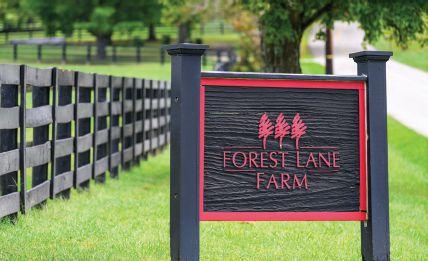
In this quintessential Bluegrass region setting, Wise Dan is fully retired and continues to thrive while doing a whole lot of nothing. While living primarily outdoors, he shares a paddock with his half brother, Successful Dan.


Te unlikely story of the Wise DanLoPresti partnership began in 2008 when Wise Dan arrived as a remarkably unremarkable prospect well in advance of his early lessons under saddle. By the time he had grown into what LoPresti recalled as a “big and gangly” under-tack yearling, expectations were likely nonexistent for the youngster born for entirely sentimental reasons.
His breeder, Morton Fink, had downsized his racing stable afer decades in the business but retained broodmare Lisa Danielle solely because she was named for his granddaughter. No one could have predicted that the one-race-winning daughter of Wolf Power would produce a foal reminiscent of her legendary maternal grandsire, Secretariat. Bred to the midpriced stallions of the era, Lisa Danielle produced eight winners headlined by Secretariat lookalike Wise Dan (a son of Wiseman’s Ferry), grade 2-winning near millionaire Successful Dan (by Successful Appeal), stakes winner Our Royal Dancer (a daughter of Roy), and graded stakes-placed flly Enchanting Lisa (by War Chant). She was honored as 2012 Broodmare of the Year.
When Wise Dan frst arrived at Keeneland, he began showing signs of superiority.
“He was tough to gallop,” LoPresti said. “When we started to breeze him, we realized he was pretty special. His stride was so efcient and so long that he wanted to gallop fast. Te riders had been holding him back but that is not what he wanted.”
Afer months of conditioning on what
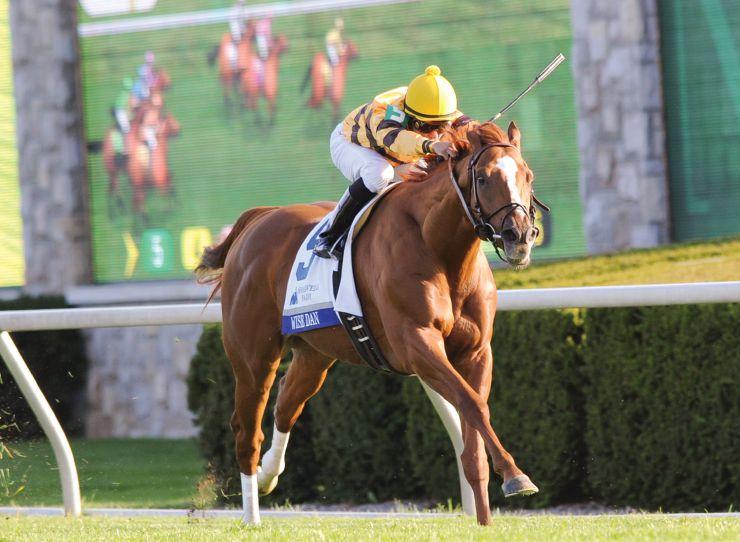


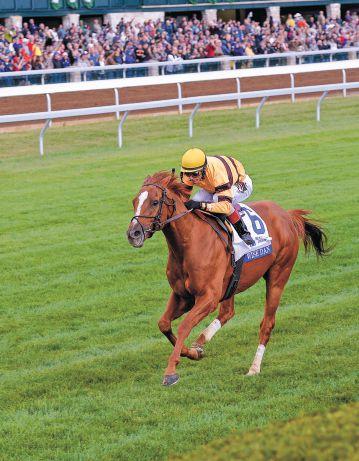


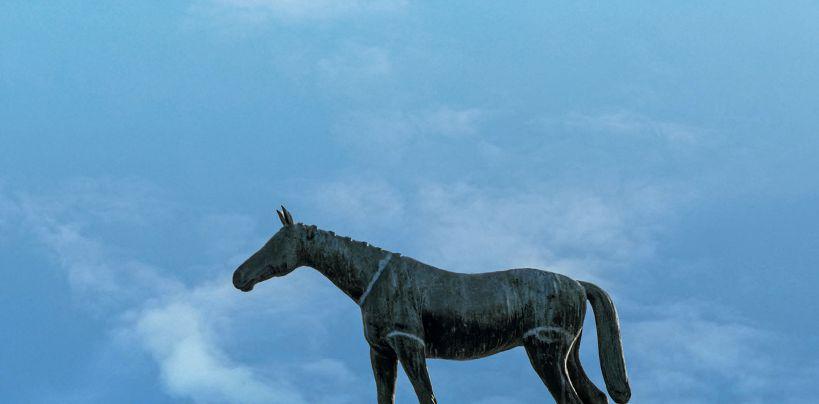




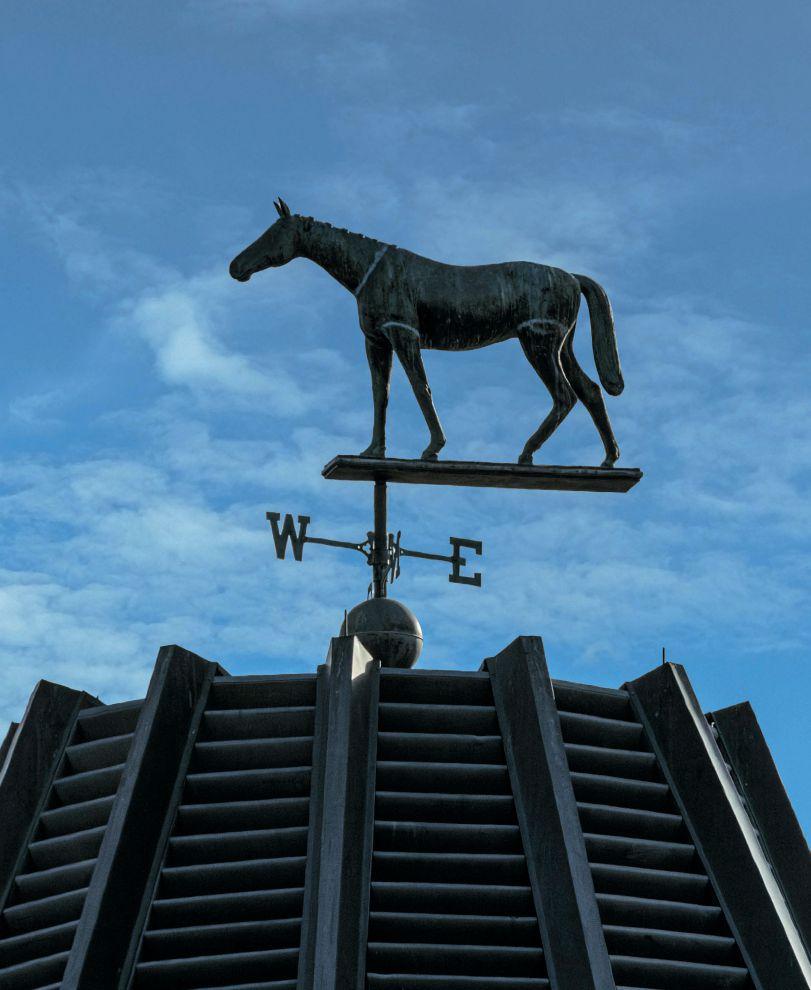

was then Keeneland’s all-weather surface, Wise Dan made his career debut at 3 on the same surface in the fnal race on a snowy night at Turfway Park on Feb. 26, 2010.
Understandably confdent prior to post time, the LoPresti team was perplexed when he fnished ffh, beaten more than four lengths as the slight second choice in the 11-horse feld.
Tis story might not have been written if Fink had overruled LoPresti’s assessment that the loss was attributed to poor racing luck.
“He wanted to run him in a claiming race,” LoPresti said.
Fink reasoned that with a loss in the books and Wise Dan’s mediocre pedigree, no one would claim him.
“I asked him to give him one more chance,” LoPresti said. “We thought he was pretty special.”
Wise Dan more than made amends a month later at Turfway when he cruised to victory by 15¼ lengths as the 3-5 favorite.
A Churchill Downs allowance optional claiming victory on a sloppy track soon followed. Wise Dan returned to action that fall to score his frst stakes win in Keeneland’s grade 3 Phoenix Stakes, as a prep for the Breeders’ Cup Sprint at Churchill Downs in which he fnished a close sixth. Wise Dan closed his debut season with a Churchill Downs allowance score.
In what would become his routine, Wise Dan returned to Forest Lane Farm over the winter for rest and relaxation. As a 4-yearold, he won four stakes, including three graded, on three diferent surfaces in eight starts. His season-ending triumph in the Clark


Owner/breeders Morton and Elaine Fink were Wise Dan’s biggest fans.
Right, assistant trainer Reeve McGaughey accompanied Wise Dan on his out-of-town engagements. Here, he leads his charge on a farewell tour of the Keeneland saddling area in 2015.
Charlie LoPresti recognized Wise Dan’s ability not long after the homebred son of Wiseman’s Ferry commenced training at Keeneland.
» Born: Feb. 20, 2007, in Kentucky
» Pedigree:Wiseman’s Ferry— Lisa Danielle, byWolf Power
» Race record: 31-23-2-0
» Earnings: $7,552,920
» Owner/breeder: Morton Fink
» Trainer: Charlie LoPresti














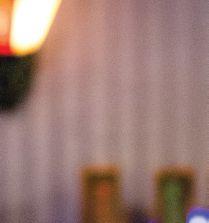
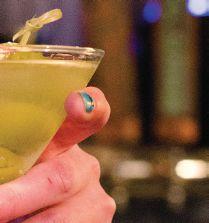
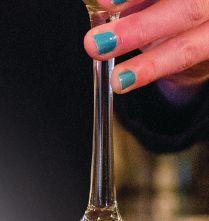

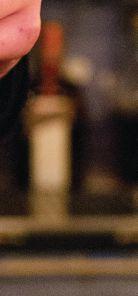










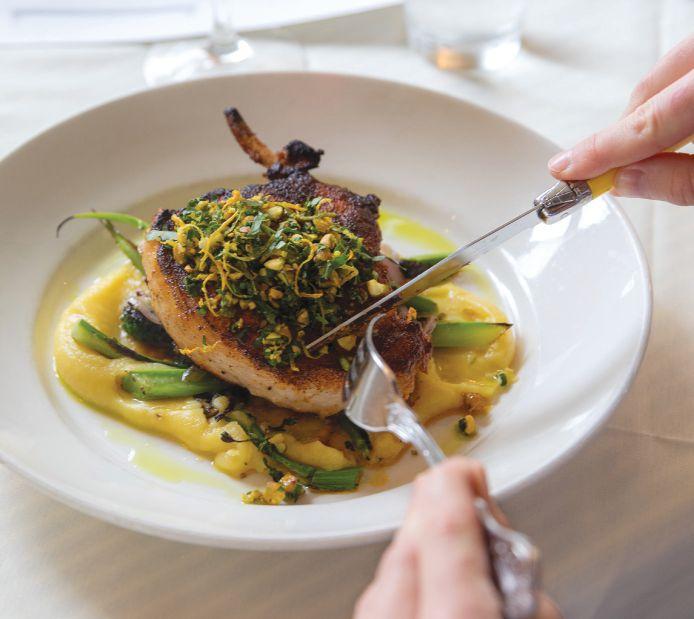

Handicap at Churchill Downs was his frst grade 1 victory as well as the frst time future Hall of Famer Johnny Velazquez was aboard. Velazquez, who has ridden in nearly 38,000 races, vividly recalled that initial experience.
“I had watched his races on video,” he said. “When I got to the [saddling] paddock, I told Charlie that I noticed he broke slow from the gate. I told him I would keep him as quiet as possible so that he would relax and hopefully have a good fnish. Two horses went on to the lead, and I stayed third. Te favorite was in front of me. When we got to the quarter pole, I moved my hands a little bit. At the eighth pole he opened up.”
Together, Velazquez and Wise Dan would win 11 more races including the 2012 Breeders’ Cup Mile at Santa Anita and the 2014 Maker’s 46 Mile and Shadwell Turf Mile at Keeneland.
Wise Dan’s only other jockey during his fnal 18 races was Jose Lezcano, who was victorious in all four opportunities, including the 2013 Breeders’ Cup Mile at Santa Anita and the 2013 Maker’s 46 Mile and 2012 Shadwell Turf Mile. Both Velazquez and Lezcano are frequent visitors to Forest Lane Farm when they are in Lexington.
“He is one of my favorite horses of all time,” Velazquez said. “One of the fastest horses I have ever ridden. Wherever we put him, he was going to go out there and do his best. I was blessed to be part of the team.”
LoPresti noted that naming the dedicated behind-the-scenes crew would fll a page but credits exercise rider Damien Rock and assistant Reeve McGaughey, who

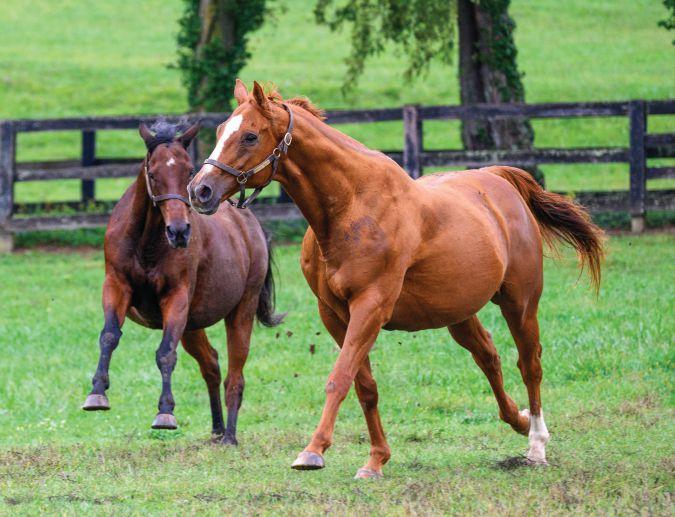


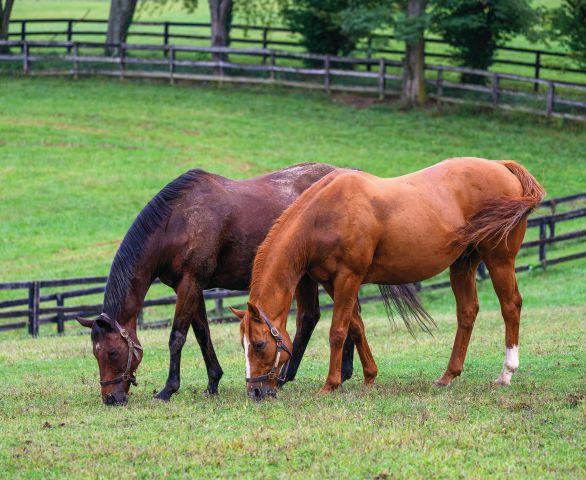
accompanied him on out-of-town engagements, with bringing out the best in Wise Dan.
Despite his failing health, Fink attended most of Wise Dan’s races including both Breeders’ Cup victories and his Keeneland races. Fink passed away in 2019, fve months before Wise Dan was announced as a Hall of Fame inductee.
“Mr. Fink would tell me that Wise Dan was one of the few things he had to look forward to — talking afer the workouts, planning races, making dinner plans for afer the races,” LoPresti said. “We had a lot of ofers to sell him for quite a lot of money. Money was not the object. He was in the game for 40 years and never in his wildest dreams thought he would have a horse of this caliber. Tat kept him going. Tat is why we never took Wise Dan [overseas]; Mr. Fink could not travel that far.”
When LoPresti looks back on Wise Dan’s incredible success, he rattles of several races among his favorites, including the 2013 Firecracker Handicap in torrential rain that produced an Eclipse Award-winning photo.

» Elected to Hall of Fame in 2020
» Only horse to win seven graded stakes at Keeneland
» Only horse to win same three Eclipse Awards in consecutive years
» 2012 Horse of theYear
» 2012 Champion grass horse
» 2012 Champion older horse
» 2013 Horse of theYear
» 2013 Champion grass horse
» 2013 Champion older horse
» 2011 Clark Handicap (Churchill Downs)
» 2012 Woodbine Mile (Woodbine)
» 2012 ShadwellTurf Mile (Keeneland)
» 2012 Breeders’ Cup Mile (Santa Anita)
» 2013 Maker’s 46 Mile (Keeneland)
» 2013 Woodford ReserveTurf Classic (Churchill Downs)
» 2013 Woodbine Mile (Woodbine)
» 2013 Breeders’ Cup Mile (Santa Anita)
» 2014 Maker’s 46 Mile (Keeneland)
» 2014 Woodford ReserveTurf Classic (Churchill Downs)
» 2014 ShadwellTurf Mile (Keeneland)
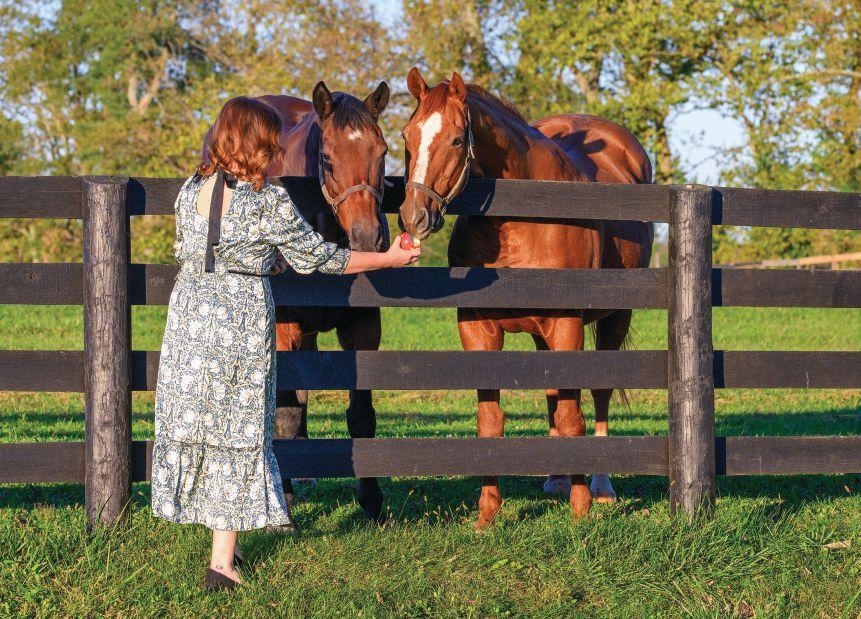
“Te biggest win for me was when he came back from colic surgery in 2014 and won the Bernard Baruch at Saratoga,” LoPresti said. “A lot of people thought we were crazy and thought he would never come back from colic surgery. I wondered if I was doing the right thing. Tat win meant a lot to me.”
Two months later Wise Dan won the Shadwell Mile for the second time. An ankle injury prevented another Breeders’ Cup run, and he went to Forest Lane with an uncertain racing future. While he made it to the comeback trail, his intended return in the 2015 Shadwell was scrapped when he incurred a slight tendon injury. LoPresti hauled him for the fnal time from his Keeneland barn to Forest Lane.
During his early retirement, Wise Dan made several public appearances at Keeneland, Churchill Downs, the Kentucky Horse Park in Lexington, and Old Friends Equine Retirement in Georgetown, Kentucky. Many people thought the fan favorite belonged in a public place easily accessible to admirers, but Fink could not be swayed. Te LoPrestis welcome visitors to Forest Lane by appointment and said there have been many through the years. Admirers also send cards and gifs such as Mrs. Pastures brand horse cookies especially around
Christmastime and Wise Dan’s birthday. In addition to horse cookies, Wise Dan’s other favorite treat is apples.
Life is simple for the brothers Dan. Regardless of the season, they live outdoors all night except in especially inclement weather. Damion Ginez, who has worked for the LoPrestis since Wise Dan’s earliest days on the farm, brings them inside each morning and feeds them. Ten he grooms them or bathes them if they are muddy.
Ten the two fat and happy ex-racers munch their hay and snooze in their stalls until early afernoon when they are led back to their paddock. Although Wise Dan and Successful Dan are docile in their daily routine of lounging, they tend to put on a show when company comes. When turned loose in their paddock in early afernoon, they gallop, rear, buck, and spin like youngsters instead of pasture pufs approaching age 20.
LoPresti said the transition from racetrack life was seamless with Wise Dan.
“Hesettledinbecausehehadalwayscome back here,” LoPresti said. “Tis is the life he should be living. He was raised here, broken here, recovered from colic surgery here, and was always turned out with Successful Dan. Amy and I know him better than anybody and he knows us. Tis is home.” KM






















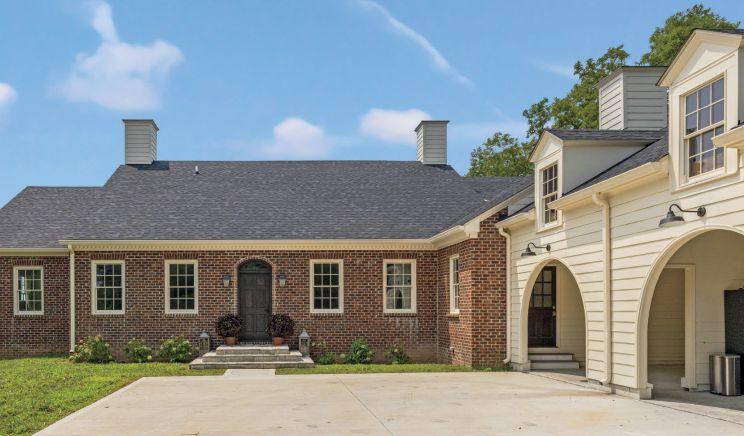


An estate evoking historic Bluegrass homes, this fine residence is surrounded by thoroughbred farmland & the Hunt Country Built by Koller Warner in 2022-2023, the home blends time-honored formal spaces with all the comforts of modern living. Behind the lovely front door & fanlight, a formal dining room, living room, & study await Nearby, an inviting family room offers a floor to ceiling stone hearth with gas fireplace. Custom millwork and rich hardwoods grace each space.
An estate historic homes, this fine residence is surrounded Country. Built Warner in 2022-2023, the home blends time-honored formal with all the comforts of modern Behind the lovely front door & a formal dining room, living room, & study await. Nearby, an inviting room offers a floor to stone hearth with gas Custom millwork and
Inquiries
Zach Davis zach@kirkfarms.com
859.576.8195 | 859.231.8444 kirkfarms.com
The heart of the home rests in its timeless, sun-soaked kitchen with accompanying butler's pantry. Verdigris-hued custom cabinetry complements heirloom brass fixtures. The attractive La Cornue range and Sub-Zero refrigerator are sure to please the chef. The porcelain apron sink alongside stone and butcher's block countertops brings further warmth. In the large first floor primary suite, double doors open to a gleaming bathroom. A soaker tub and marblelined shower lend classic style. Currently 3 BR & 2.5 BA, two further BR and a full bath have been roughed-in upstairs. Two porches and a patio offer verdant views, including both mature and burgeoning trees Additional acreage may be available
The heart of the home rests in its timeless, sun-soaked kitchen with accompanying butler's heirloom brass fixtures. The attractive are sure to please the chef. The porcelain apron block countertops further warmth. In the first floor primary suite, double doors open to a gleaming bathroom. A soaker tub and marbleBR & 2.5 BA, two further BR and a full bath have Two offer verdant views, trees. Additional may be available.
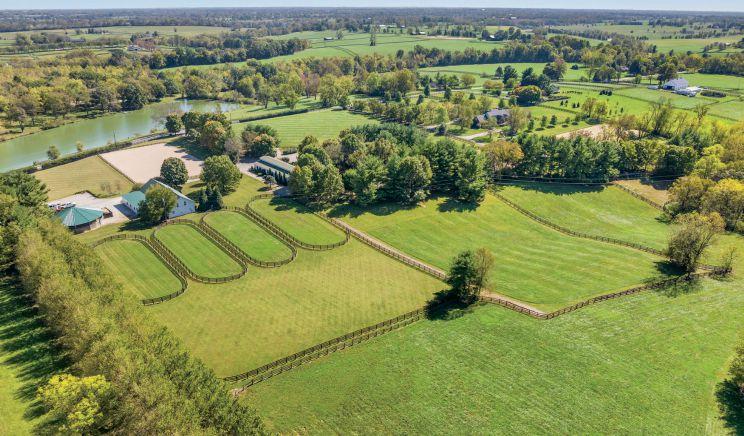
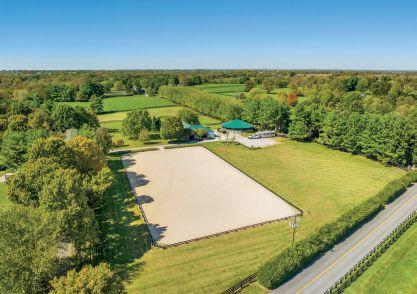
4781
Designed
12.4-acre horse farm has been a celebrated equestrian. Located on historic Mt.
Pike in Fayette Co,, the farm is a mere 10 min. from the at Lyons, Coast.
Hidden behind a dense thicket of native trees, the entrance offers immense privacy. a verdant offers respite at the heart of the farm. the 4 paddocks, field, & for Fine wash racks each with hot water, washers & and finished space w/3 full bathrooms. The 240' x 125' a an inviting retreat.
12.4-acre turnkey horse farm has been lovingly developed by a celebrated equestrian. Located on historic Mt. Horeb Pike in Fayette Co,, the farm is a mere 10 min from the Kentucky Horse Park and premiere equine hospitals. Immediate neighbors include Avalon at Cherry Knoll, Castleton Lyons, Ekeroth, Lane's End Oak Tree, Marigot Bay, and Spy Coast Hidden behind a dense thicket of native trees, the gated entrance offers immense privacy Well-landscaped throughout, a verdant courtyard offers respite at the heart of the farm. Newer fencing encircles the 4 paddocks, field, & a green space ideal for conditioning. Fine equine facilities include: 2 barns complete with 24 stalls, feed & tack rooms, wash racks each with hot water, washers & dryers, and finished space w/3 full bathrooms. The 240' x 125' irrigated Wordley Martin ring has excellent footing and overlooks an adjacent lake. Also: a Kraft 6-horse covered hotwalker. A sunny contemporary residence makes an inviting retreat.
Inquiries
Zach Davis zach@kirkfarms.com
859.576.8195 | 859.231.8444 kirkfarms.com






Deo gratiam habeamus. It’s our Commonwealth’s Latin motto. It also happens to be what we at Kirkpatrick & Co. do each day. We hope you, too, find much to be grateful for as we close another blessedly Bluegrass year.
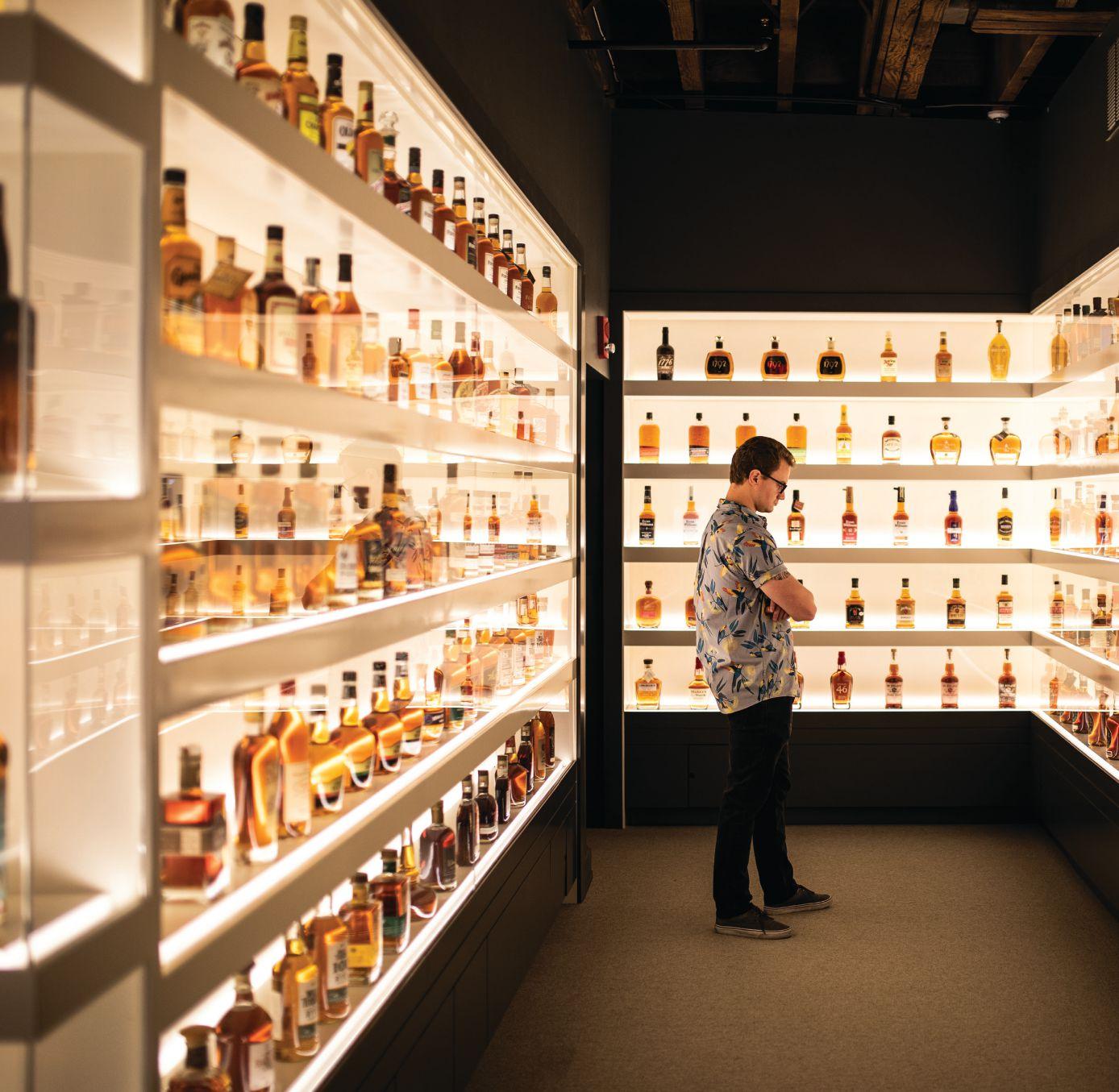

THE KENTUCKY BOURBON TRAIL, celebrating 25 years, has developed into a major tourist attraction that has helped put the state and its signature beverage on the world map
By Kim Kobersmith
Kim

WWHEN THE KENTUCKY
Bourbon Trail™ opened in 1999, it was a modest little thing consisting of just seven distilleries. All were headquartered in Central Kentucky relatively close to each other. Visitors who ventured out might get a tour by
the master distiller or a janitor, depending on who was available. What a diference 25 years can make. Te Trail now has 46 stops, and the Kentucky Distillers’ Association anticipates there could be 60 by this time next year. Te number of visitors topped 2.5 million in 2023 and continues to set record levels of growth. Having hosted guests from around the world, the Trail is recognized as one of the best spirits tourism experiences globally.
Each place has a story. Second Sight Spirits in Ludlow, for example, aims to bring the art of handcrafed distilling back to Northern Kentucky. Te owners came to bourbon afer theater careers on the Las Vegas Strip, so they know all about creating a world-class product and presenting it in a creative, magical way. Teir
Below, distilleries are offering more unique visitor experiences, such as the chance to draw your own drink from a barrel.



tour unravels the mysteries of distillation, and they share circus stories interspersed with predictions from the mystical fortune-telling still. In the lounge, visitors can sample their bourbon, rums, moonshine, and signature hazelnut liqueur.
Perhaps the most signifcant evolution for Trail visitors is the growing emphasis on the guest experience. Originally ofering basic tours covering the distillation process, brands along the Trail now have an array of authentic immersive experiences and uniquely Kentucky moments. And it is only getting better: KDA members project they will spend $194 million in the next three years to expand tourism opportunities along the Kentucky Bourbon Trail, whose name is trademarked. No matter what your interest, there is a Trail stop for you.
“It is an all-encompassing sensory, full-on bourbon experience,” explained Sam Lacy with the Bourbon Capital Alliance in describing a visit to the Trail.
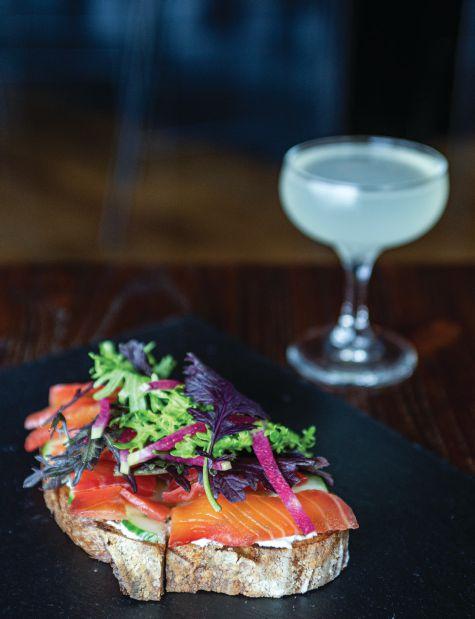
Maybe the best way to understand what the Kentucky Bourbon Trail is, is to explain what it is not. It is not a literal trail or road map with a beginning and an end; instead, it is a collection of



To enable guests to prolong their bourbon experience, Log Still Distillery offers gracious accommodations.
distilleries of varying sizes ofering a range of experiences. Te Trail is divided into six regions, and visitors create their own tour by choosing stops that appeal to their tastes and interests. It’s not about checking sites of a list; it’s about savoring the places, favors, and people.
“As distilleries build out the experience, they are encouraging people to slow down and make bourbon part of their lifestyle,” said Mandy Ryan, director of Kentucky Bourbon Trail experiences with the Kentucky Distillers’ Association.
In the last decade, as visitors have clamored for more authenticity and Prohibition-era Kentucky laws have been changed to expand options, distilleries have started to ofer in-depth, behind-the-scenes, personal encounters that are only available on-site.
Like barrel thieving, for example, which is siphoning of a taste of the unprocessed pure product directly from the barrel. Whiskey Tief Distilling Co. near Frankfort has built its business on this practice. On a visit to the 127-acre farm, guests sample fve bourbons straight from the barrel, uncut

and unfltered, and then have the opportunity to fll their own bottle. Whiskey Tief products are only available at the distillery.
Connoisseurs can choose and bottle a single barrel bourbon at New Rif Distillery in Newport afer a personal tasting experience on the distillery campus. Te bourbon is maintained at barrel proof and has a personal label afxed. At Bardstown Bourbon Co., visitors can bottle their own from the limited Distillery Collection oferings, and at Woodford Reserve in Versailles, they can have a bottle engraved in the gif shop.
To savor the distillery experience, nothing beats taking a cocktail class or sampling gourmet cuisine paired with spirits. Visitors to Wilderness Trail Distillery in Danville, for example, can learn to create the perfect smoked old-fashioned, a twist on the classic bourbon cocktail often served in restaurants. At Bardstown Bourbon Co., the bar ofers a food pairing of light appetizers specially selected to accent a tasting of three bourbon blends.
Several distilleries ofer memorable dining experiences. Copper & Kings’ brandies and gins inspire both the beverages and food, like gin-cured salmon, at its Roofop Bar and Restaurant in downtown Louisville. Pastoral Castle & Key Distillery near Frankfort flls a set of historical buildings surrounded by lush grounds, where guests are welcome to order from the walk-up bar or food trucks and dine

















while sitting in the sunken gardens, listening to the creek murmur by.
Farms are a primary locale for distilleries, giving visitors a chance to see bourbon ingredients like corn and rye swaying in the breeze. Maker’s Mark in Loretto has fully embraced agrotourism, with hiking trails and tailored tours on its 1,100-acre space. Te Honey and Apiary experience starts with a Gold Rush cocktail, ambles through pollinator plantings and the apiary, then ofers a talk with the resident beekeeper. Other tours explore the brand’s regenerative agriculture work in innovative gardens and estate wheat felds. Te farm is also involved in research and preservation work for the American white oak tree species, from which bourbon barrels are crafed.
Log Still Distillery in New Haven is a full-service destination unlike any other. Fourteen on-site lodging options range
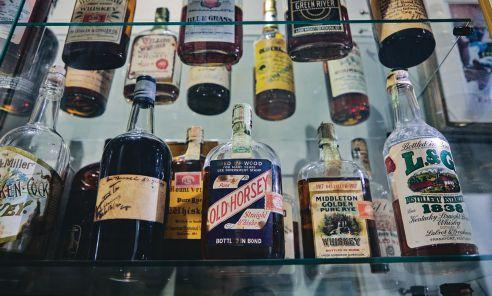

Above, Maker’s Mark farm grows estate wheat for its production.
Right, the mother tree at Maker’s Mark is at the root of the distillery’s work on white oak trees, the traditional wood for constructing bourbon barrels.
from cozy rooms named for family bourbon legends to a four-bedroom historic mansion. Te Amp is a 2,300-seat outdoor event venue that hosts national-level musicians weekly from May to October. And coming soon is a fully operational train depot for a new twist on a designated driver.
For many visitors, the Kentucky Bourbon Trail is their introduction to the commonwealth. Te beverage and state are inextricably linked, with a long and storied history. Te local limestone water naturally flters impurities and is the foundation of bourbon. Te prevalence of corn growing in the region and the area’s climate, with cold and hot extremes, are the perfect ingredients for a quality drink.
“Every sip is a taste of Kentucky,” said Eric Gregory, president of the Kentucky Distillers’ Association.
A host of businesses beyond distilleries support the Kentucky Bourbon Trail experience. Many towns and cities have embraced their location near the Trail and serve as gateway communities, ofering


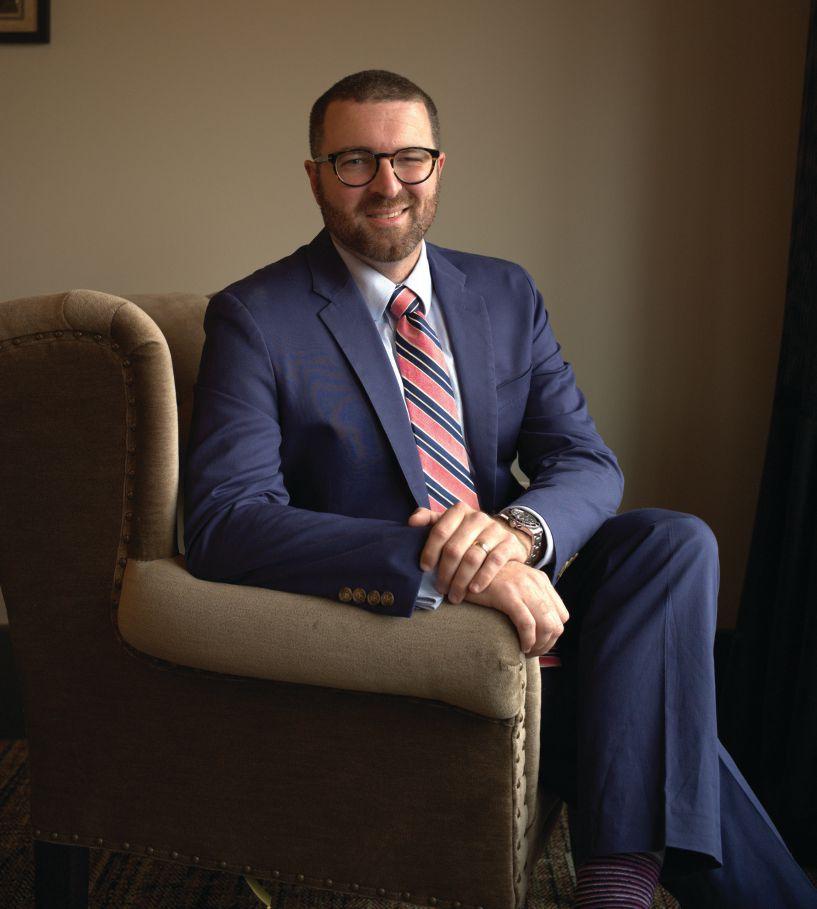























visitors accommodations, restaurants, and bourbon-related activities.
Louisville is the big city option. A stretch of Main Street was previously known as Whiskey Row in the 1920s to honor the 50-plus spirit-related businesses in operation along it. Prohibition closed it down, but Main Street has since experienced a resurgence. Visitors can fnd hidden speakeasies, themed hotels, and tasting rooms alongside several stops on the Trail. Te Frazier History Museum serves as the ofcial starting point of the Trail, with a welcome center and special exhibit.
Bardstown is ofcially the Bourbon Capital of the World, for good reason. With good access by rail and waterways, Bardstown was the historical industry hub with 11 distilleries within 15 miles of downtown. Tere are local families with four generations that have worked at the same distillery. Bourbon provides more than 4,671 distillery-related jobs in the county and a labor income of $341,495,732.
“Te impact of the Kentucky Bourbon Trail in Bardstown is almost inestimable,” Lacy said. “We welcome visitors from all over the United States and from dozens of other countries. It is the Trail drawing them here.”
Bourbon-adjacent businesses in town include whiskey lounges and the Oscar Getz Museum of Bourbon


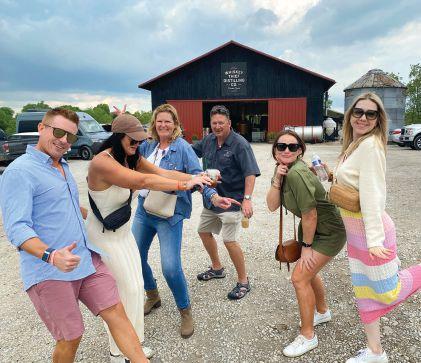
History, plus it plays host to the annual Kentucky Bourbon Festival. Te Bourbon Capital Academy hosts two-hour bourbon classes in a restored historic building in the heart of downtown Bardstown. Held on Saturday mornings with a special focus on the town’s bourbon history, they include a tasting from the nine distillery members of the Bourbon Capital Alliance.
Utilizing the Trail’s transportation partners is a great way to relax fully into the experience. Tese businesses ofer much more than a way to drink responsibly (though that is important). Transportation partners are recommended by distilleries and vetted by the KDA to receive the ofcial designation. All staf are educated and knowledgeable about the distillation process and the rich Kentucky bourbon history.
Kentucky Bourbon Boys is a familyowned business that has found its niche creating personalized tours. Statistics show most visitors to the Trail come in a group for retirement parties, anniversaries, university football games, or as whiskey clubs from around the world. KBB’s most popular milestone celebration is 50th birthdays.
A more poignant outing is when families bring dad, who has a terminal illness and has always wanted to visit the Trail. “We let distilleries know and they make it special,” said Tim Hagan, KBB co-owner. “It is touching to see the family coming together for a loved one.”
KBB ofers a full-service experience, picking up guests at their accommodations, working with them to determine the three stops for the day, and arranging a preordered lunch at a local restaurant. Te outing might include a winery, a horse farm tour, or a visit to Rebecca Ruth Candy along with the destination distilleries.
To ofer a more well-rounded Kentucky experience, the group has
developed premium outings that are really taking of. With the Bullets, Barbecue, and Bourbon tour, guests shoot clays in the morning, go to a local barbecue joint for lunch, and spend the afernoon sipping a cocktail at a distillery. Other options include golf or horseback riding. It is certainly flling a need along the Trail; KBB opened in 2016 and has doubled its business every year.
Te KDA is continuously reimagining the Kentucky Bourbon Trail and fnding new ways to connect bourbon lovers around the world with the Kentucky spirit. Tis year, the frst Bourbon and Belonging Festival intentionally welcomed LGBTQIA+ bourbon lovers with activities in eight cities near the Trail.
As part of Bourbon Heritage Month
this September, the Trail held a virtual worldwide toast with participants from 32 countries. Te event ran for 26 hours, bringing together bourbon connoisseurs and master distillers with special bottles for toasting from every brand on the Trail. People from all over the world gathered together virtually to celebrate their love of Kentucky bourbon.
And thanks to some new Kentucky laws, KDA’s Ryan predicts a quick rise in the number of distillery satellite tasting rooms throughout the commonwealth. Many already exist in Louisville, but she foresees them expanding to Northern Kentucky, Lexington, and Bowling Green. Inviting people to enjoy Kentucky’s local spirit throughout the state, in ever-expanding ways, seems like the perfect way to celebrate the Kentucky Bourbon Trail’s 25th anniversary. KM


By the 1980s, bourbon had fallen out of favor with consumers of spirits, in deference to vodka and gin. Inspired by scotch in Scotland and wine in California, Kentucky distilleries banded together in 1999 to inspire more bourbon afcionados and invite them to visit its birthplace.
The Kentucky BourbonTrail™ had a slow start. Records weren’t kept until 2008, and the tally that frst year recorded a total visitation of 189 people. Over the next two years, concentrated marketing efforts by the Kentucky Distillers’ Association partnered with a resurgence in cocktail culture (sometimes deemed the “Mad Men” effect) increased visitation to 18,000 and set theTrail’s popularity on an upward trajectory that continues today.
A popular element for many years was completing a BourbonTrail passport, with visitors returning each year to fll it out and collect a newT-shirt design. But an increase in the number of participating distilleries made that impractical — plus visitor expectations shifted. Now instead of just checking a place off a list, visitors want to linger at one or two distilleries and savor all they have to offer.The true rewards are the memories.
As one of the frst spirits tours in the world and with a supportive regional culture beyond the distilleries, the Kentucky BourbonTrail welcomes guests from all over the world. It also has become a global leader in spirits tourism, mentoring local distillery groups in Ireland and Canada to launch their own whiskey tours.
» The Kentucky Bourbon Trail: kybourbontrail.com
» Bardstown: visitbardstown.com
» Kentucky Bourbon Boys: kentuckybourbonboys.com
» Tips for Planning a Visit: kybourbontrail.com/know-before-you-go




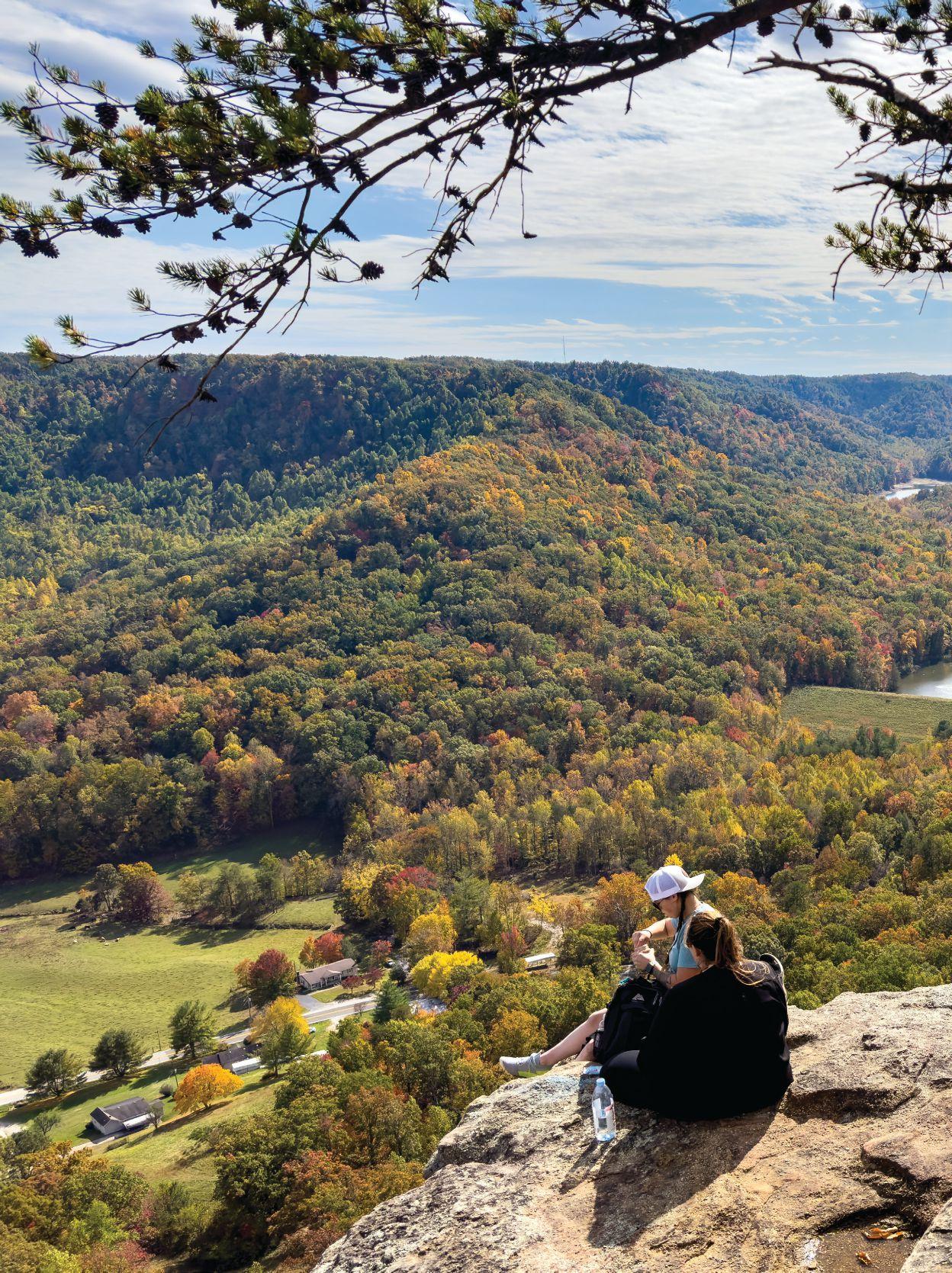


The Pinnacles of the Berea College Forest offer hiking and tremendous views offer and tremendous views

By
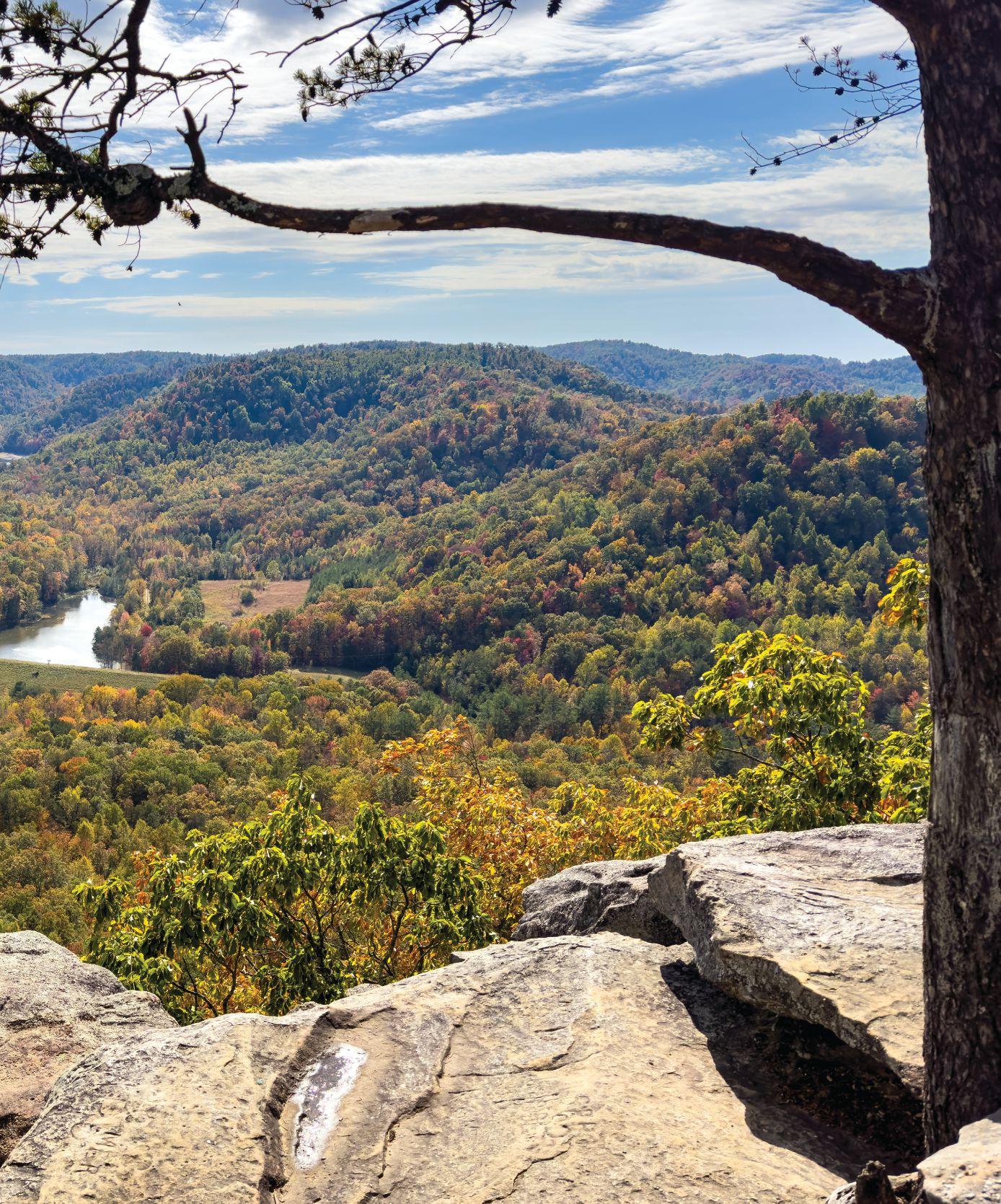
TTIM RISTER HAD DRIVEN by the Pinnacles just outside of Berea thousands of times, ofen wondering when he saw hikers “who in the world would ever do that?”
Ten, about four years ago, at 470 pounds, he resolved to change his diet and get more exercise. At frst he walked around a city park but that was too confning, so he decided to try the Pinnacles. “It liked to killed me” the frst time, he said. But he stuck with it because “it’s so pretty up there.” Now, more than 1,300 hikes later, Rister weighs 202 pounds and jogs up the trails daily afer work.
Te place itself motivates him. “It’s different every day,” he said. “If you really pay attention, it’s subtly diferent every day.”
Rister is among the tens of thousands of people over thousands of years who have fallen under the spell of the Pinnacles, an outcropping near Berea where three Kentucky regions meet: Bluegrass, Knobs, and Appalachia. It’s been home to Native Americans who took advantage of the expansive views to spot aggressors and built fortifcations to protect against them, and it is a source of memories for generations of Berea College students.
“It’s a very important spot … we have incredible biodiversity here,” explained John Abrams, a naturalist who works with the forestry team at Berea College that manages the Pinnacles and the college’s other forest holdings. Because so many people come to
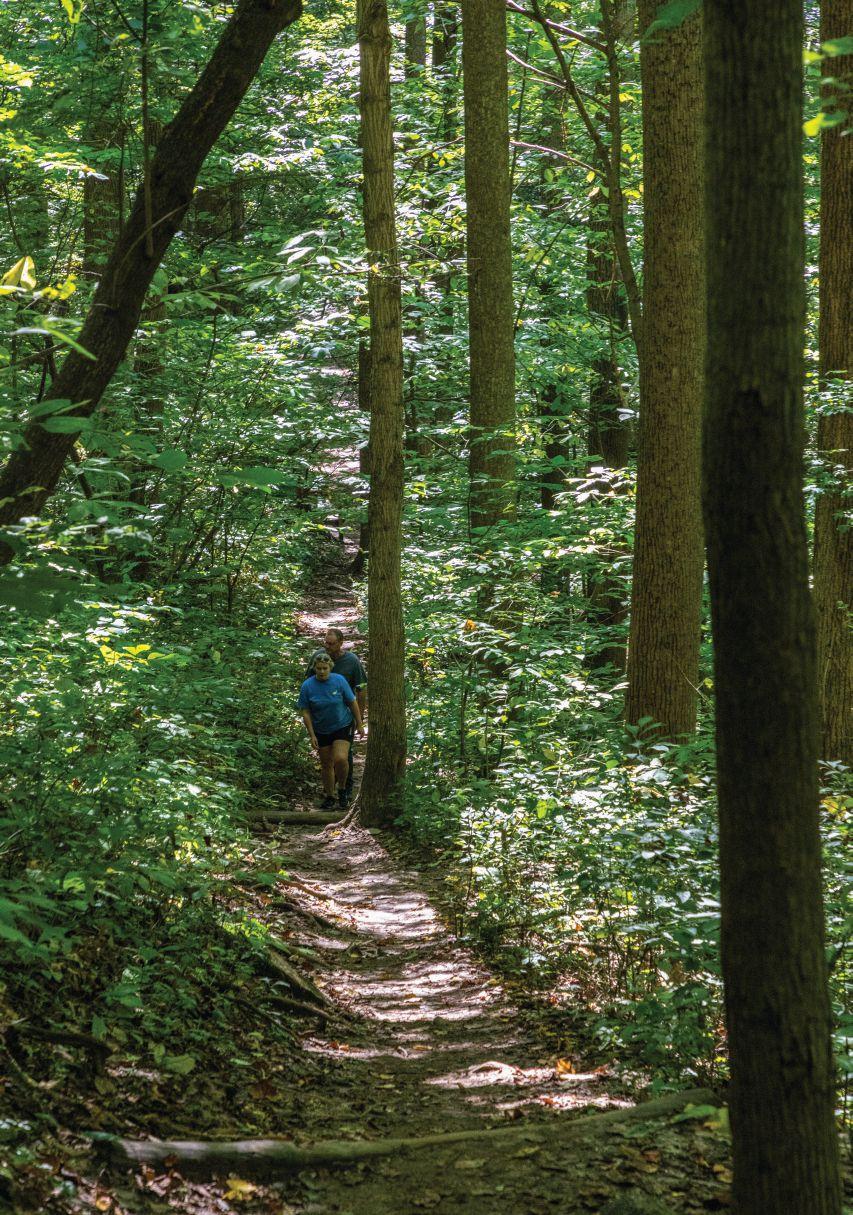



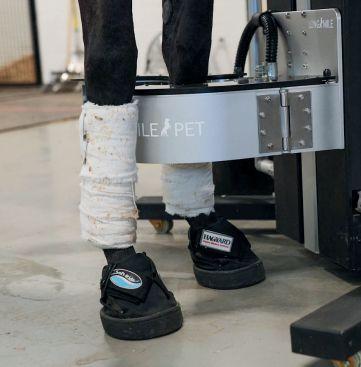

Leading the way in advanced diagnostics the way in advanced


the Pinnacles — about 60,000 annually — Abrams said that’s where the most animal and plant species are spotted and identifed. Right now the count for the local wildlife and plant life numbers about 4,000 “and that’s probably not even a tenth of what’s there,” he said.
Abrams explained that the Pinnacles includes one of the oldest ecosystems in the world. Te ancient seabed evident in the sandstone at the top of the mountain shows, Abrams said, that “some part of this was above the water when everything else was below the water.”
Still, it’s the views that continue to captivate people and motivate them to climb the 17 miles of trails to one of the overlooks designated with descriptive and colorful names: Eagle’s Nest, Buzzard’s Roost, East Pinnacle, West Pinnacle, and Bluegrass Overlook, also known as Indian Fort Overlook.


Clint Patterson, left, Berea College’s head forester, and John Abrams, a naturalist who works with the college’s forestry team, share their knowledge about the Pinnacles and the fora and fauna of the forest with visitors and other scientists.

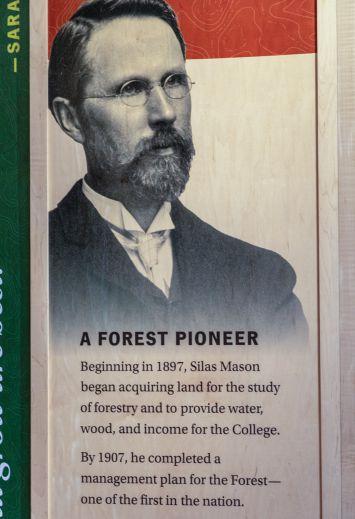
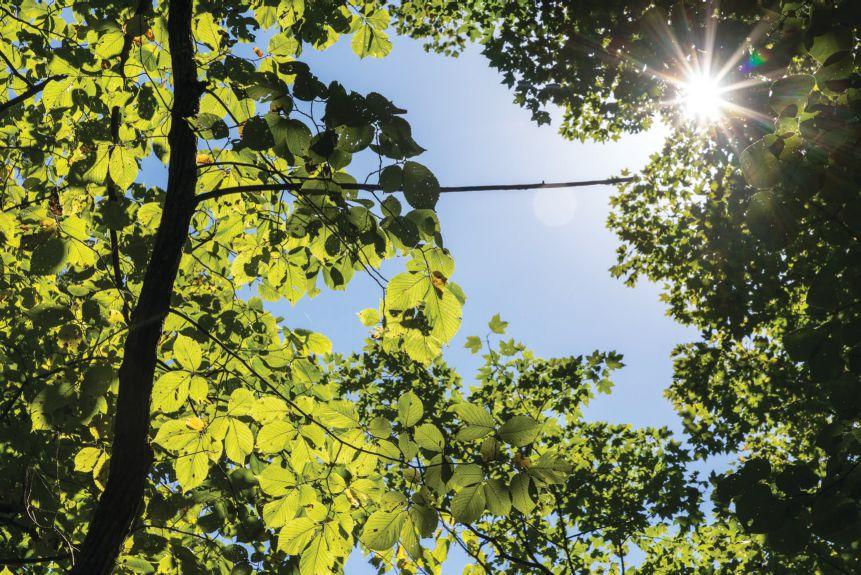
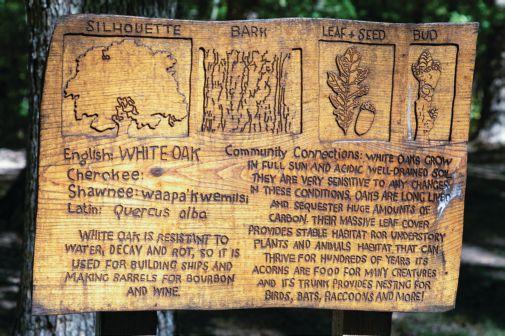
It’s no surprise Outside Magazine named the Pinnacles the best place to hike in Kentucky, noting the “sweeping overlooks” from the “dog-friendly” trails of varying difculty. Abrams thinks the Outside reviewers were also impressed by the abundant paved parking, the inviting and informative visitor’s center, and miles of well-marked trails. “You can’t truly get lost here,” he said.
Te Pinnacles became the foundation for the Berea College Forest when the frst college forester, Silas Mason, joined a group of students visiting the peaks on Mountain Day, a fall college tradition that continues to this day.
MasonhadcometoworkatBereaCollegein1897 afer turning down a job as second-in-command at the new U.S. Department of Forestry.
“I think my frst idea” of acquiring land for the
‘‘
IT’S A VERY IMPORTANT SPOT. WE HAVE INCREDIBLE BIODIVERSITY HERE.”
—naturalist John Abrams
Above, the dense forest canopy attests to the variety and abundance of the Pinnacles’ trees.
Left, a carved sign provides details about English white oak, which is abundant in this landscape.
college at the Pinnacles came “when I attended the annual mountain day excursion which took place that year at the Indian Fort,” he wrote in a 1907 proposal for managing the forest presented to the college’s president and trustees. “Te magnifcent panorama seen from the mountain top brought to my mind the desire of building up and having as College property a large boundary of these timber lands.”
A man of action, Mason bought a portion of the East Pinnacle and the ridge reaching along it with his own money. He noted in his proposal that a nearby portion of land, including what was appropriately called Moonshine Hollow, was purchased by a Mr. Robe “to rid the premises of a notorious distiller of Moonshine whiskey.” Te college later acquired those parcels as well as hundreds of other acres, ushering in a new era for the Pinnacles and forestry at Berea College. Hikers today see a forest of tulip poplar, several


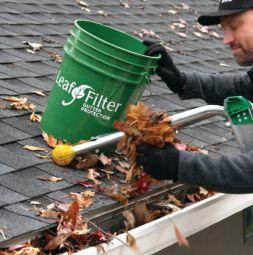








varieties of oak, black walnut, red and sugar maple, hickory, and other tree species, plus a unique bee balm that blooms white and Aaron’s rod, a bush more typical to prairies that is found in Kentucky only at the Pinnacles. All in all, Abrams said, there are about 50 endangered plant and animal species under the college’s protection.
In 2003 the Berea College Forest — one of the nation’s oldest managed forests — was listed in the National Register of Historic Places, the U.S. Department of the Interior’s inventory of places that hold signifcance in our national story.
Te narrative describing that designation notes that what Mason and the students saw in 1897 was not much like today’s forest. Instead, they saw “mostly abandoned and eroded hill farms with little or no large tree cover,” the account says. “Additionally, the land showed the signs of regular fre — dead, charred, or scarred trees; open and exposed soils — and indiscriminate logging of the woodland that existed — only small, crooked or hollow trees remained.” Tat was the result of more than a century of subsistence agriculture by European settlers and “Native American fre use, agriculture and habitation

stretched back many millennia prior to that.”
Clint Patterson, the current Berea College head forester, noted that in the old days, the college was sort of a “do-it-yourself” place. Under Berea College’s ownership, the forest was rejuvenated, but it also served as a source of limestone quarried for construction and of timber for college buildings. Tat tradition continues to this day. Patterson said













Preregister for September 2025 Tickets





































Preregister for September 2025 Tickets






































































































































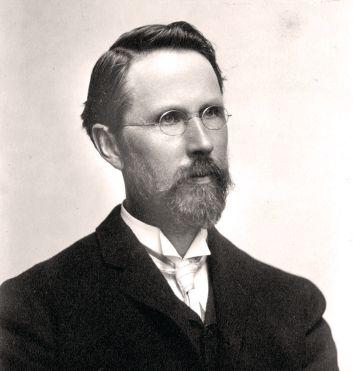

The 700 acres of the Pinnacles make up one part of the larger story of the Berea College Forest.
The forest, now 9,000 acres, was the brainchild of Silas Mason, who came to Berea College as its frst forester in 1897. At that time no school in the United States offered a degree in forestry so Mason had earned a master’s in horticulture from what is now Kansas State University and then traveled to Europe to study and observe forestry practices there.
At Berea College, he quickly began acquiring land and, with the help of a Boston benefactor, had assembled almost 7,000 acres in a few years.
Mason’s view of forest management diverged from that of most American foresters who were just trying to sustain growth for future harvesting. Instead, Mason saw the forest as serving multiple purposes: research, education, resources for the college, and recreation. “As sensible as that sounds, just a no-brainer to us today,” Berea College’s current head forester Clint Patterson
said, “that was groundbreaking at his time.”
By 1907 Mason had prepared a detailed plan to manage the forest to serve those multiple purposes.The National Register of Historic Places notes that “very few forests in theWestern Hemisphere have the long history of forest management that Berea has.”
The frst scientifc papers based on research at Berea College Forest were published in 1899, initiating research that continues there to this day.
Meagan Rochner, a geographer and treering scientist (dendrochronologist) at the University of Louisville, has been working with colleagues at Berea College since 2020 to study how forests, including some animals as well as trees and other plants, regenerate after controlled burns. Foresters at Berea College are more open to “syncing up their forest management goals” with research because “they had already built educational and research goals into their design,” Rochner said.
As the manager of a privately owned forest, Patterson says that he has a lot more fexibility to welcome scientists such as

Rochner as well as the general public to enjoy and learn from the forest. On public lands, foresters would be overwhelmed with paperwork related to outside research, but not at Berea College. “We just let them do it,” Patterson said. “We both beneft.”
As the Pinnacles becomes more popular and more crowded, Patterson and his team are developing about nine miles of trails close by to provide more hiking options and teach the public about forest management.
“Forestry is supposed to be both an art and a science,” Patterson said, something Silas Mason understood very well.
Rochner believes the Berea College Forest continues to honor that ideal. “They have a lot of freedom to be creative, to think outside the box a bit, to imagine new ideas in forest management … to try out these things.”
As Patterson walks the Pinnacles, describing the fora and fauna, the history, the joy, and the challenges of the forest’s management, he said he’s grateful to follow in Mason’s footsteps. “I feel like I’ve got the best forestry job there is.”
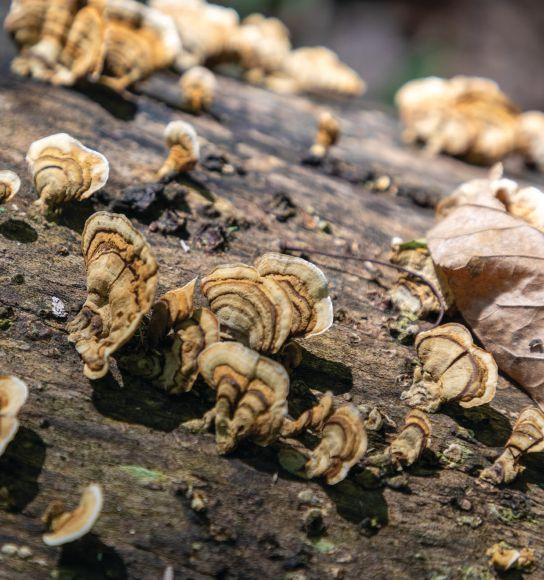

The count for local wildlife and plant life numbers 4,000, though that’s considered only a fraction of the total.
The count local and numbers 4,000, that’s considered a the total.






















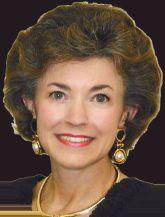









that the college used ash trees recently lost to the emerald ash borer in new construction on campus.
No one uses the overlooks to watch for attackers these days and farming on the Pinnacles is long gone, but Patterson said he and his crew are always fghting “bad actors in the human element and bad actors in the invasive species.” Tis includes the ash borer — the battle was lost — and the wooly adelgid, an insect that attacked hemlock trees but that was successfully repulsed. Te staf constantly fghts invasive species like bush honeysuckle (“the worst,” according to Patterson), Chinese privet, and the inappropriately named tree of heaven, among others. As for human bad actors, “there’s a lot of vandalism, littering, trash along the roads,” Patterson said.
One of Patterson’s goals since he came to Berea in 2010 has been to raise awareness of the forest and particularly the Pinnacles. At that time, just afer the fnancial collapse, “I had all these ideas but there wasn’t any money,” he said. But through successful grant applications and other initiatives like becoming the frst college to develop a carbon sequestration program, Patterson raised both awareness and funds. Tey built the visitor’s center and developed programs to involve both students and the public.
He’s been so successful that now some people such as Rister occasionally fnd the trails at the Pinnacles a little too crowded. On weekends, Rister said, he ofen goes early, both to enjoy the sunrise from a peak and avoid the masses.
It means getting up early, hiking in the dark, sometimes in bad weather. But Rister said it’s always worth it. “If I didn’t have that hill, I don’t know what I’d do,” he said. “I just love it.” KM
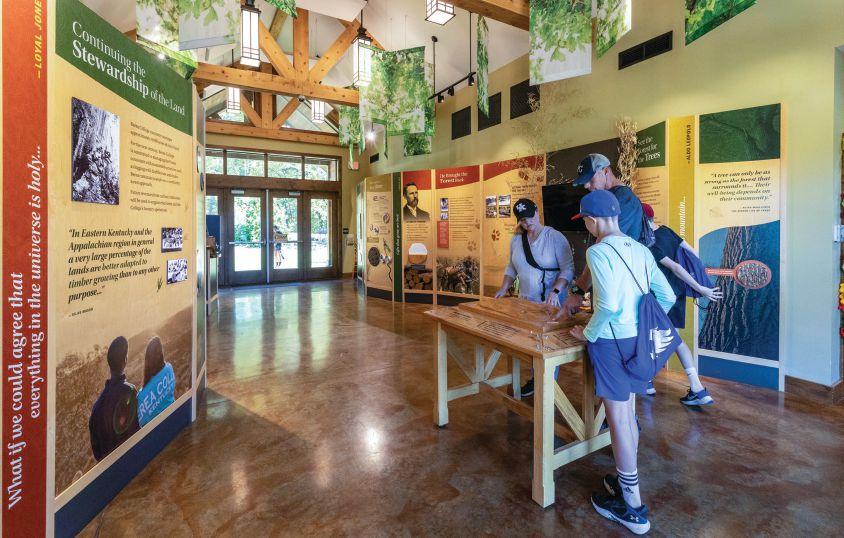

» Access to the Pinnacles trails, parking, and visitor center is at 2047 Big Hill Road, Berea KY 40403
» Forestry Outreach Center hours: Tuesday-Saturday, 10 a.m. to 4 p.m.; Sunday, noon to 4 p.m.; closed Mondays
» The trails are free and open dawn to dusk daily.
» There is a weekly hike with a naturalist on Saturdays at 10 a.m. during warm weather and at 1 p.m. in cooler months.
» For more information and events and to sign up for a newsletter, visit forestryoutreach.berea.edu.
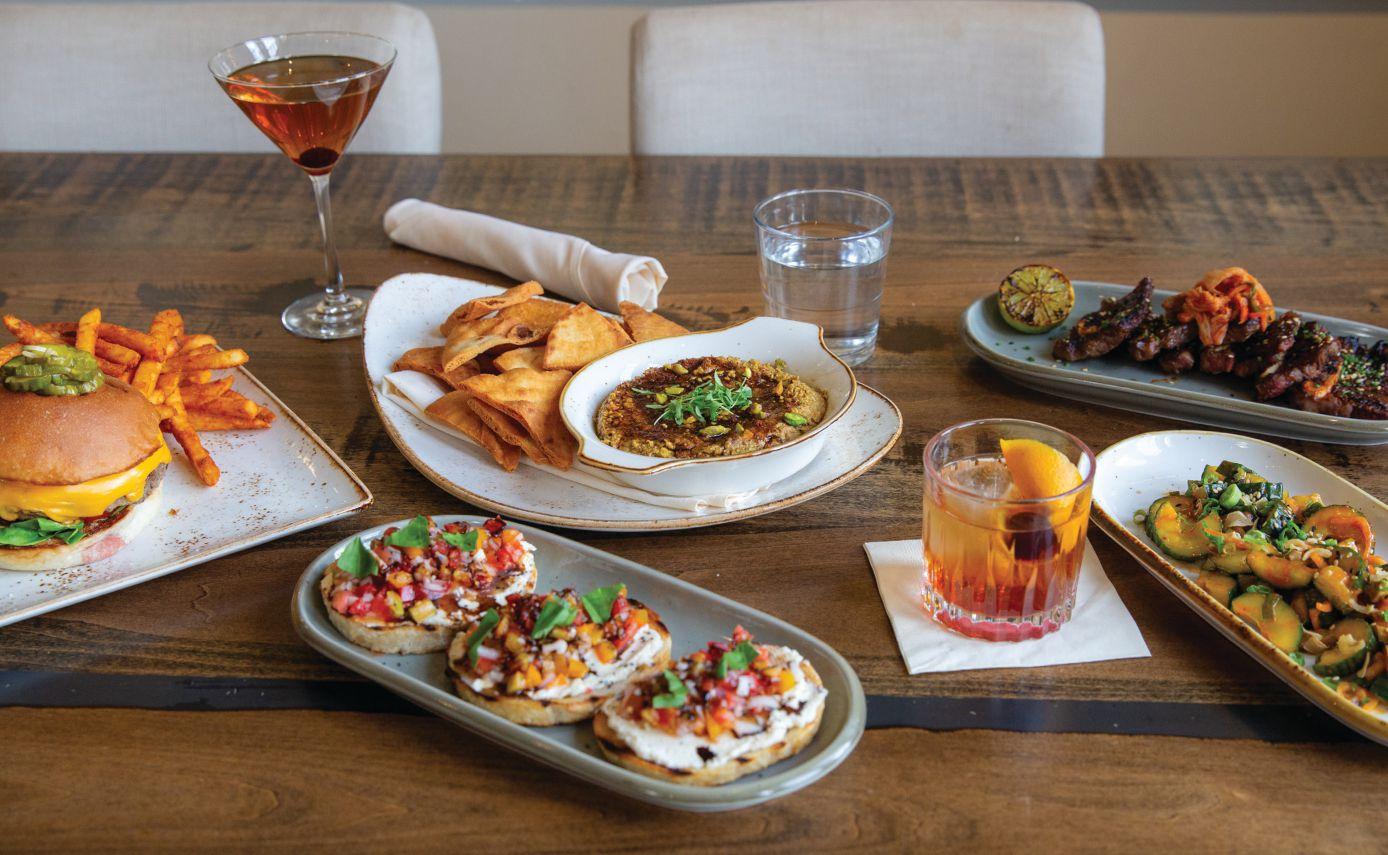









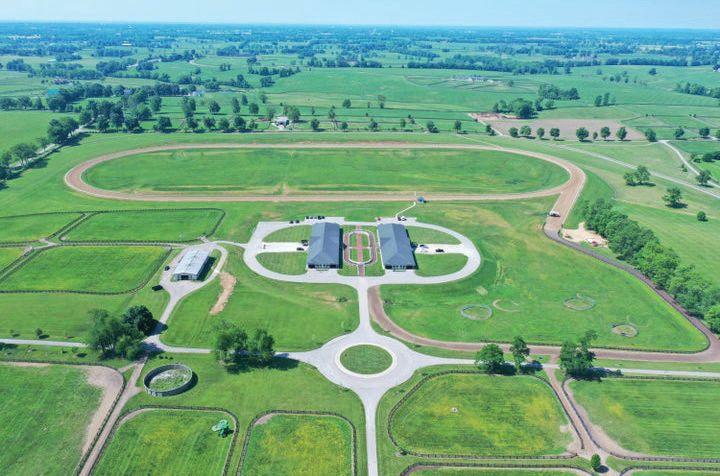

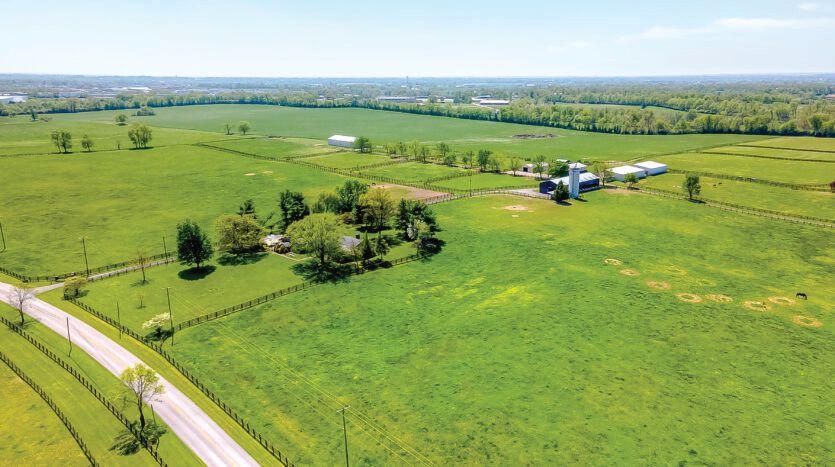



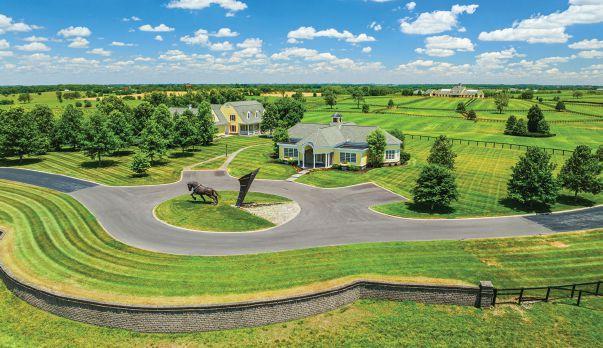




Mercury Training Center, 2349 Long Valley Lane
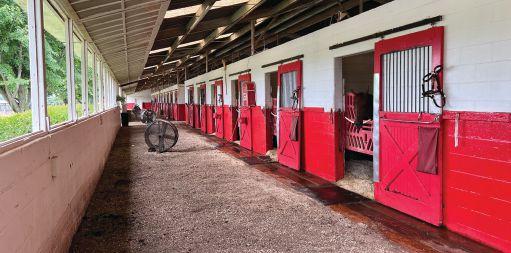


$3,150,000
Mercury Training Center is a completely turn key thoroughbred training center. This recognized thoroughbred training facility on 44 acres includes a private 5/8 mile dirt training track with hedge lined break-away safety rails and a clocker’s stand and gate to facilita orks to qualify horses for gate approval and racing. Three large barns contain 114 stalls with wide shed rows to train during inclement weather. Barn 1 has 36 stalls with a 15’ aisle and a 1 room apartment. Barn 2 has 30 stalls with a feed room and a maintenance shed. Barn 3 has 48 stalls with a 10’ aisle, feed room, wash bay and a dedicated area for an equine spa. The pr se equiciser. Completing the property are on-site living quarters that include a 4 BR 3 BA residence, a 1 BR 1BA apartment and a 2 BR 1BA apartment. This facility has everything needed for a successful thoroughbred training operation in an ideal location that is 25 minutes to Keeneland, 1 hour and 10 minutes to Turfway Park and 1 hour and 22 minutes to Churchill Downs. The popular year round racing circuit in Kentucky makes Mercury Training Center an important private asset for many in the racing industry.

1625 Midway Road
$2,950,000
This 78 acre property includes all of the elements for a classic Kentucky Estate: a beautiful Federal style 6500 square foot main residence, brick two bedroom guest house and additional guest or employee residence, an 8 stall horse barn, plank fencing and well placed run-in sheds. Property is a part of the Bluegrass Land Conservancy. Additional 30 acres available.


Cave Spring Farm
$11,495,000
744 acre Jessamine County farm includes a charming historic home & an employee home. Five converted tobacco barns contribute 61 stalls, while an equiciser, outdoor arena, & round pen add utility. Several large felds & 18 paddocks equipped with plank fencing and automatic waterers. Co-listed with Kirkpatrick & Company.


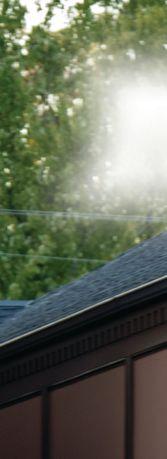
HOSPITALITY GROUP has gone from a single steakhouse to a concept-driven restaurant empire that includes everything from high-end dining to sushi and burgers
By Patti Nickell
Photos
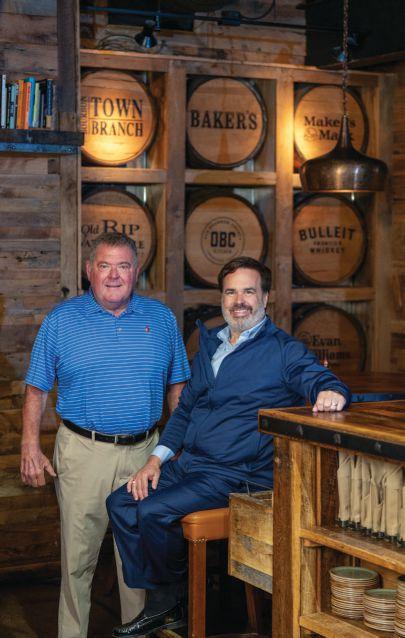
Owners/founders Brian McCarty, left, and Bruce Drake hold fast to their principle of always putting the customer first.
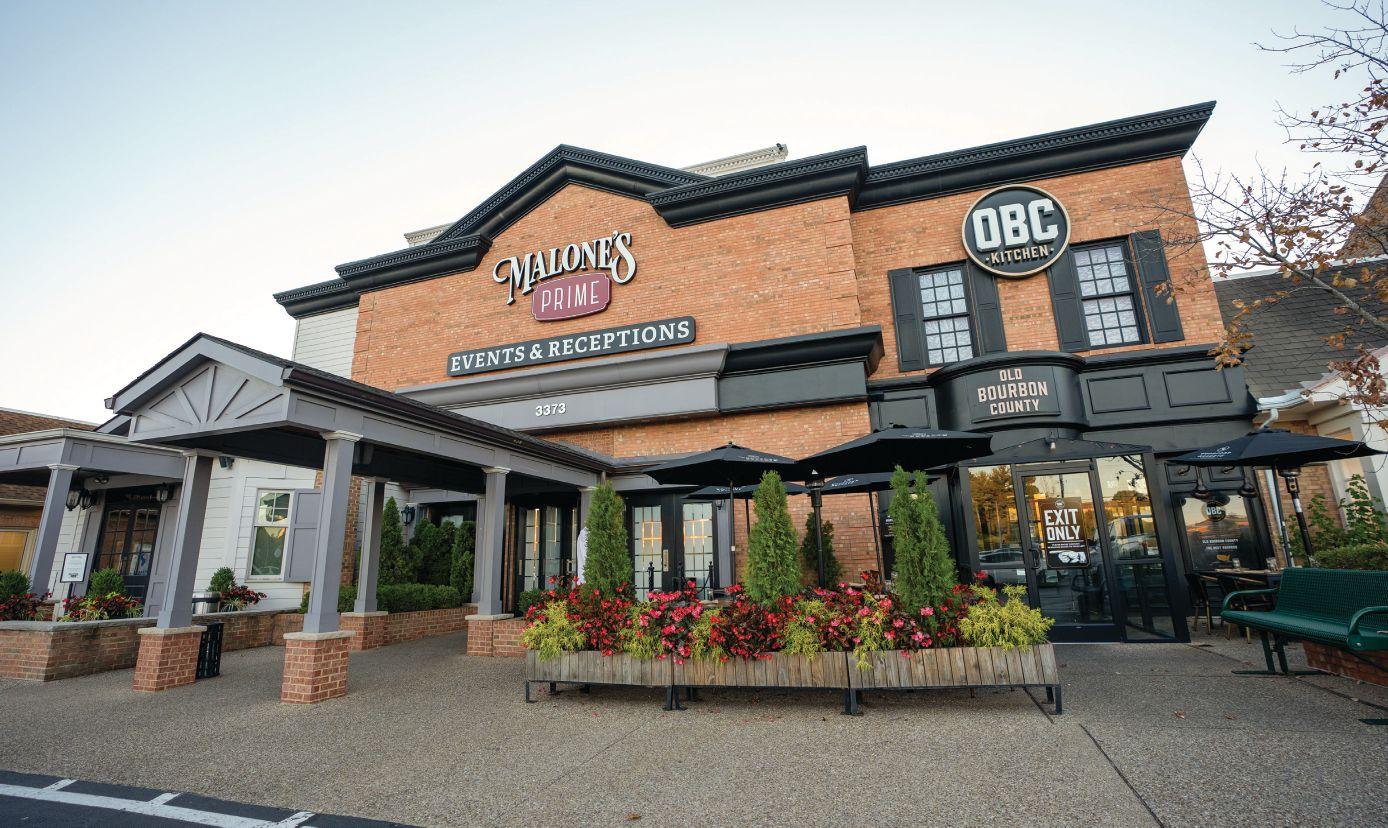
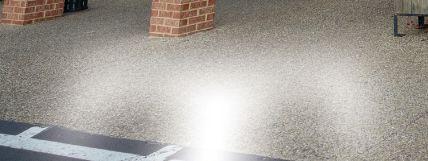
THE FIRST THING PEOPLE see upon entering Bluegrass Hospitality Group’s corporate headquarters on Malabu Drive in Lexington is a large sign proclaiming “100% guest satisfaction 100% of the time.”
It’s a mantra that motivates all 4,114 of BHG’s employees and serves as the guiding principle for the company’s owners, Bruce Drake and Brian McCarty.
Te two men’s friendship is the restaurant industry’s equivalent of music’s John and Paul and flm’s Matt and Ben. It dates to the 1990s when Drake owned Regatta Seafood Grille in Lexington Green and McCarty, at that time the owner of A.P. Suggins Bar & Grill, was one of his best customers. It didn’t take long for the men to discover a culinary kinship, leading them to form a partnership with the idea of introducing a new steakhouse concept to Lexington diners.
In 1998, they opened their fagship restaurant, Malone’s, in Lexington’s Lansdowne Shoppes and, as the saying goes, never looked back. Over the ensuing 26 years, that single restaurant has mushroomed to include six unique restaurant concepts with 39 locations in seven states.
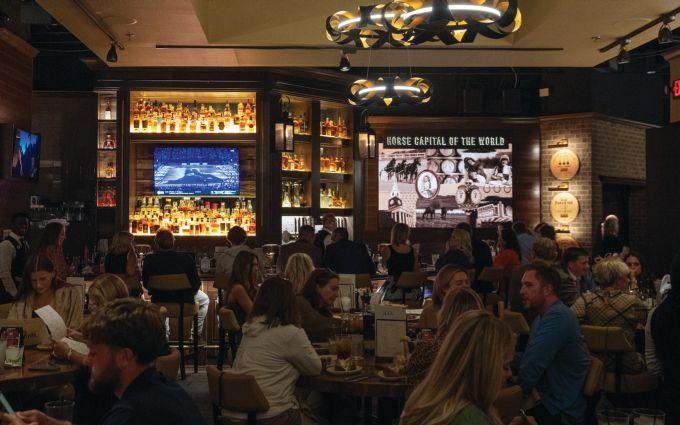
on a fall weeknight.













108 Court Street, Versailles, KY
TURN RIGHT when you leave
In addition to Lexington, Louisville, Danville, Florence, Nicholasville, Pikeville, and Owensboro in Kentucky, BHG operates nine restaurants in Tennessee, three in Indiana, two in Missouri, and one each in North Carolina, Alabama, and Illinois.
Additional openings are scheduled for Elizabethtown and Bowling Green in Kentucky by year’s end.
Te breadth of the operation might lead you to believe the duo looked for their inspiration from one of America’s nationally recognized steakhouses — maybe Wolfgang Puck’s Cut in Beverly Hills or Peter Luger Steak House in Brooklyn. Would you believe Texas Roadhouse?
OUR CULTURE CAN BE SUMMED UP WITH ‘THE ANSWER IS YES; NOW WHAT IS THE QUESTION?’ ”
Ñco-owner Bruce Drake
“We love their model and management style,” Drake said. “We learned a lot from them about what consumers want in terms of value, consistency, great location, plenty of free parking.
“Now, all those things make up our DNA as well.”
Meeting the two men for the frst time, they resemble a comedy team — with the more reserved McCarty content to play straight man to the jovial Drake — more than titans of the restaurant industry. But make no mistake, Drake and McCarty would be more at home dispensing business advice on “Shark Tank” than cracking jokes in a comedy club.
A graduate of Western Kentucky University with a degree in hospitality management, Drake managed L&N Seafood before taking the plunge with Regatta.
Before getting into restaurant ownership with A.P. Suggins, McCarty earned his MBA from Case Western Reserve University in Cleveland. Still, he prefers talking recipes to expounding on redemptionfeesandratioanalysis,andasaself-proclaimedfoodie,hewasonce quoted as saying that he eats 10 or more meals a week at a restaurant.
Coming up with a multi-restaurant concept may seem like a risky undertaking to most, but in the Lexington dining scene of the late 1990s it proved to be a blueprint for success.
Both men agreed that what diners love most is the experience, so why not give them different ones?
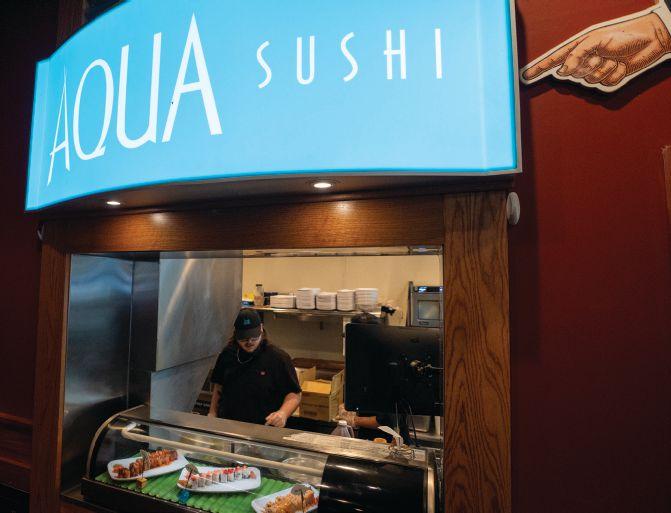

Drake’s Leestown brings its burgers and other favorites to an up-and-coming west Lexington neighborhood.
Malone’s, the restaurant that started it all, is a polished purveyor of prime beef and seafood in a casually elegant atmosphere and with a high-profle clientele. You have only to look at the autographed photos lining the wall over the booths to see evidence of the latter.
While celebs in the entertainment, sports, and political arenas will always be a core component of the restaurant’s image, they should no longer expect to see a dish named for them, as had been the case since Malone’s opened.
As Drake explains, the expansion has made it unlikely that a diner in Tennessee will want to order a cut of beef named for Kentucky coaches Mark Stoops or Mark Pope.
Instead, the current menu lists dishes such as the Bluegrass chicken, a marinated and pan-seared chicken breast over Yukon


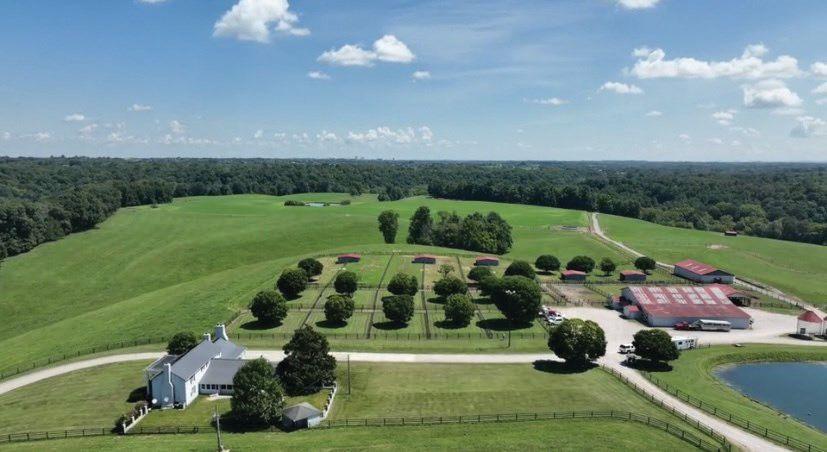



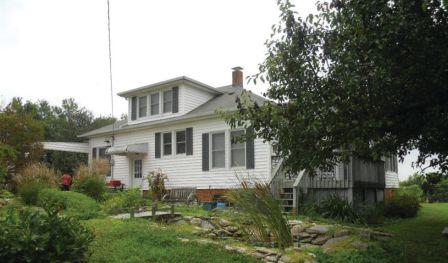


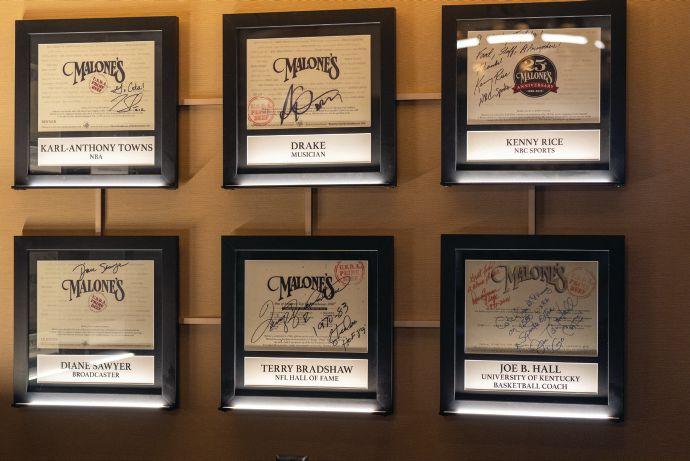

gold whipped potatoes with bourbon mushroom glacé, and the prime center-cut New York strip.
In coming up with their next concept, Drake and McCarty didn’t stray far from the frst. To every Malone’s they attached the more casual Harry’s American Bar & Grill and Aqua Sushi. Aqua Sushi offers a comprehensive list of fresh sushi and sashimi, while Harry’s
is known as the home of the mini burger.
Harry’s year-round patios — they’re open-air in warm months and glass-enclosed during cooler ones — quickly became a customer favorite as sports fans focked to them to watch Toroughbred racing or college sports on one of the wide-screen TVs.
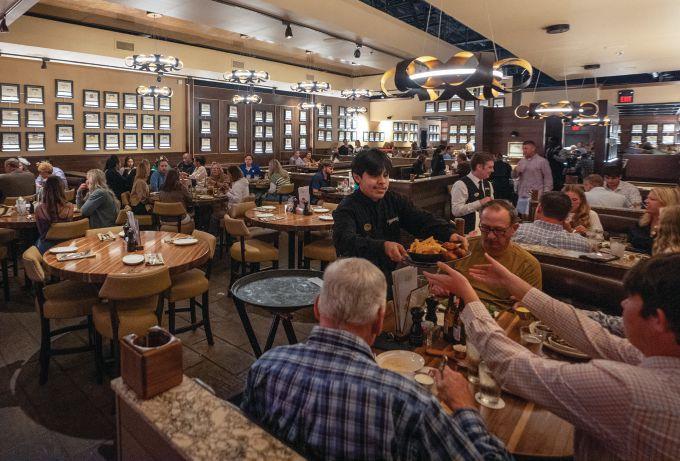
Drake’s became BHG’s frst stand-alone restaurant, having both a more casual feel and lower price point than Malone’s. Here, in a diner-like atmosphere, the burger, usually accompanied by a craf beer, reigns supreme (although the Aqua Sushi menu is also served at all locations).
Te story goes that the concept developed afer Drake, a self-admitted lover of a good burger at any hour, went out in search of one and returned home empty-handed, resulting in a late-night phone call to McCarty.
OBC Kitchen, according to its owners, has a chef-driven menu and an impressive collection of rare bourbons (some 800 labels). Te highquality food and drink are served in an atmosphere reminiscent of a village pub. And in case you don’t know what OBC stands for, it means “Old Bourbon County” and refers to the counties that eventually became the commonwealth of Kentucky. Te name was stamped on barrels heading to New Orleans



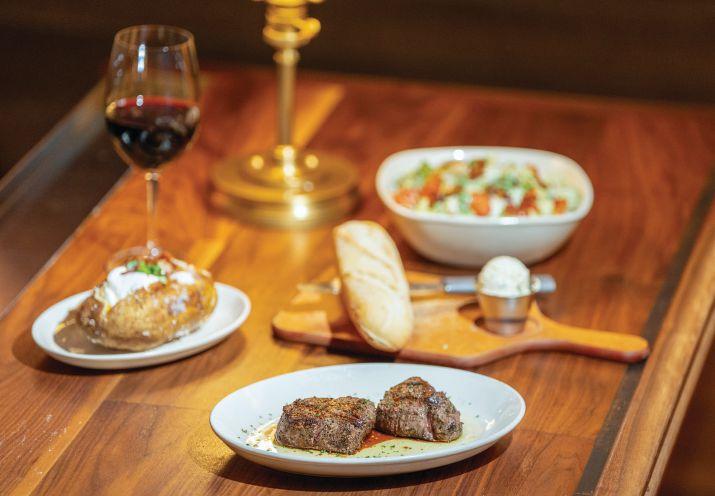

down the Mississippi, indicating that the contents were the best the U.S. had to offer.
Te sixth brand is Malone’s Prime, a private dining and event venue that embodies all the best traits of its sister establishments.
Te concept might be different at each restaurant, but there is one thing that always stays the same: a commitment to customer satisfaction that is nonnegotiable.
As Drake said, “Our culture can be summed up with ‘the answer
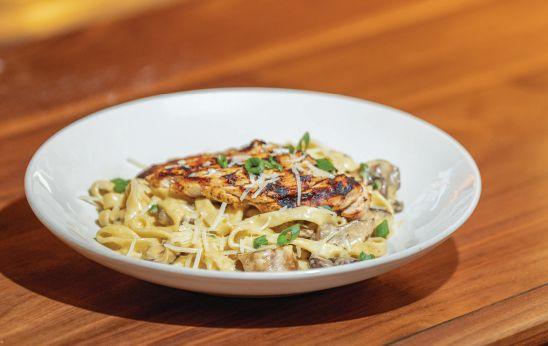


Clockwise from left, Harry’s mini-cheeseburgers, Malone’s twin filets and accompaniments, Malone’s French Quarter alfredo, Aqua Sushi’s Bluegrass roll, and Malone’s Lexingtonian salad showcase the range of dining options.
is yes; now what is the question?’ ”
Drake, McCarty, and those 4,114 staff members will go to any length possible to correct a mistake or a customer’s negative impression. Should you need proof, Drake describes the time a server who had taken an uncharacteristically long time to deliver an order on a busy night followed a customer to the parking lot aferward to return a tip he felt he didn’t deserve.
McCarty chimes in about one occasion when tartar sauce had been lef out of a customer’s to-go fsh order. Te customer phoned the restaurant expressing his displeasure at the omission. A short


time later, he was surprised to open his door and fnd a Malone’s manager standing there, cups of tartar sauce in hand.
Comb the internet and you’ll fnd numerous reviews confrming that BHG owners and staff “walk the talk,” and the level of satisfaction is backed up by Drake’s statement that “our average diner eats with us once a month.”
One such diner is Mark Herren, who claims he far exceeds that average.
“I probably eat at Malone’s or Harry’s three or four times a week,” said Herren, who is board chair at Bank of the Bluegrass and lives a stone’s throw from the Palomar location. But he insists it’s more than geographic proximity that keeps him coming back.
“What I love about BHG restaurants is the consistency of both the food and the service,” he said. “Te Palomar staff all know me by name, and that doesn’t happen at many restaurants these days.”
Drake said Herren is typical of the regular diner who comes as much for the experience as for the food.
“We like to think that the food is a given,” Drake added, “but if Brian and I are serious about hiring only the best chefs, we are equally passionate about hiring, training, and developing staff that are never indifferent to what customers want.”
To ensure that level of service, all employees attend a rigorous training program at BHGU, the company’s in-house university. To “graduate,” potential employees must receive high marks in everything from understanding the job requirements to kindness, the

latter being key. “When it comes to hiring, we choose kindness over experience every time,” Drake said.
McCarty adds that over the years, kindness and a good attitude, along with a BHGU education, have resulted in employees who started as dishwashers or servers working their way up to management and leadership roles.
Matt Frazier is one of the employees who has benefted from a good education there. Starting as a host at Malone’s Hamburg location, he has risen to the level of regional manager.
He said the vast majority of management staff grew up in the company as he did.
“We have only one manager in the Malone’s brand that came from outside the company, and he’s been with us for more than 20 years,” Frazier said, “so you can’t really call him an outsider.
“Te major thing we learn in training is that there are a lot of restaurants with great food,” he continued, “but what sets us apart is

our culture of service and satisfaction. We put a lot of value in that.”
When it comes to the owners, however, both say their education came from another school: the school of hard knocks.
“Our success in the second half of our professional lives is the result of mistakes we made in the frst half,” McCarty said. “For every Malone’s, Drake’s, and OBC, there was an Oscar’s, Damon’s, and Sal’s.”
Te two say they learned from those failures, although it might be something of a misstatement to call Sal’s a failure, as it lasted 13 years, an eternity in restaurant years.
Still, when it closed, Drake and McCarty, who describe themselves as “natural risk-takers,” used the space to shore up the banquet service, giving birth to Malone’s Prime Events and Receptions.
Both Drake and McCarty will continue to take risks, with McCarty saying they are on track to open three or four restaurants a year. Tere is one thing, however, they will never risk: their pledge of “100% guest satisfaction 100% of the time.” KM
» For locations and hours, visit bluegrasshospitality.com.


THE ART CENTER OF THE BLUEGRASS
The Art Center of the Bluegrass brings people together to explore and appreciate art, culture, and creativity

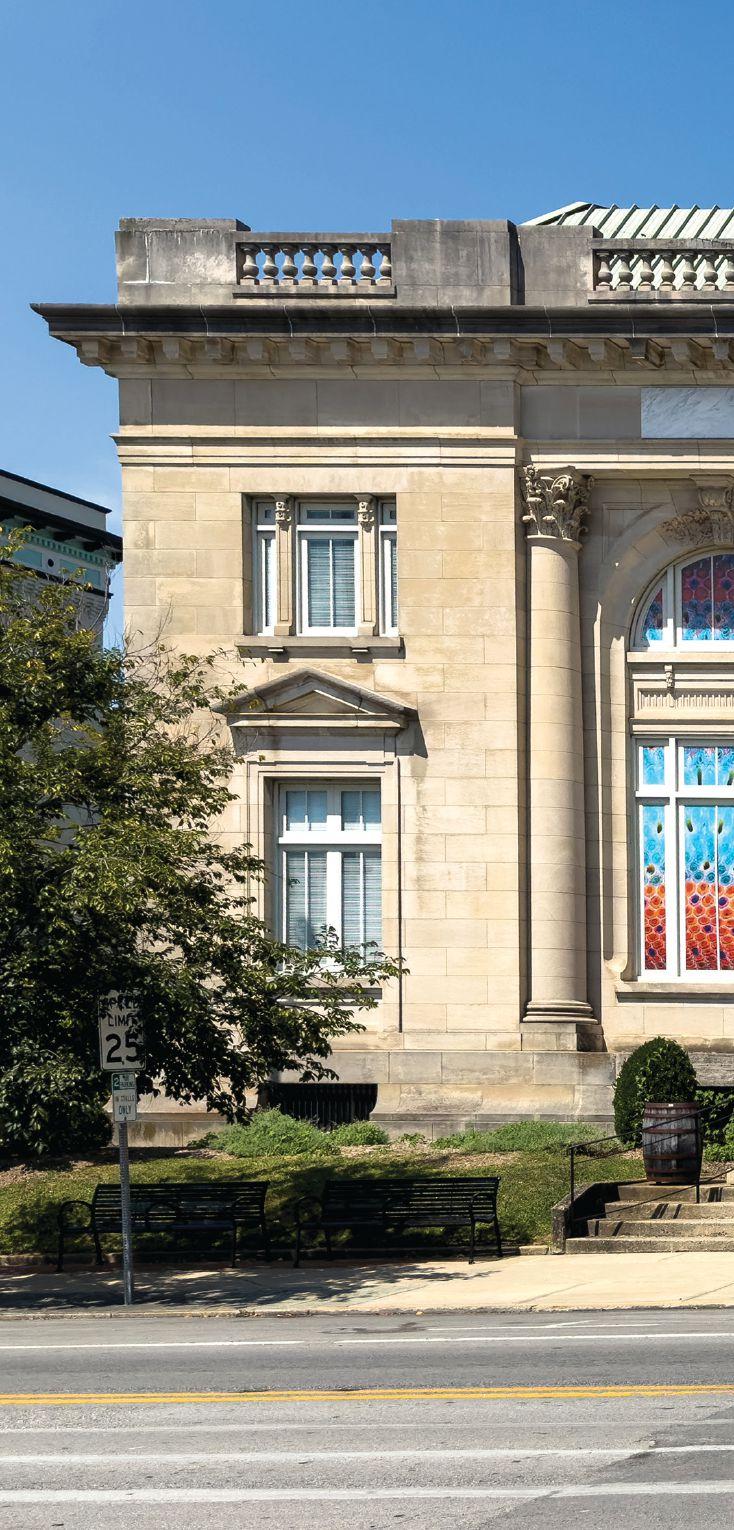
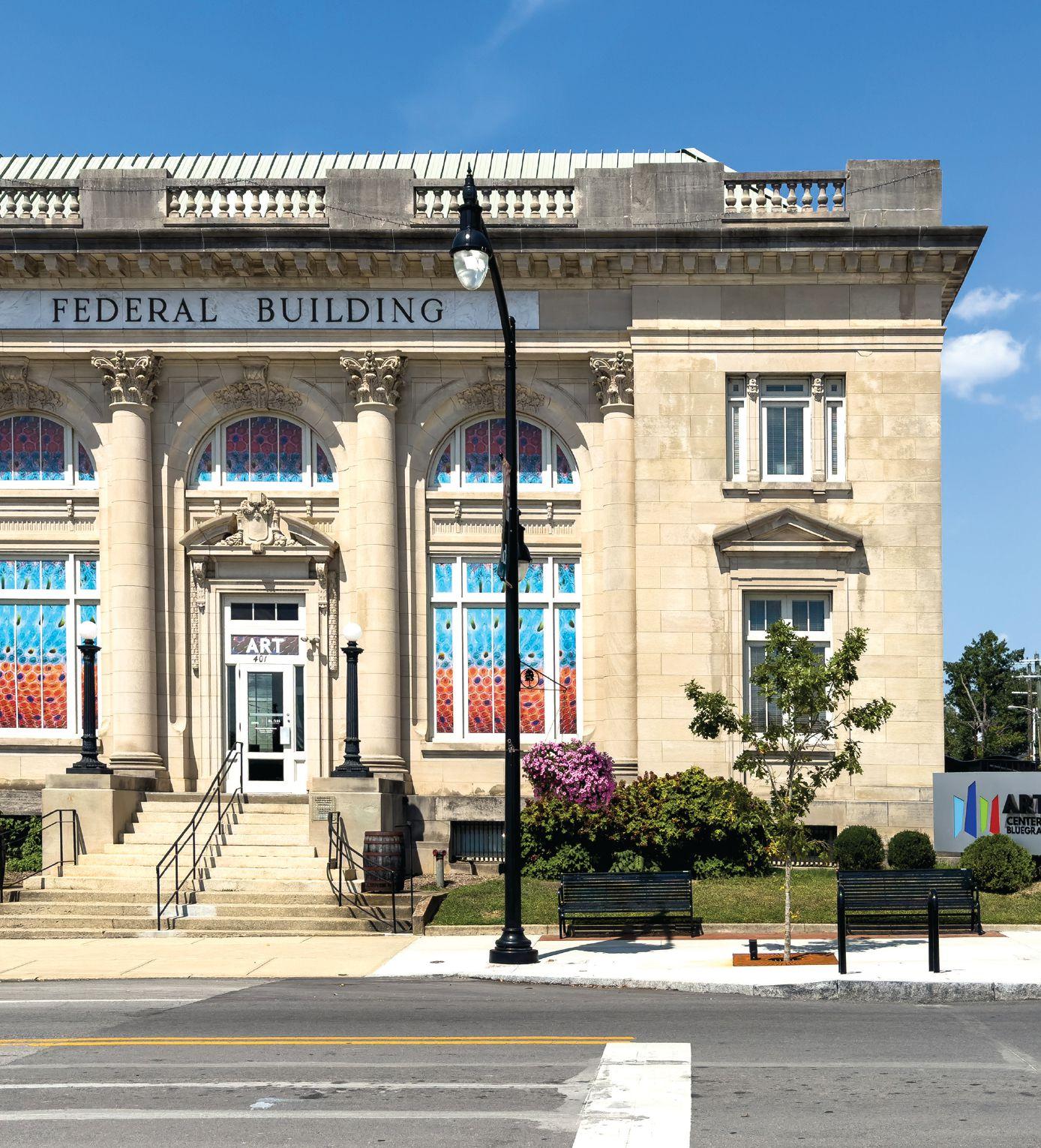
THE ART CENTER OF THE BLUEGRASS
These are exciting times at the Art Center of the Bluegrass in Danville. Early fundraising results for the planned $3.65 million ArtSee capital campaign have already contributed to a signifcant expansion of the organization’s facilities and programs that bring 30,000 people through its doors annually to create and experience art.
Michael Camic is a ceramicist who frst came to the Art Center four years ago. He now has a membership in the ceramics studio, where he uses the medium of clay to craf colorful bowls, vases, and other objects that express his aesthetic outlook.
A retired high school art teacher who has been an artist himself virtually all his life, Camic has found new inspiration working among fellow ceramicists. “You always learn something when you meet other people working in your feld,” he said. “Tey all have a few tricks to share.”
For Laura Elwyn, acting executive director, it’s that feeling of community among fellow artists that is the Art Center’s lifeblood. “Our local artists are at the heart of this organization,” she said. “We do all we can to nurture art and welcome artists of all levels of ability.”
Te Art Center is a popular gathering place in downtown Danville for people from the city and throughout Central Kentucky who want to create and experience art and all its possibilities for enriching their lives. It ofers classes, lessons, workshops, open studios, special events, lectures, changing exhibits, cultural conversations, and plenty more.
Its crown jewel is the GLASS National Art Museum, a showcase for the brilliant work of the late Stephen Rolfe Powell, an internationally known hot glass artist and former Centre College professor. It has hosted visitors from across the nation and a number of foreign countries.

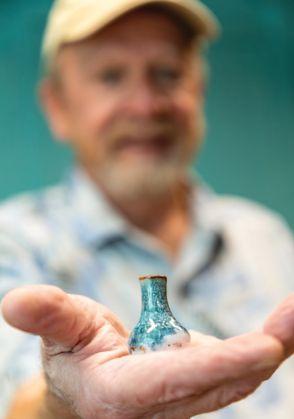
retired high school art teacher, is a member of the ceramics studio. He creates a variety of objects, including tiny vases, left.
Thank you to our valued sponsors, whose partnership helps drive the success of Keeneland. Your support not only enhances the quality of competition on the track, but also strengthens our shared commitment to the future of Thoroughbred racing and the industry as a whole.





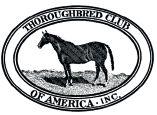














Te organization’s tagline — “Connecting people to art, culture, and creativity” — neatly summarizes the broad outlook of the Art Center in all its manifestations.
Te Art Center occupies two adjacent historic buildings in the heart of downtown Danville, at 401 and 409 West Main Street. Te primary location at 401 houses the GLASS Museum, art studios, exhibit space, sales gallery, and a ceramics studio. Next door at 409 are an open art studio, classroom, gif shop, and café.
Te 401 building dates from 1909 and was frst a U.S. post ofce and later a federal building. It was restored and renovated in 2003 to become the Art Center. Te 409 building is a 1908 structure that has housed shops and businesses over the years.
Taken together as a kind of art campus, they have made the Art Center, with its community-engaging programs and prominent location, a focal point of the downtown master plan prepared by the city of Danville. Everything about the site welcomes people to come and create art and soak up the ambience of an artistic community.
‘‘
MAKING ART ACCESSIBLE TO ALL IS AT THE CORE OF OUR MISSION.”
—Laura Elwyn, acting executive director
“Making art accessible to all is at the core of our mission,” Elwyn said. “Te people who come to the Art Center represent all levels of expertise and backgrounds, from those who have been artists half their lives to others just getting started.”
Regardless of their starting point, Art Center participants can take advantage of a myriad of learning opportunities through classes, workshops, and individual instruction. Tey can learn about oil, acrylic, pastel, and watercolor painting as well as hand-built and wheel-thrown ceramics.
Age-wise, art classes begin with the Mini Makers Club for children 5 and under. A Kids Education Center and summer art camps that recently hosted 400 children underscore the mission of getting children started with art early.
Other youth-oriented programs include a youth advisory council that gives approximately 20 high school students


opportunities for arts advocacy and engagement.
Te Danville Review of Art is a full-color print and online magazine written and edited by middle and high school students that includes opinion pieces, art and book reviews, and commentary. Fall, winter, and spring issues of up to 200 pages each are planned.
Some people bring a background of artistic accomplishment to the Art Center and use its facilities to hone their skills and even develop new techniques. Terrell Atwood, for instance, has worked with interior designers for years to create wall and ceiling murals for clients’ homes. She has her own studio in the 401 building.
“I’ve been coming to the Art Center for nine years now to paint landscapes and other subjects I just make up,” she said. “I also take some of my photographs and print them on paintable paper, then enhance them with color and form.”




Atwood uses the same technique with spectacular photographs of the universe created by the James Webb Space Telescope. Her creative additions bring out myriad dimensions and color that give them new life.
Camic is another example of those accomplished artists who have found new creative fulfllment at the Art Center. He taught painting, drawing, ceramics, sculpture, and photography at Boyle County High School in Danville for many years and now uses his membership in the ceramics studio to further develop his skills.
“I mostly make things that are useful,” Camic said. “Bowls, mugs, pitchers, and vases. I also do tiny vases and pitchers only an inch tall, which are as hard to make as larger ones.”
Camic also crafs a somewhat unusual object — ceramic wine glasses. “Te cup is the easy part, but you have to practice a lot to be able to make a hollow stem and then join it to the cup. Tat’s a pretty good trick.”
With his art teaching experience, Camic is able to ofer assistance to fellow ceramicists. “Sometimes we work on a project together, and if I see someone struggling I can usually help out.”
Ten there is Mary Conley, president of the Art Center’s board of directors. She enjoys painting while helping with the leadership necessary to steer the organization through its capital campaign and expansion.
“My mother is an artist and my husband is a potter, so I grew up with art and it’s always been a part of my life,” she said. “I have taken many classes, and I like to do the Tiny Art show, where we create paintings that are six inches square for sale as a fundraising activity.”
Conley was Boyle County treasurer for nearly 30 years and uses her fscal and organizational skills as a member of the ArtSee capital campaign committee. Phase I of the drive has been completed and funded renovation of the 409 building to include the Fern curated gif shop and the Murrini Café. A later phase will restore the third-foor ballroom of that building and add a small glassblowing studio, among other projects.
Te most dramatic result of Phase I was the opening of the GLASS National Art Museum in the

401 building. Its holdings encompass more than $2 million worth of Powell’s work and spotlight his development as a hot glass artist. Te museum will also exhibit works by Dale Chihuly and Lino Tagliapietra, along with those of other prominent glass artists.


“We have 84 of Stephen’s museum-quality pieces,” said Emma Scott, museum director. “Not all of it is on display, and we rotate pieces in and out. Some of his early works are included, particularly in a timeline of the American studio glass movement interspersed with his works that fall into those periods.”
Te Art Center facilitates meetings and other events among like-minded artistic groups and for the general public through a full schedule of cultural conversations, lectures, and social gatherings. Te expansion into the 409 building, which doubled the organization’s physical footprint, and new funding from the capital campaign are energizing those eforts.
“Our new open studio area in the 409 building is a welcoming and comfortable place where people of all ages can get together and be inspired to be creative,” said Christina Browning, programming director. “You can drop by there every day for our Paint Your Own Pottery opportunity and other projects. Te space is connected to our classroom, which is used for lectures and various group activities.”
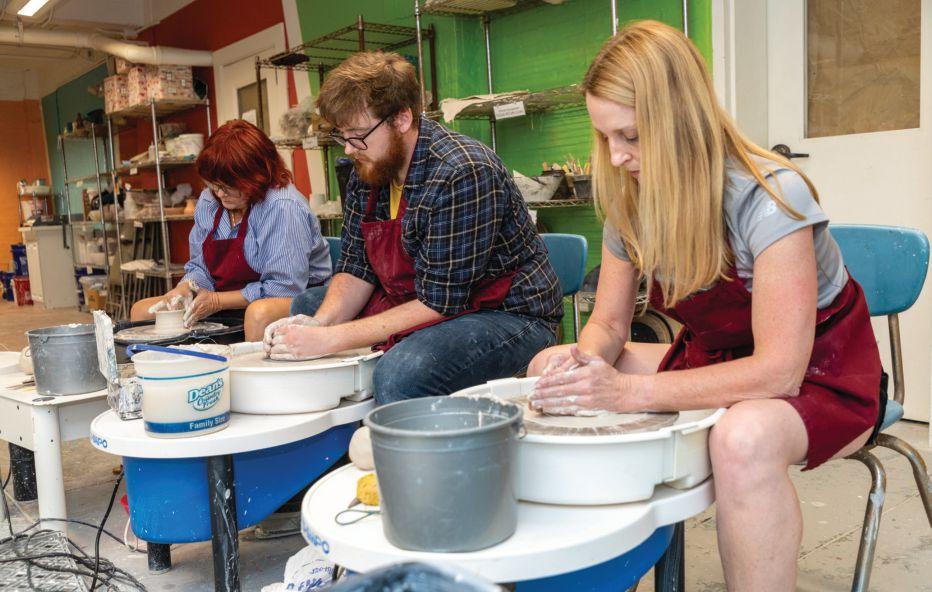
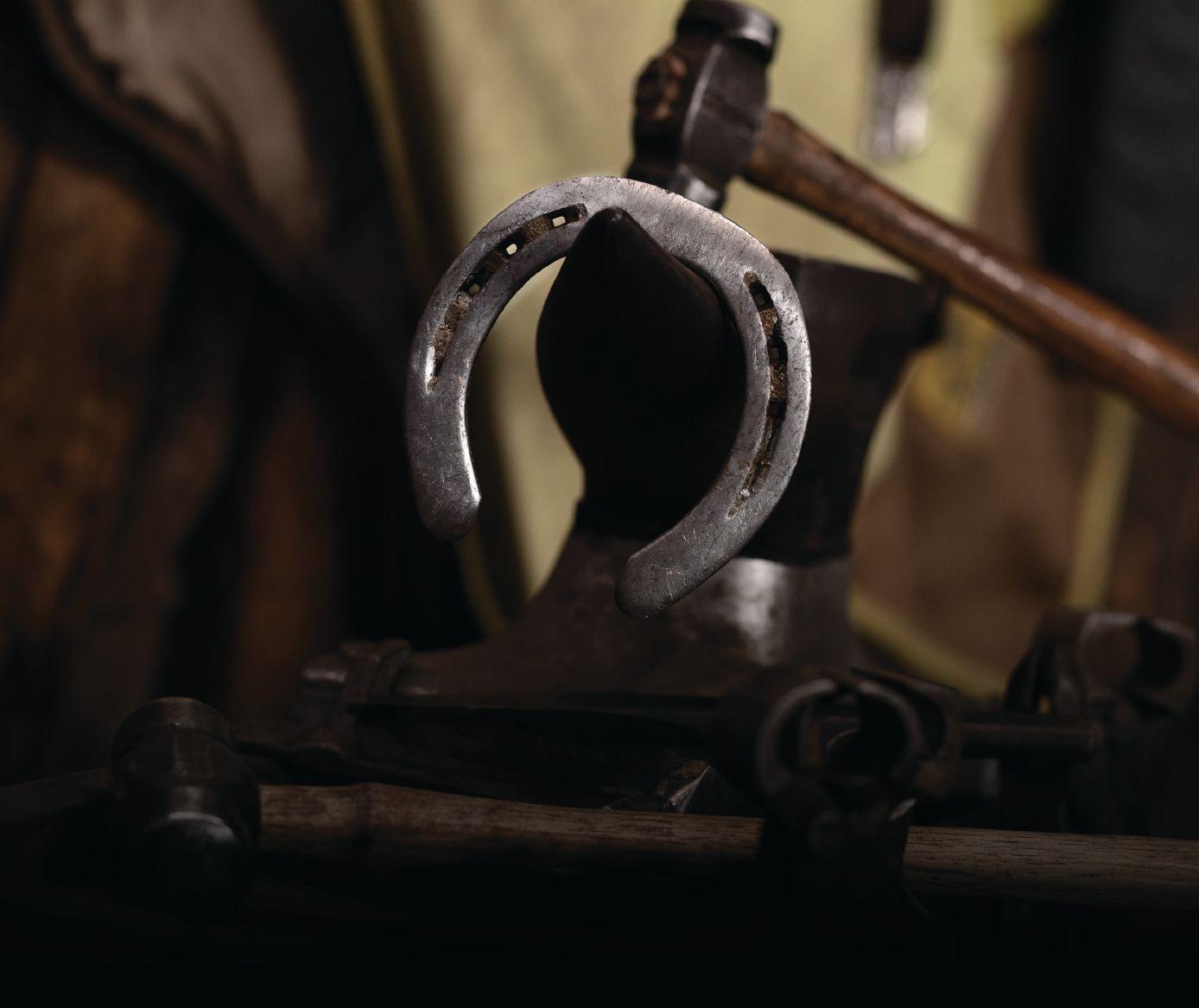
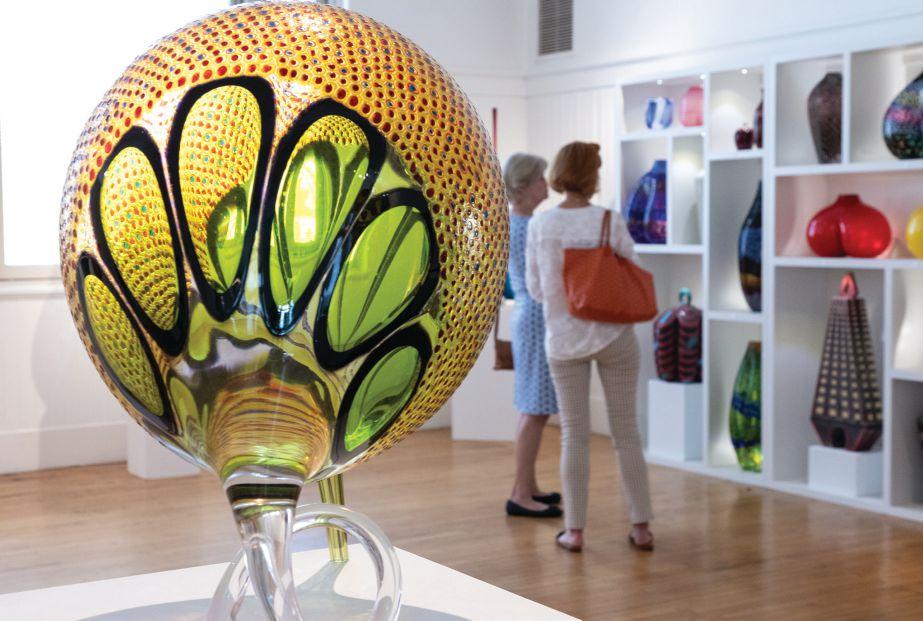

PleinAirArtistsofCentralKentucky, whose members primarily create their work in the open air at parks, nature preserves, farms, and other locations, uses the Art Center as a meeting place and, in winter months, as a painting venue. Te group recently held a reception and showcase of its work at the Main Street Gallery in the 409 building.
Te Arts Appreciation Lecture Series brings together experts, scholars, and artists who share their knowledge and passion for various artistic disciplines. Another popular program is Lunch with the Arts, held at various times during the school year.

Starry Night Studio workshops ofer a learning experience in a socializing atmosphere where wine and charcuterie boxes are available for purchase. Te Cultural Conversations series on race, gender, diversity, inclusion, implicit bias, and equity lets participants challenge stereotypes. And birthday parties, anniversary celebrations, weddings, and other special events fnd a graceful and intimate setting here.
Te Art Center also supports people in their mental health and well-being journeys. “Art can be a very healing infuence,” Conley said. “We’re providing a venue for people to regain confdence in themselves and the community around them.”
One such example is a woman in her mid-80s who lost her husband.
“She comes in for private art lessons with me,” Browning said. “She wants to become creative to help get over her grief. I feel very grateful to be a part of her healing experience.”
Elwyn said that this therapeutic mission also extends to youngsters. “At a time when many schools, unfortunately, are cutting art from their programs, this may be one of the few opportunities where children get exposed to art.”
To further that role, the Art Center has created the “I Am Love” art kit that features a book, an art project and supplies, a fnger puppet, and an interactive guide for parents and teachers. It supports the mind-body connection inherent in the creative process.


Museum director Emma Scott said pieces from the large collection of Powell’s works are displayed on a rotating basis.
Camic is representative of the many artists who have found a home at the Art Center. Making new friends in the ceramicist community has been gratifying and instructive.
“When I see someone doing a diferent thing, I ask, ‘How do you do that?’ Tat’s how we learn. It’s been a kind and generous group to be a part of. I hadn’t been working with any group of artists before coming to the Art Center, and it’s been a joyful experience.”

The museum has 84 of Powell’s works.
Elwyn believes the Art Center is having an important efect on Danville and the region. “We are changing the art ecosystem in our area,” she said. “Art is as essential as the air we breathe. We are showing that art is alive and well in Danville.” KM
The Art Center of the Bluegrass is one of three nonproft organizations chosen as benefciaries for the initial phase of Maker’s Mark and Keeneland’s new “Greats of the Gate” series of commemorative bourbon bottles.
Bottles in the series will be released over a 10-year period and will honor a different iconicThoroughbred each year, beginning this year with the legendary Man o’War. Profts from the 2024, 2025, and 2026 bottles will beneft the Art Center, Blue Grass Farms Charities, and Kentucky Harvest, with a total of $1.2 million allocated among these three charities over the three-year period.
“We are very honored to be a part of this great tradition,” said Laura Elwyn, acting executive director of the Art Center. “The funds we receive from this venture will be very helpful in furthering our mission of connecting people to art, culture, and creativity. “
Elwyn said the proceeds from the promotion will have a major impact on the $3.65 million ArtSee capital campaign currently underway at the Art Center.The campaign has already allowed the organization to double its physical footprint, open the GLASS National Art Museum, and create new programs.
As a 501(c)(3) nonproft charitable organization, the Art Center relies on a variety of sources for its funding.They include grants, individual and private donors, sponsorships, the Kentucky Arts Council, the National Endowment for the Arts, and fundraising events like the Constitution 5K Run for the Arts in Danville.
» For more information visit artcenterky.org

The Art Center welcomes 30,000 people through its doors each year.

